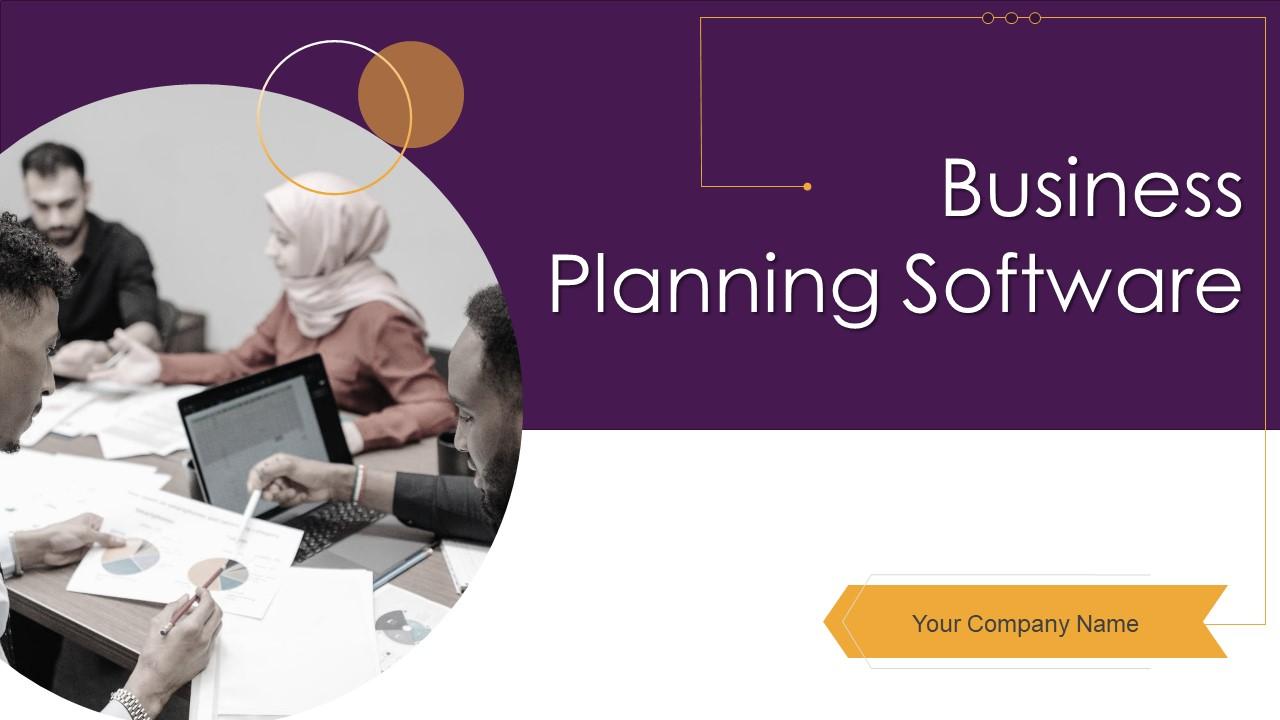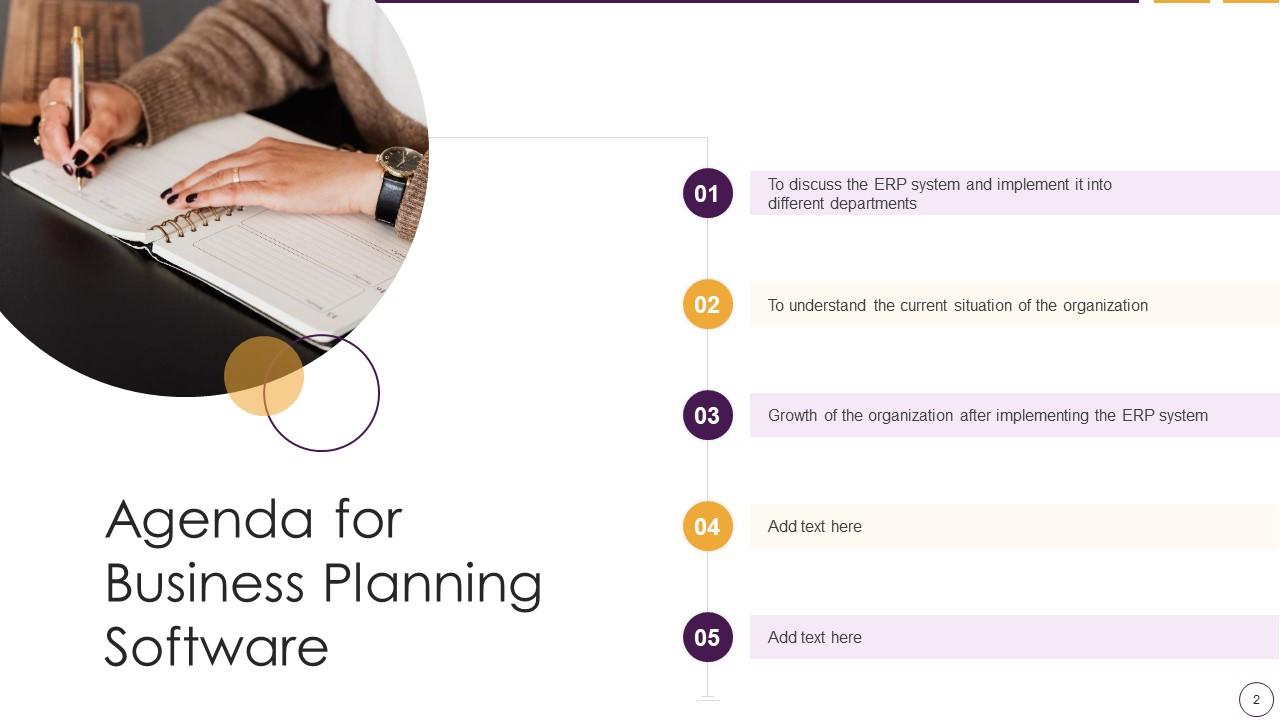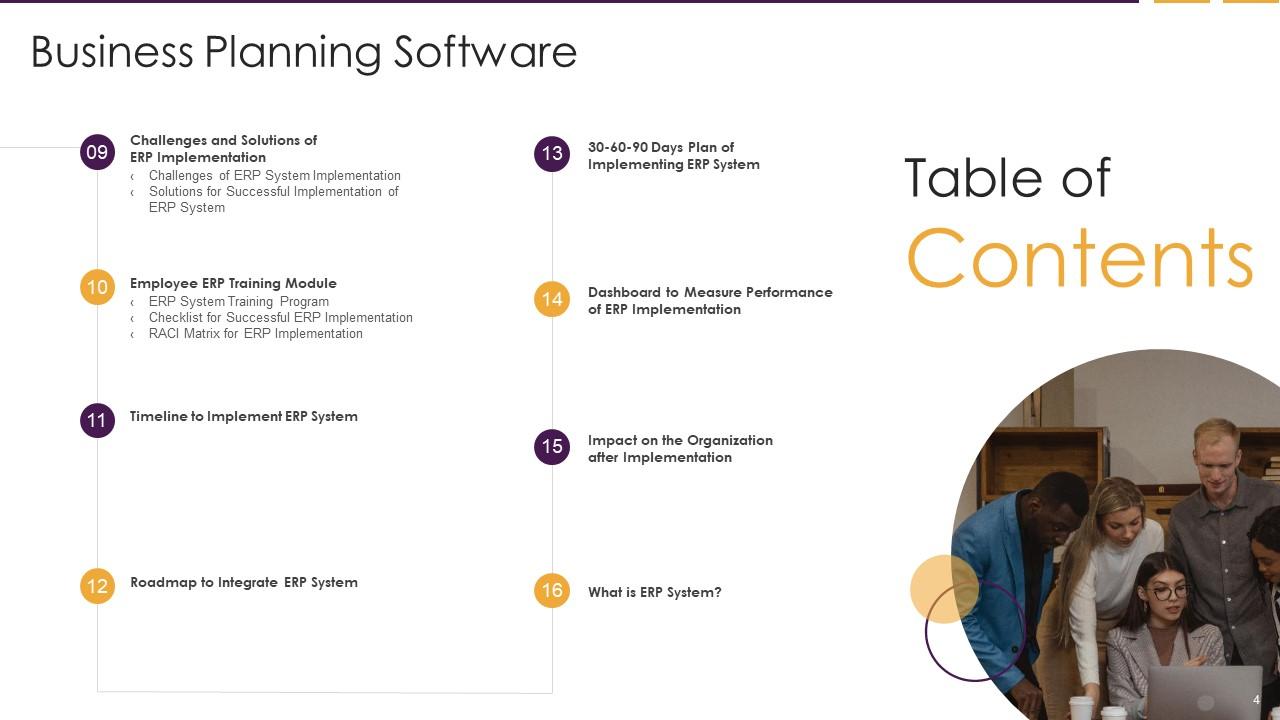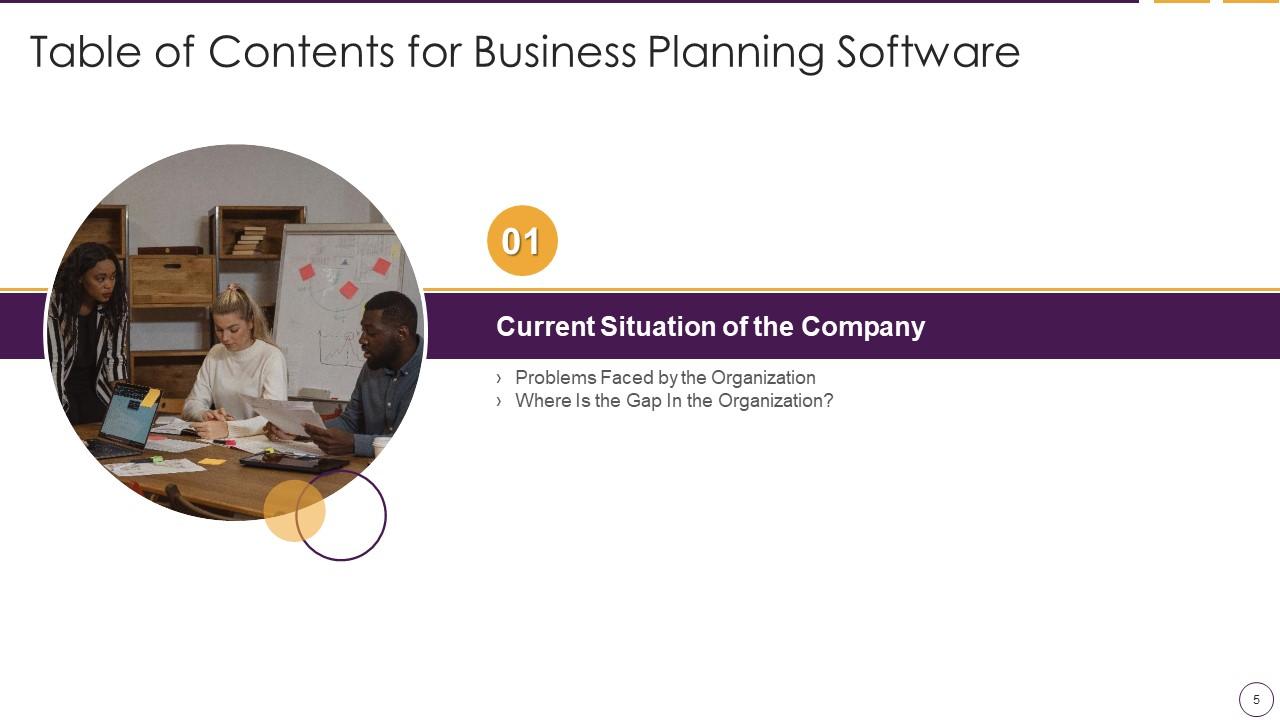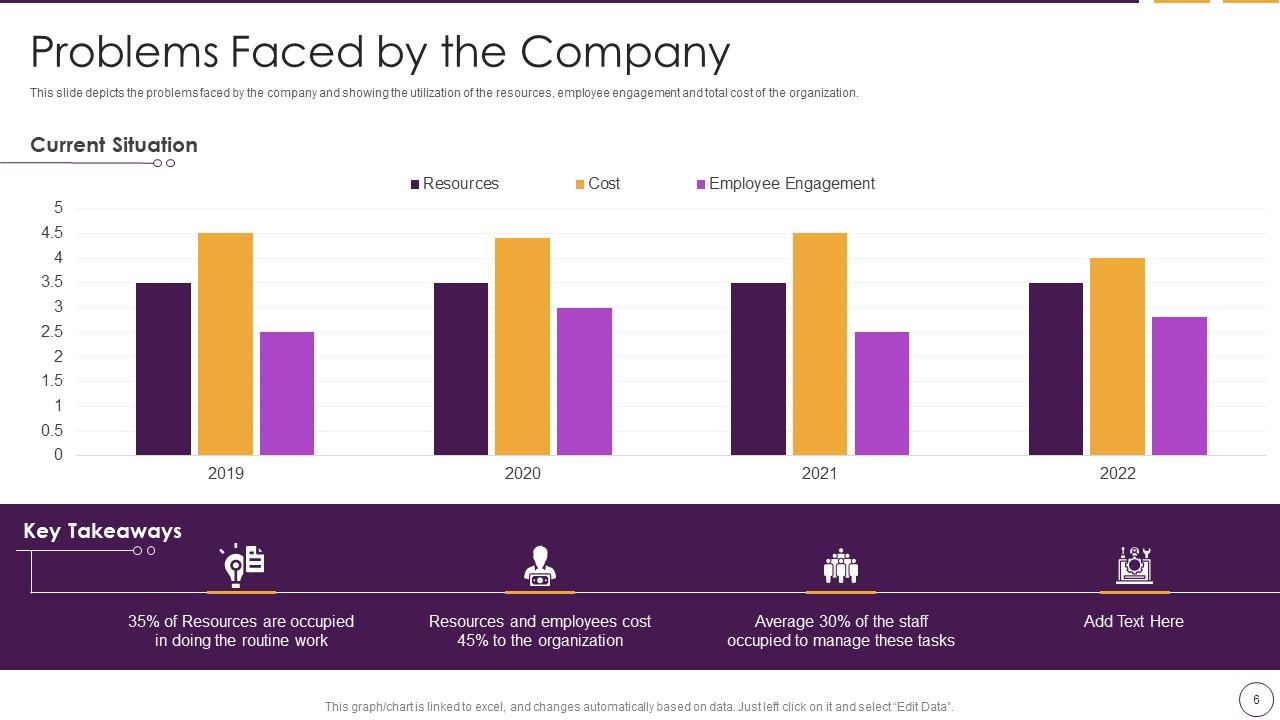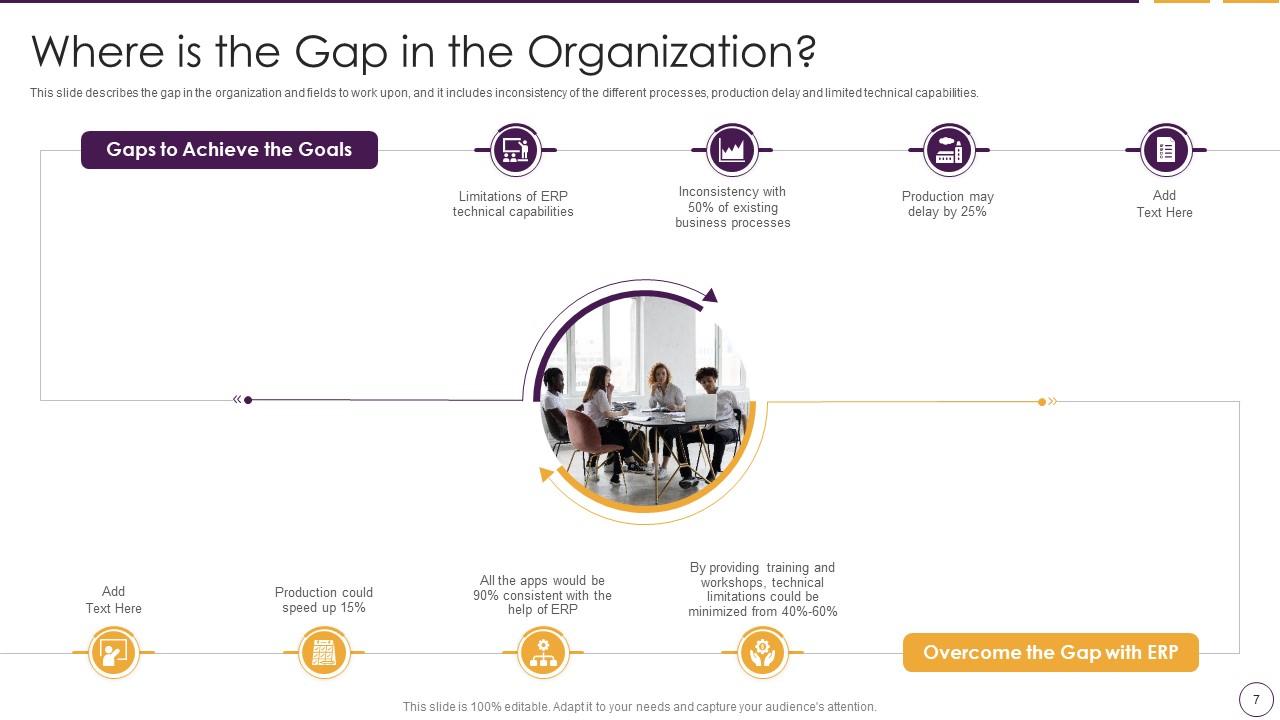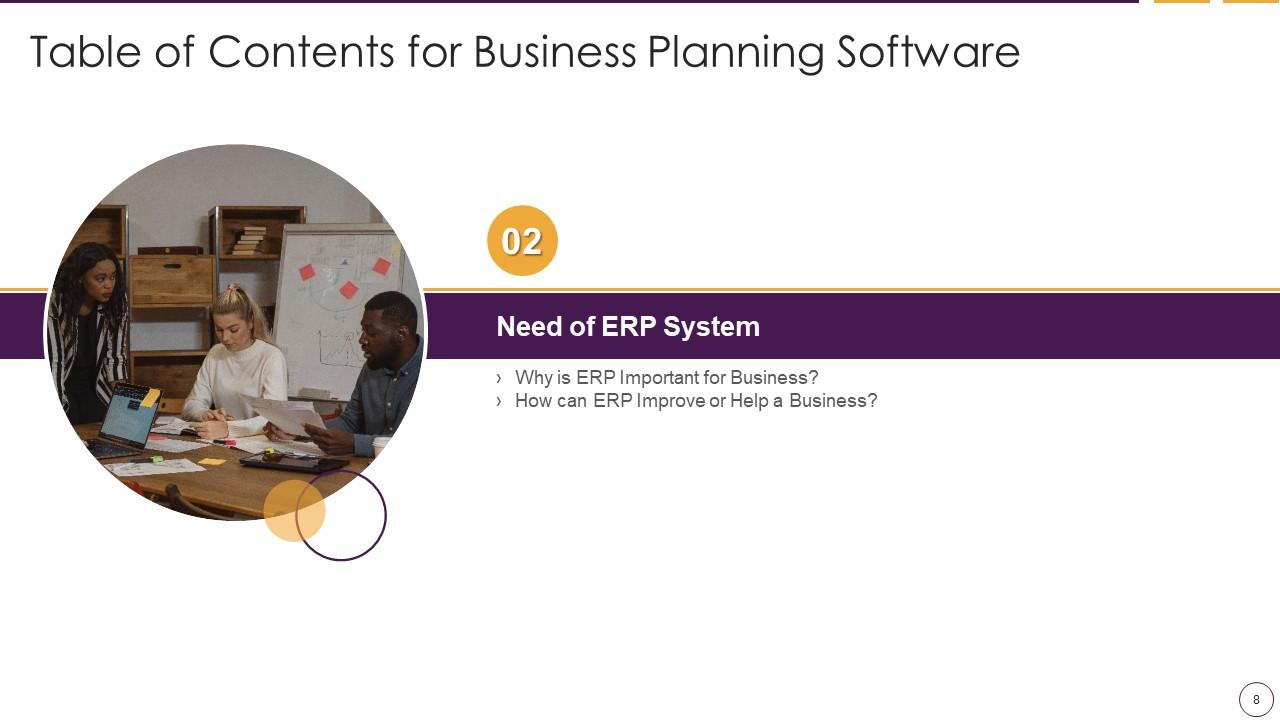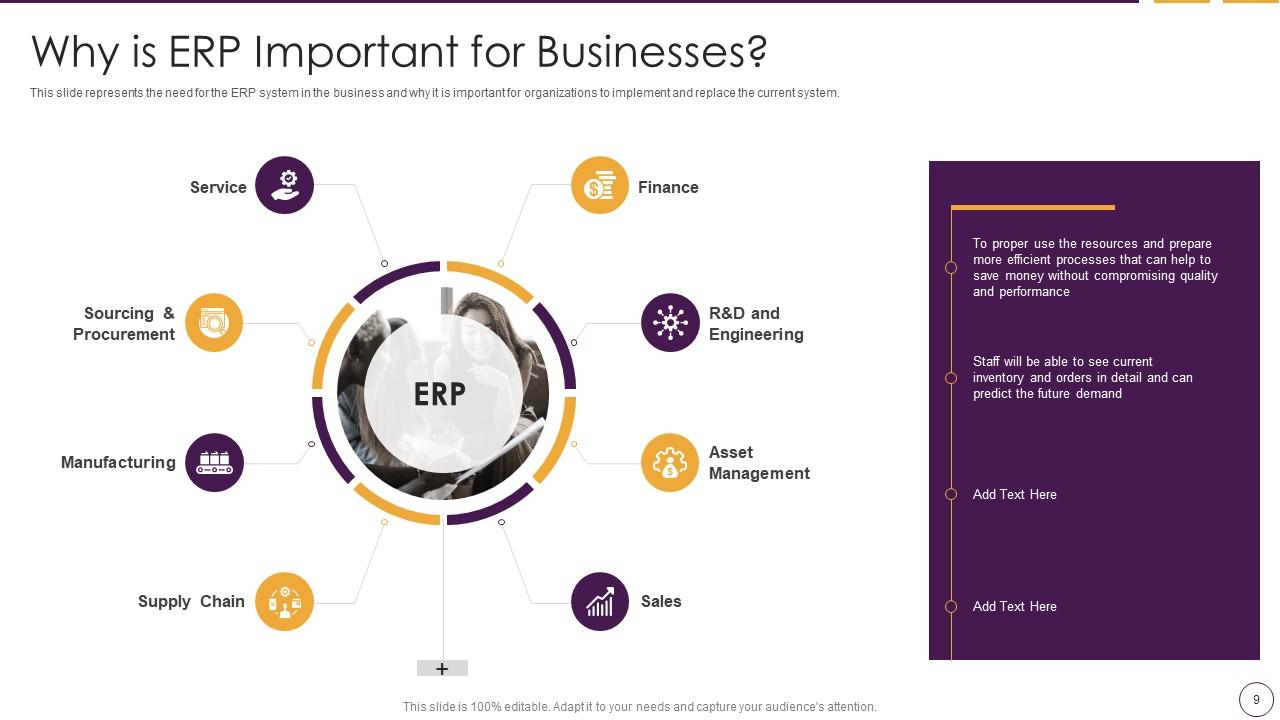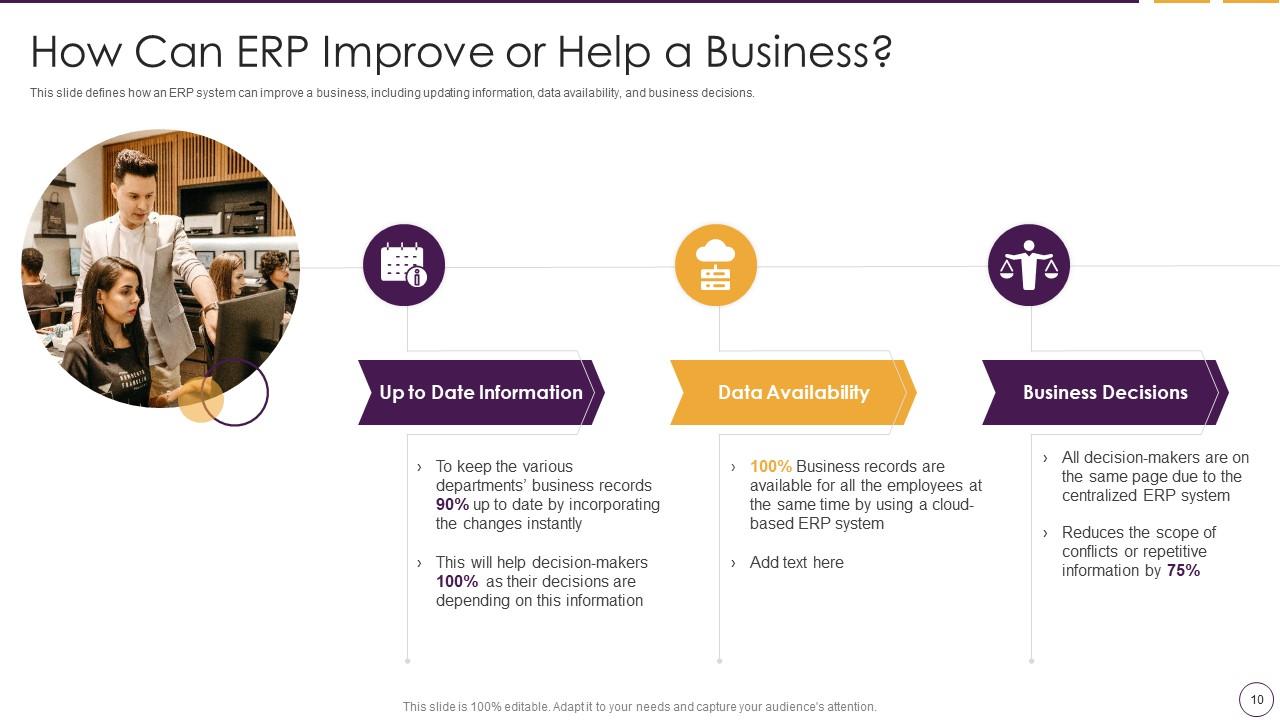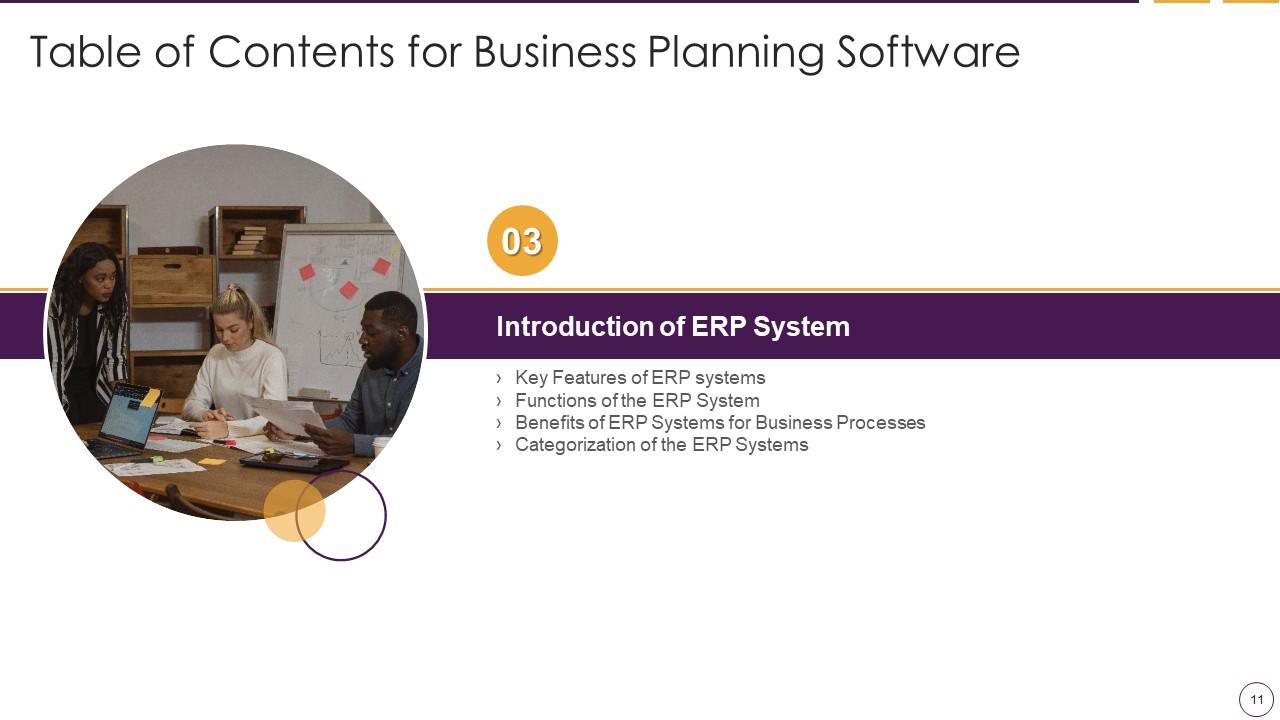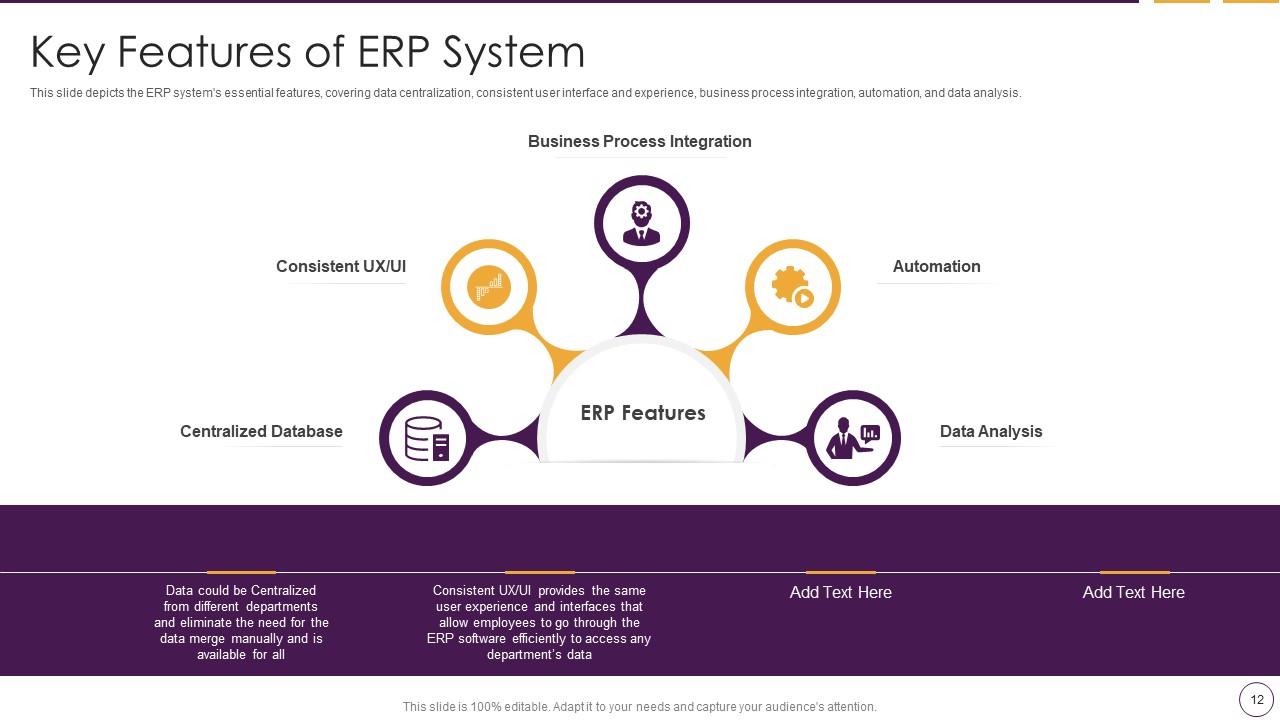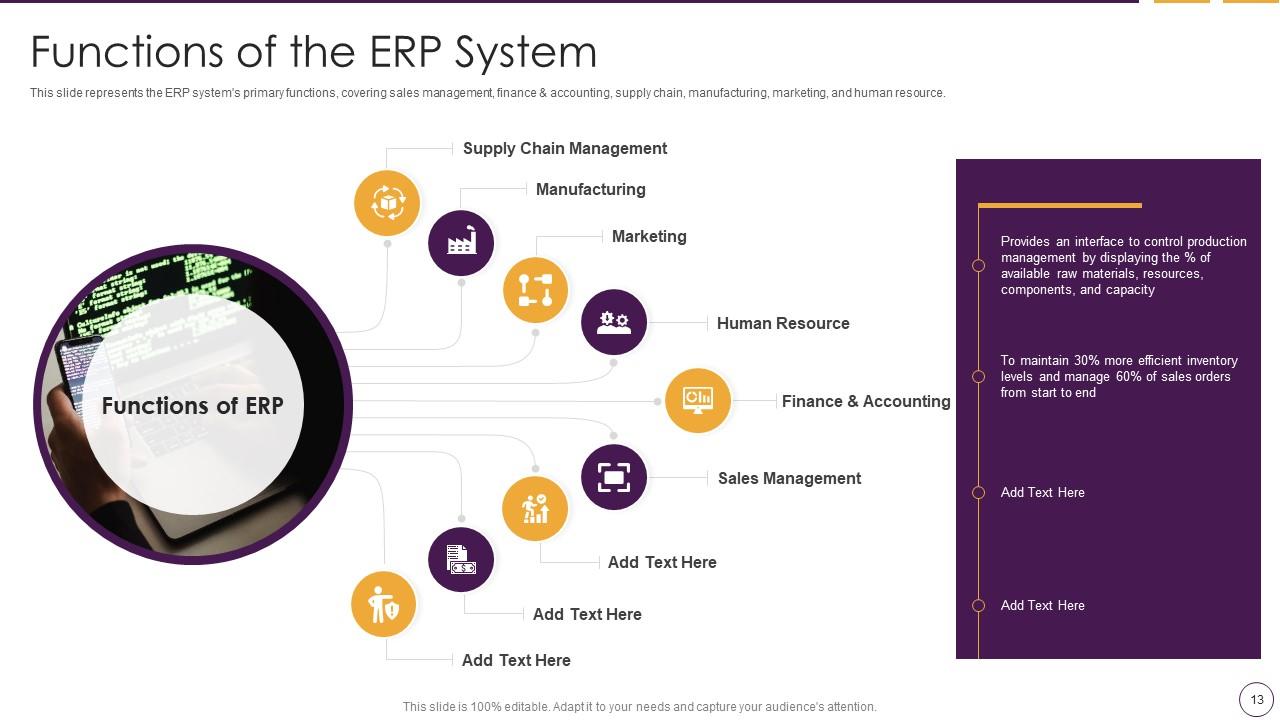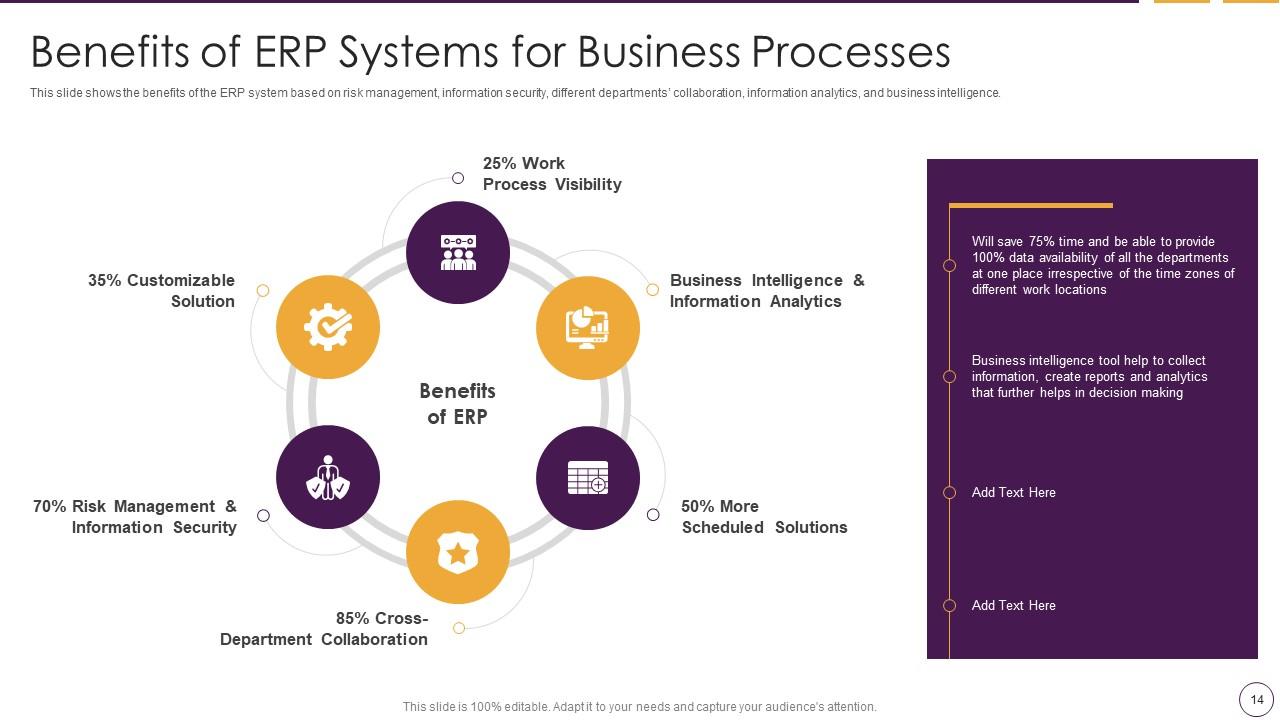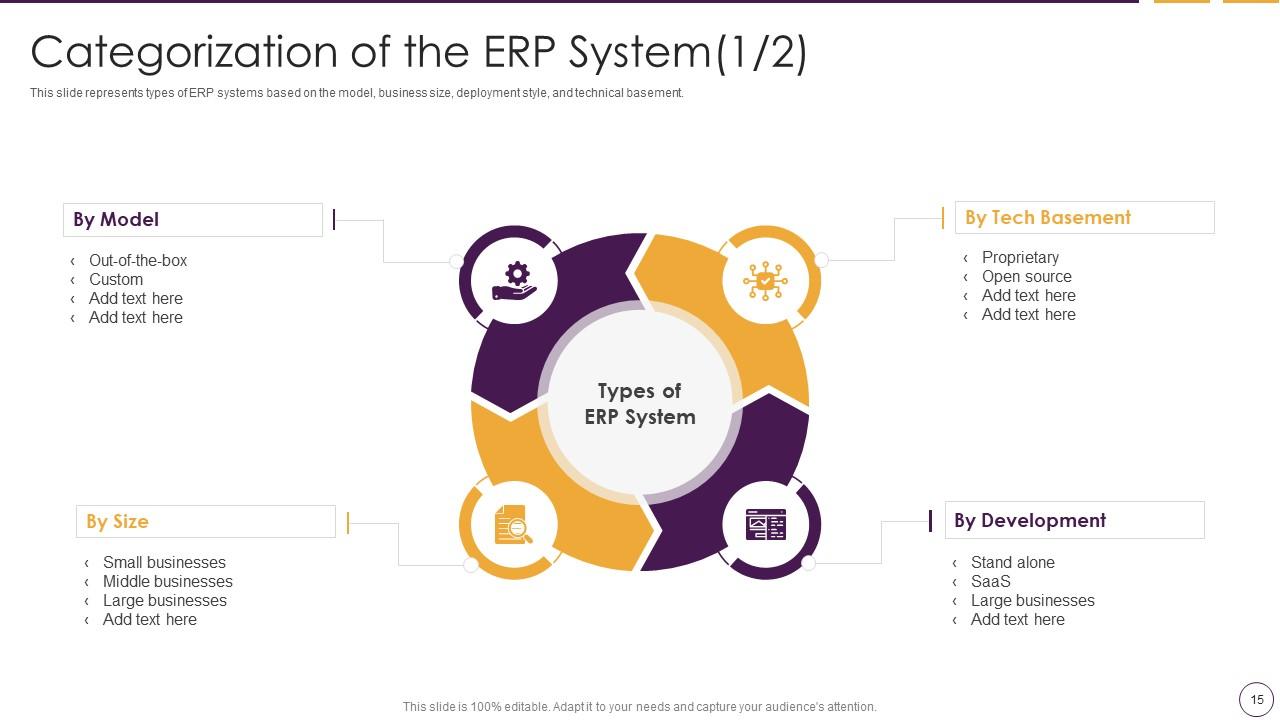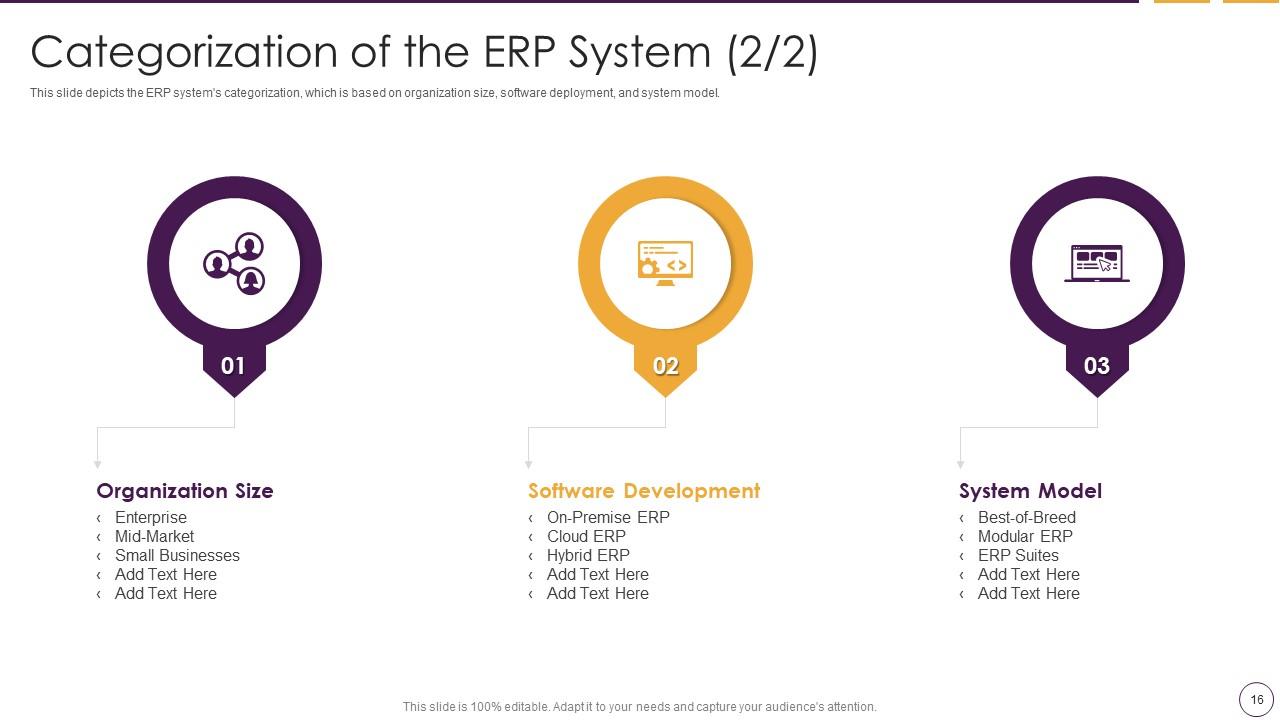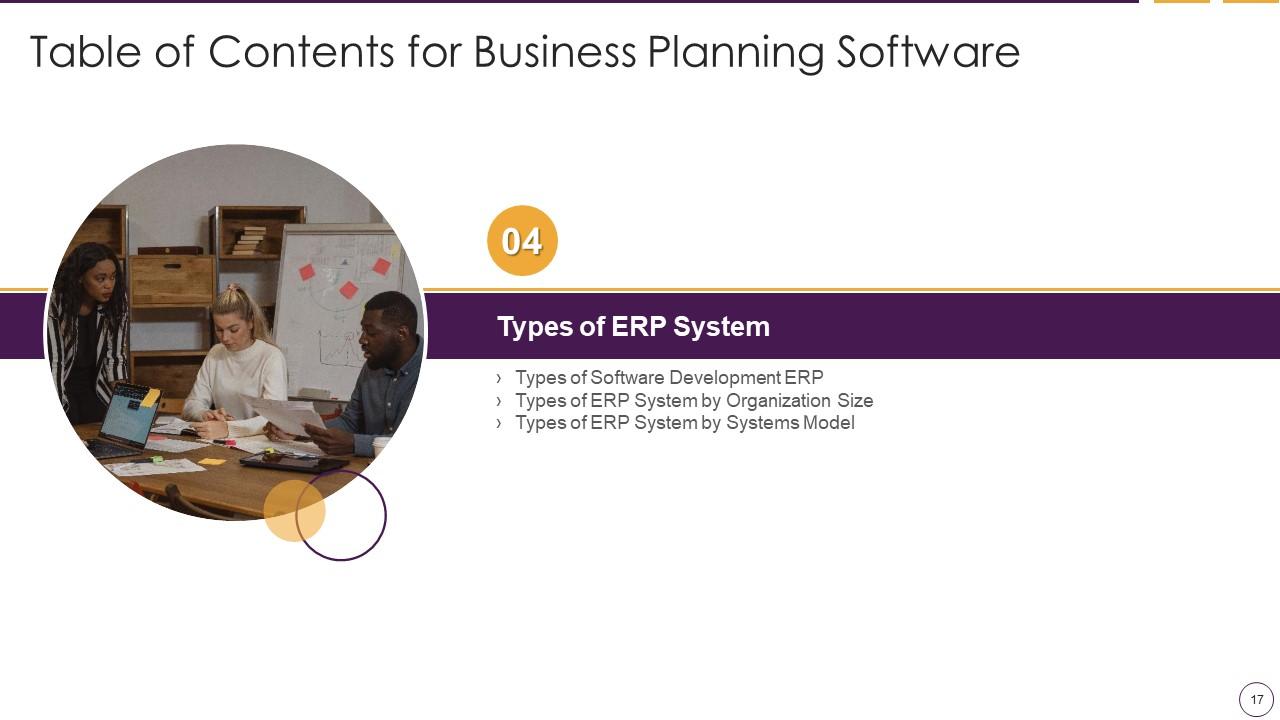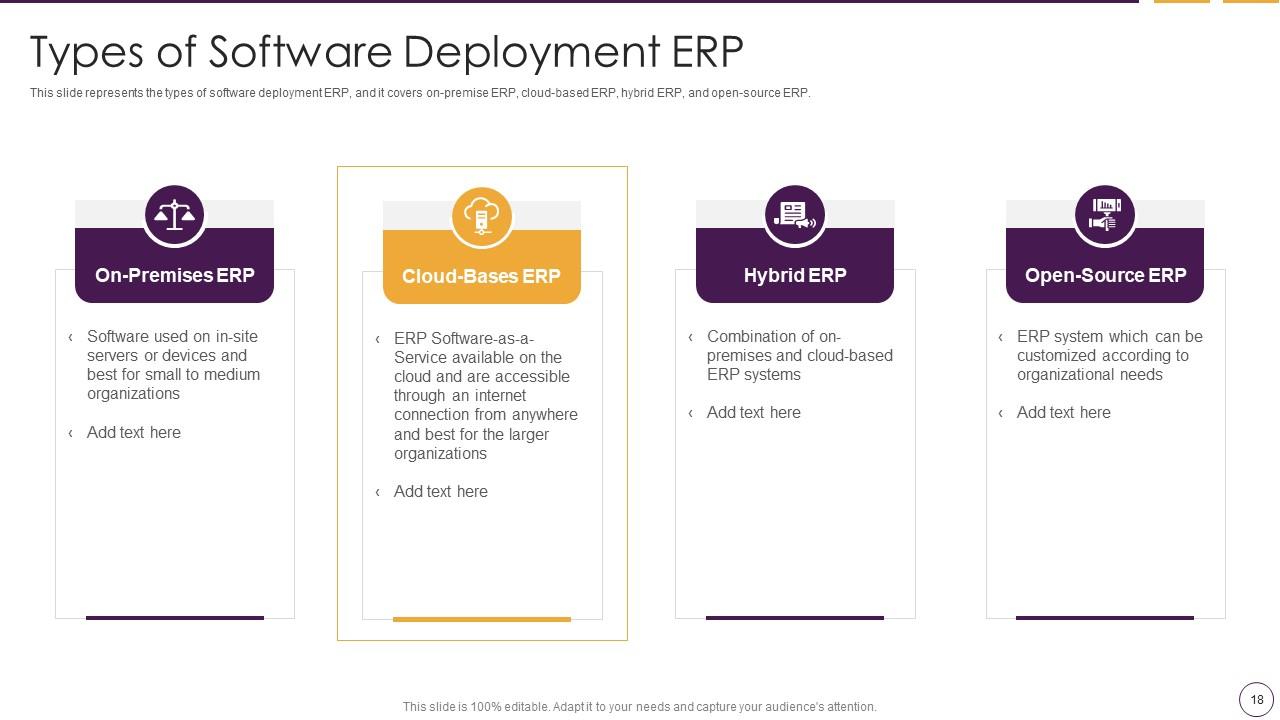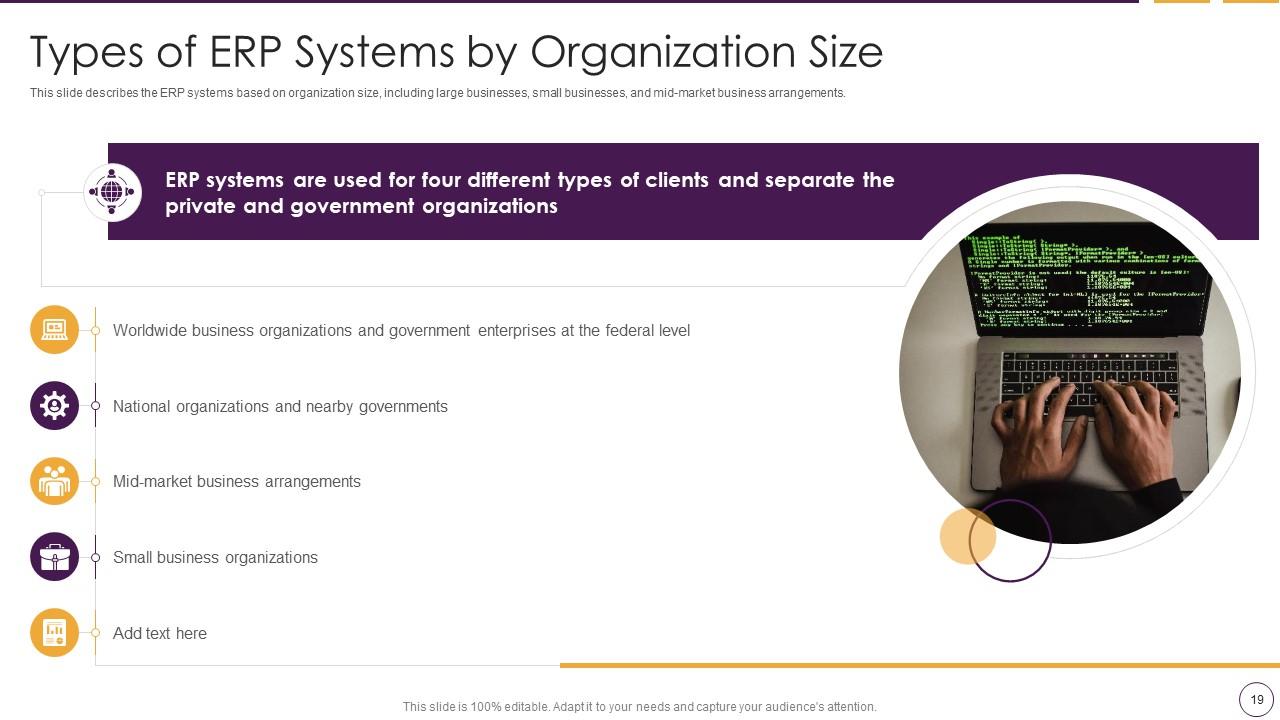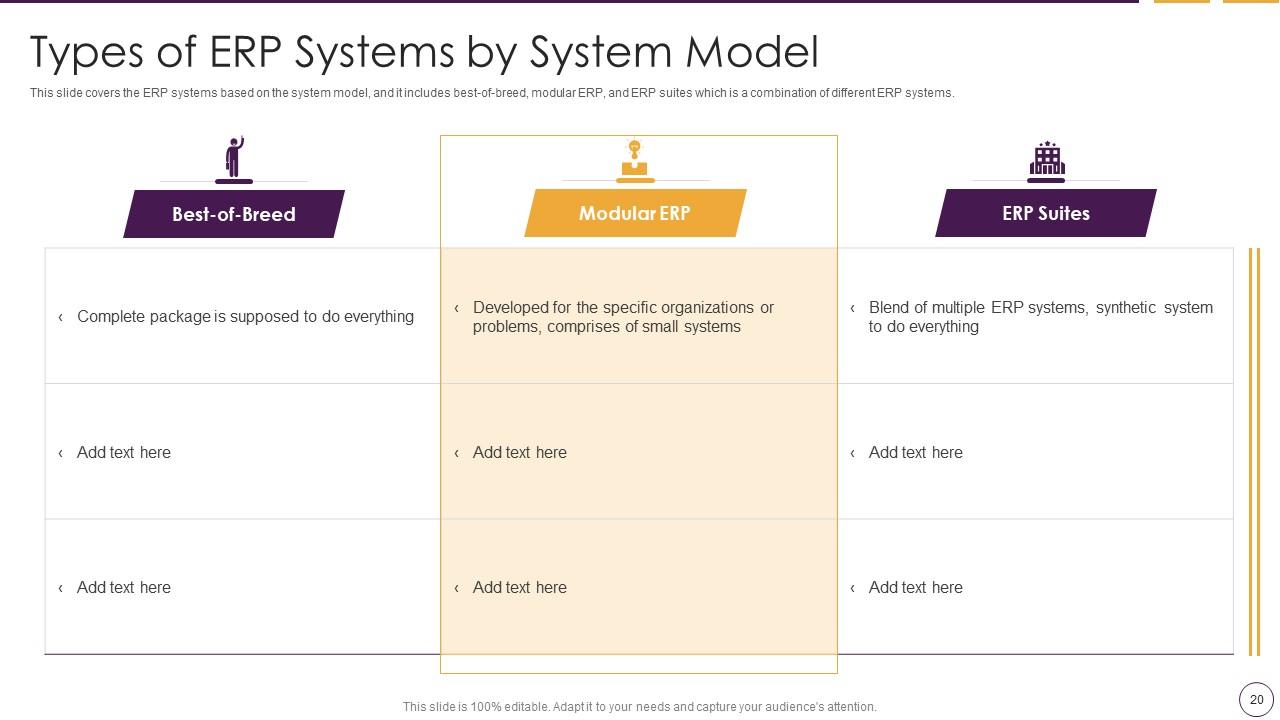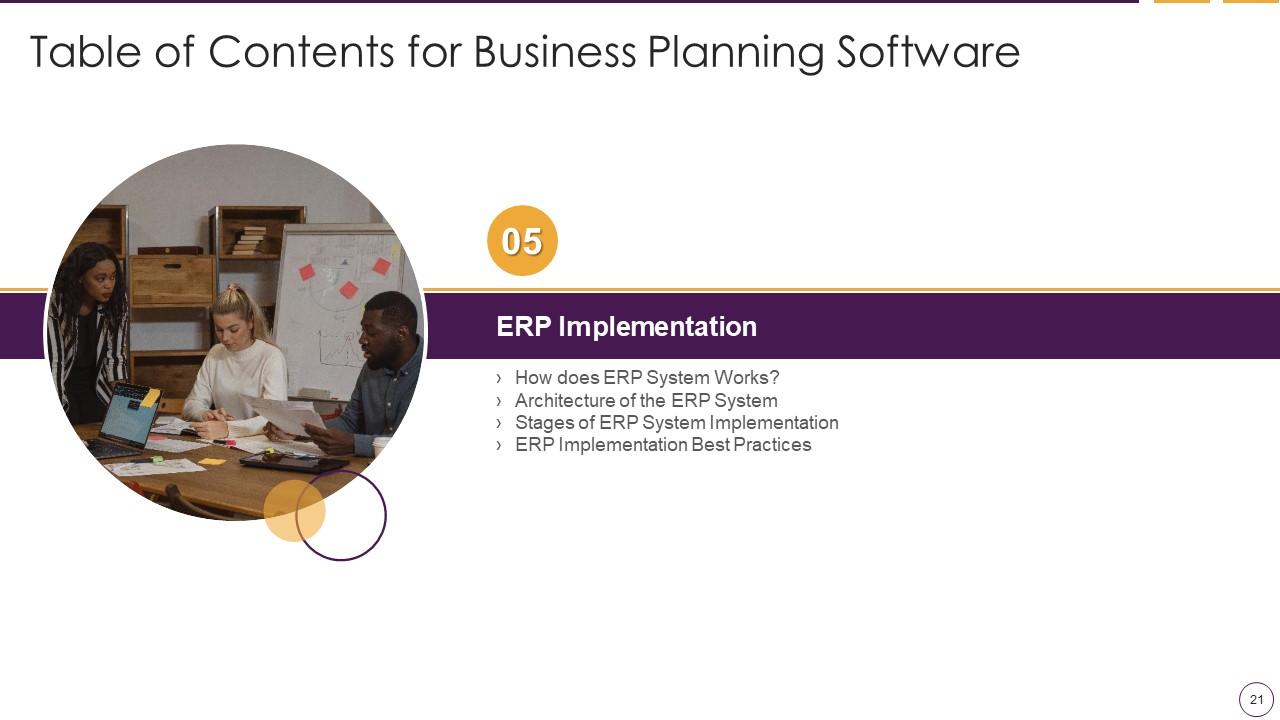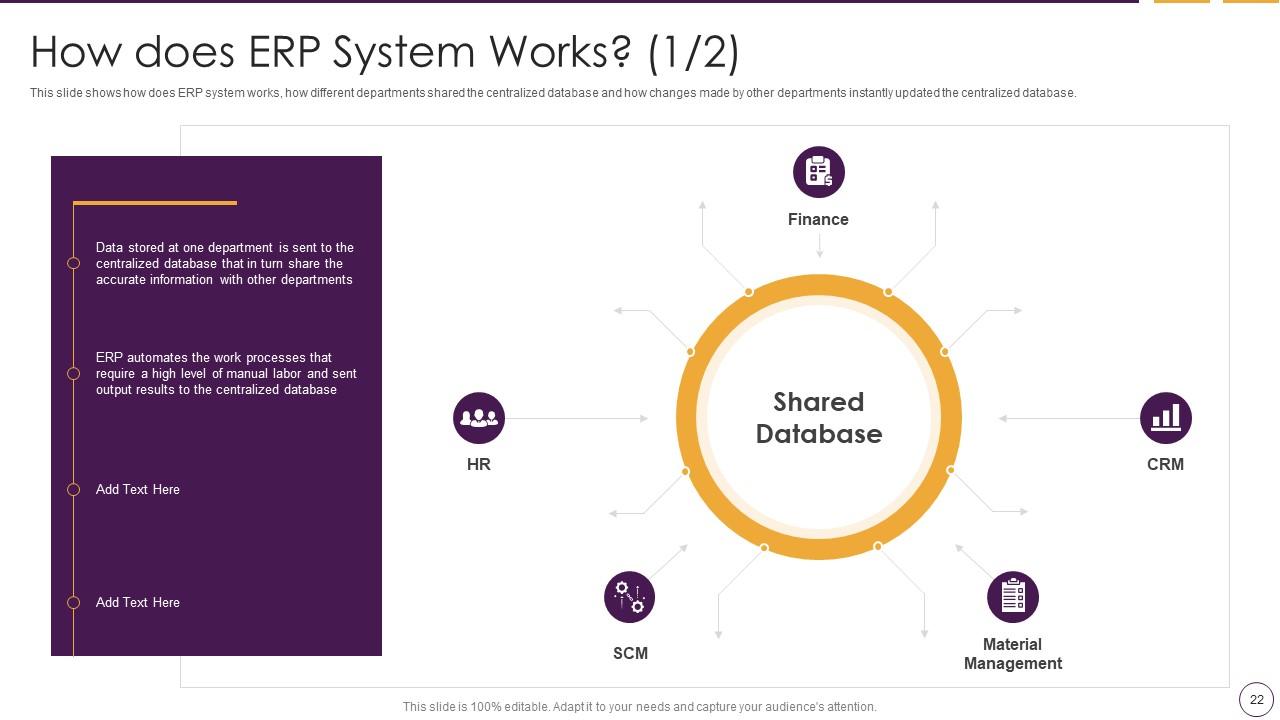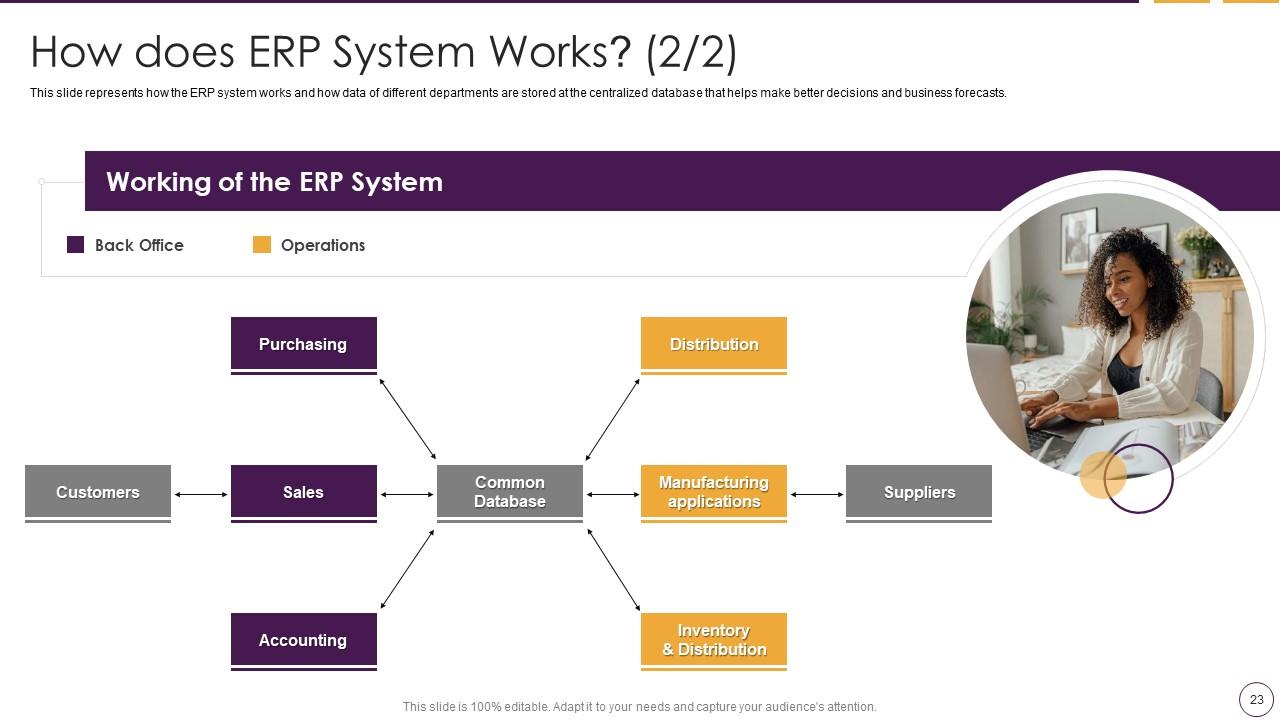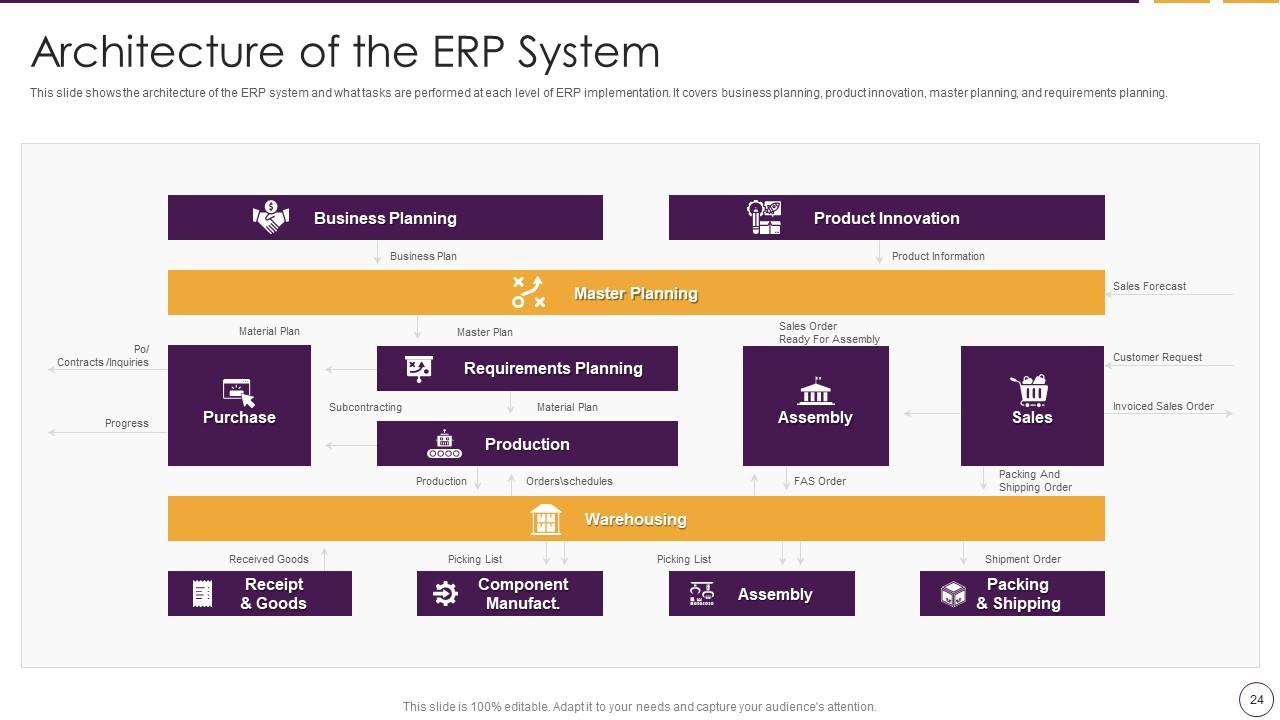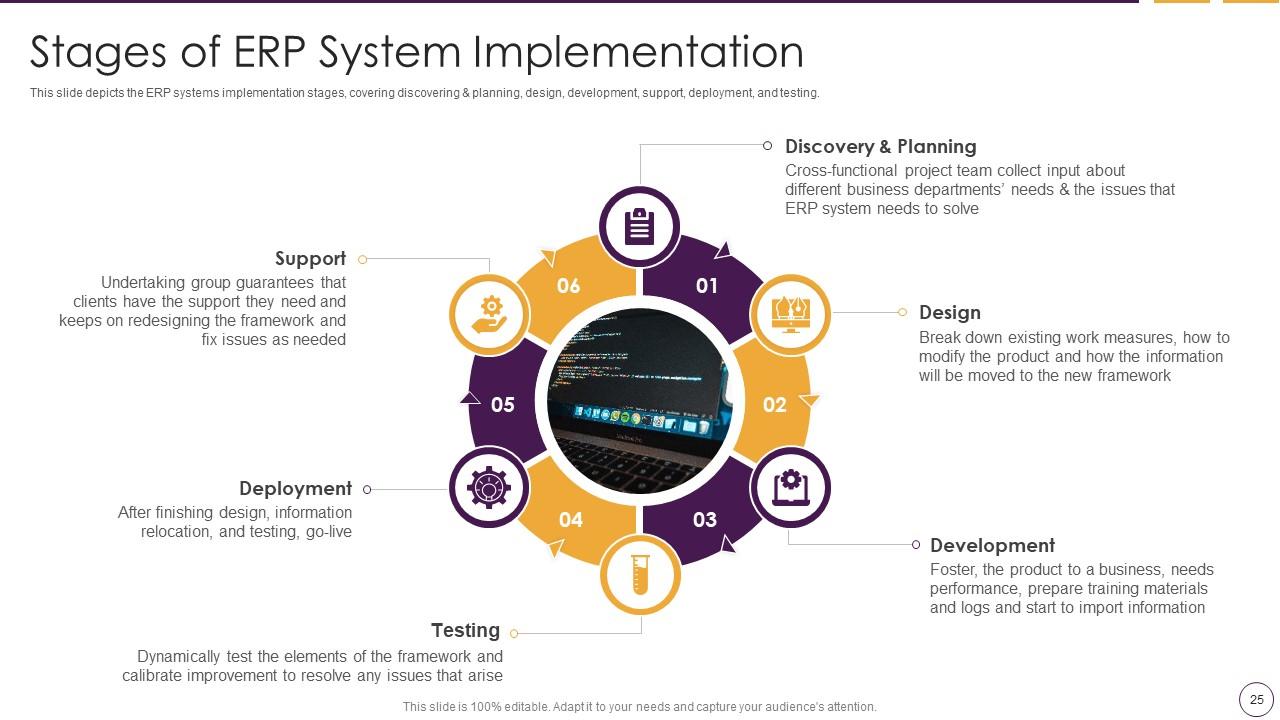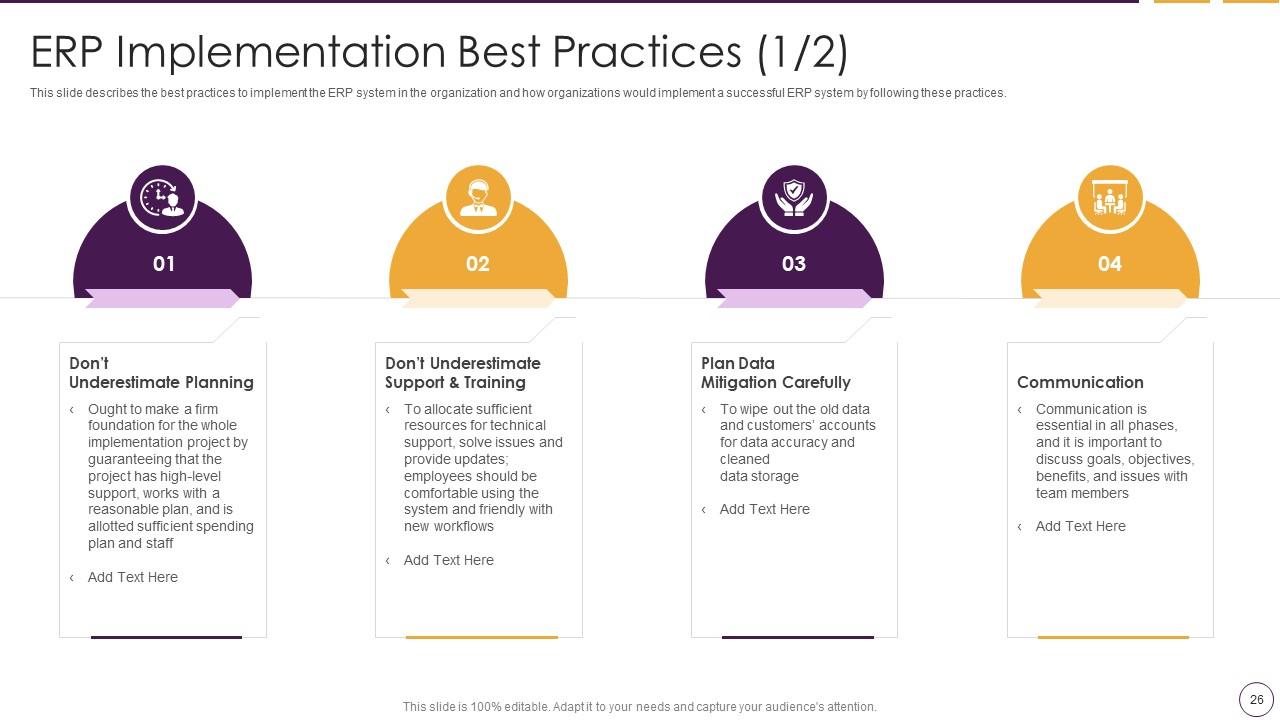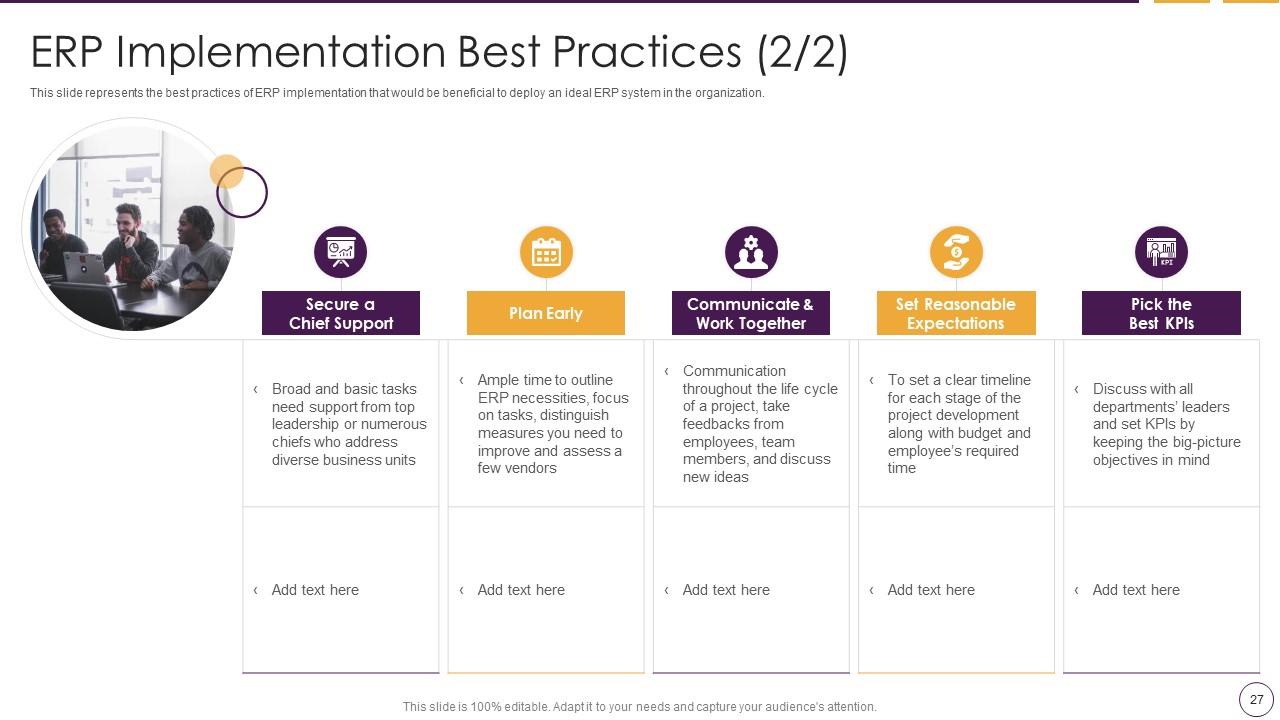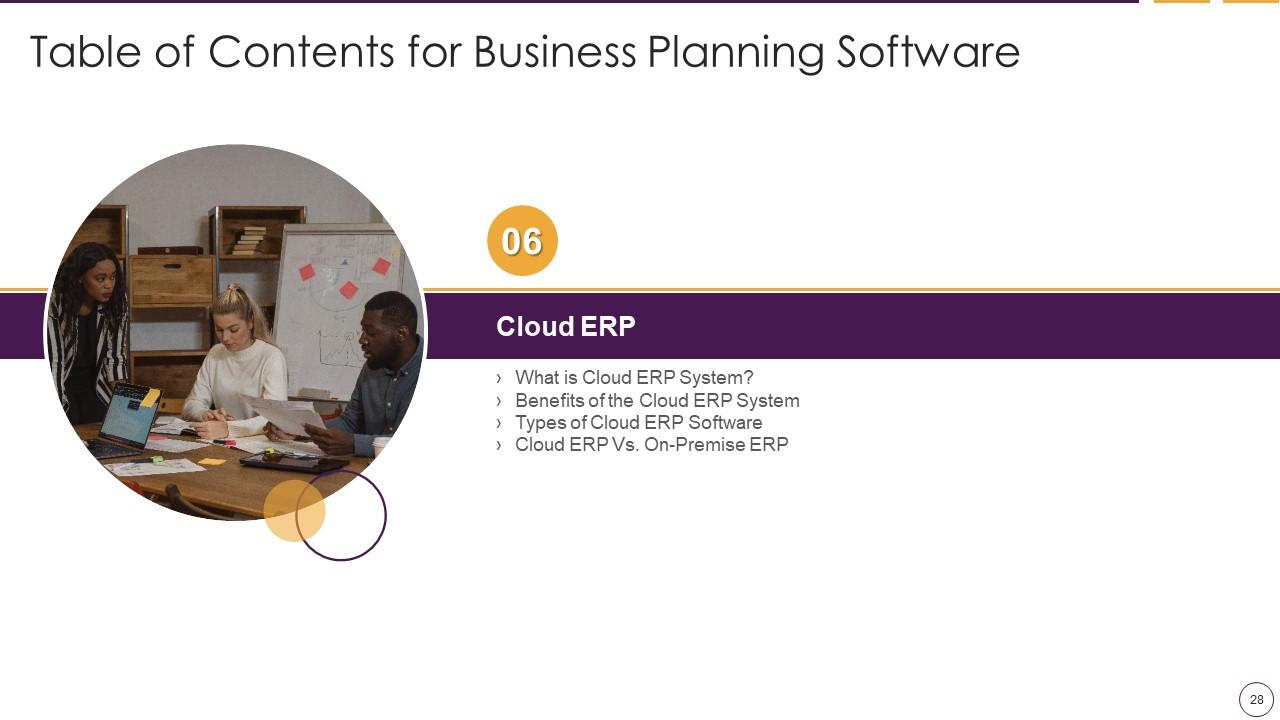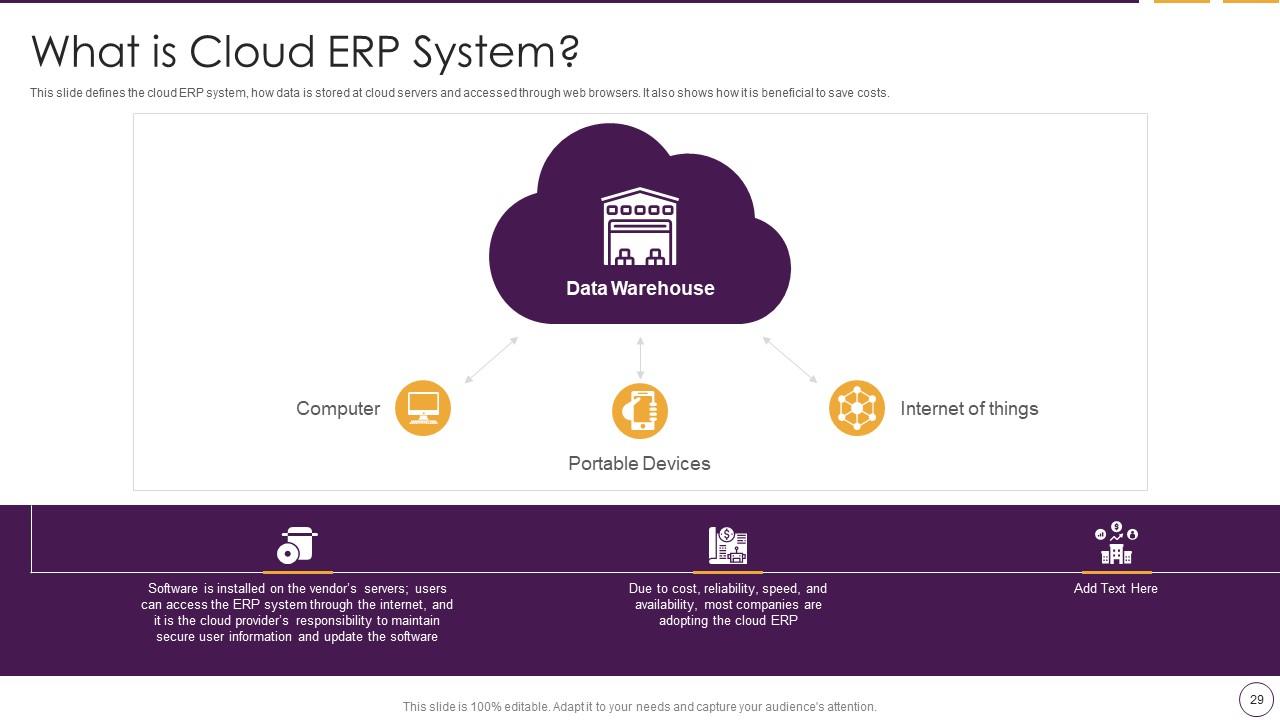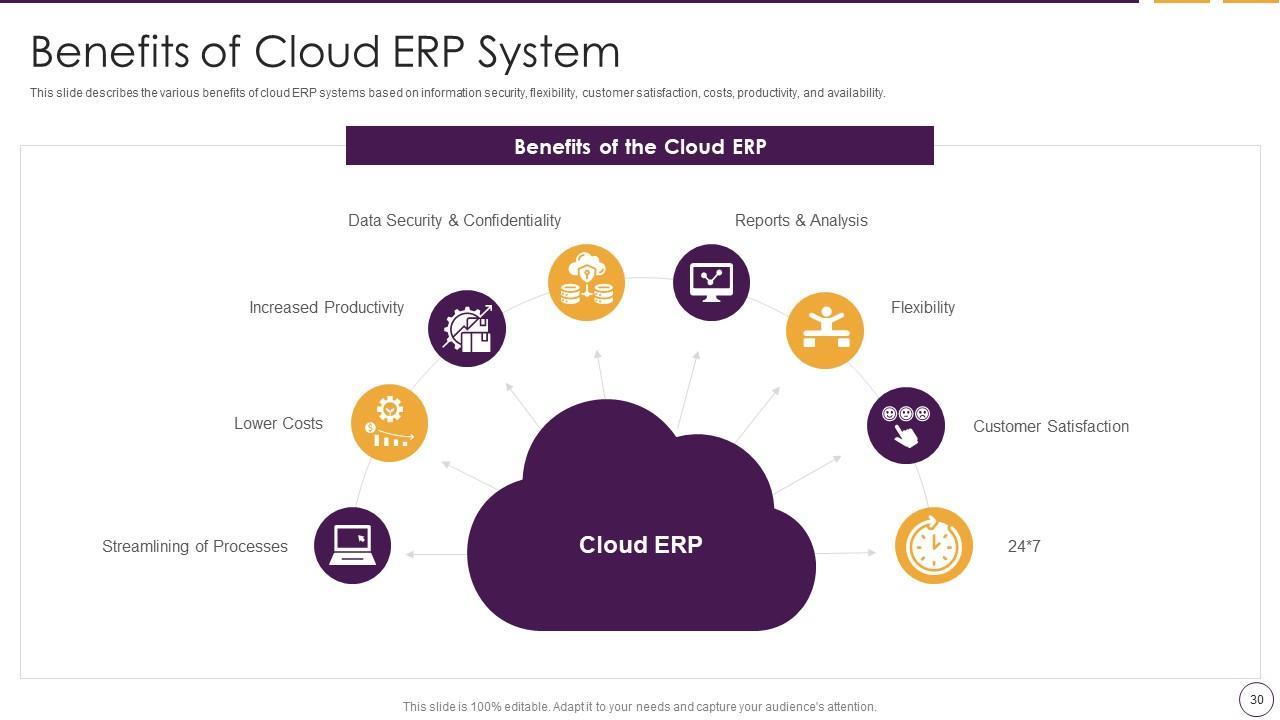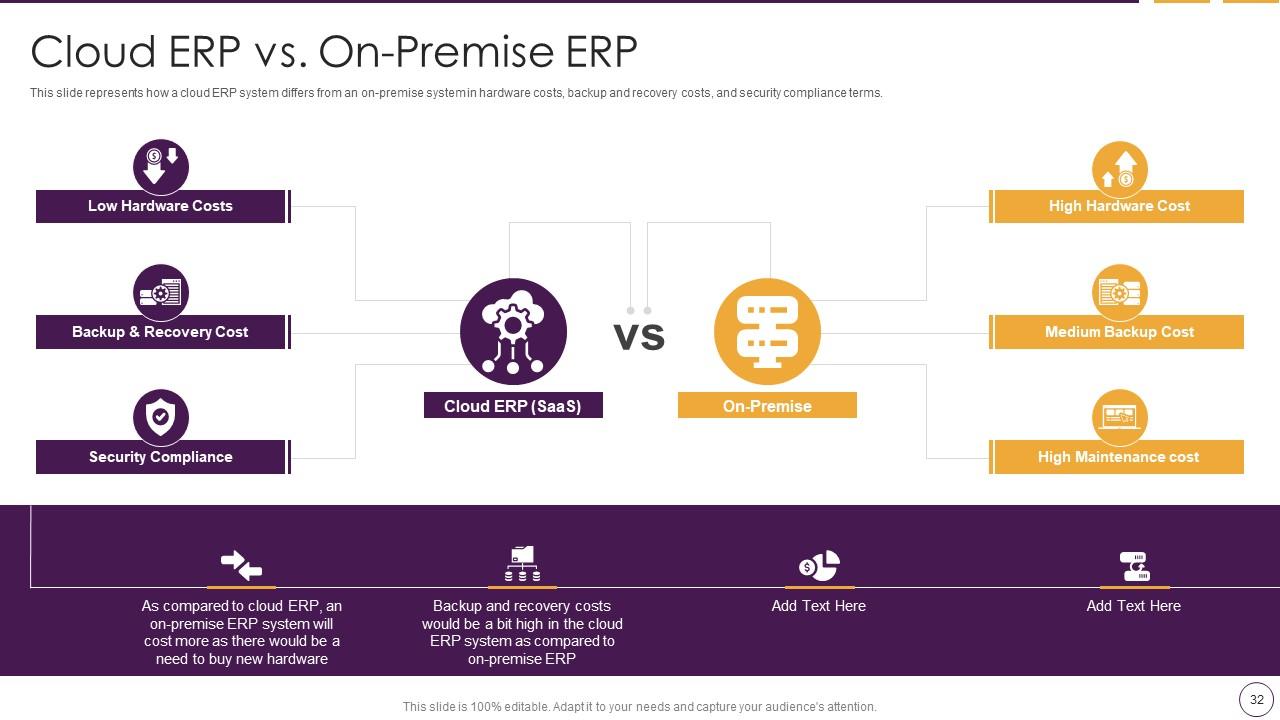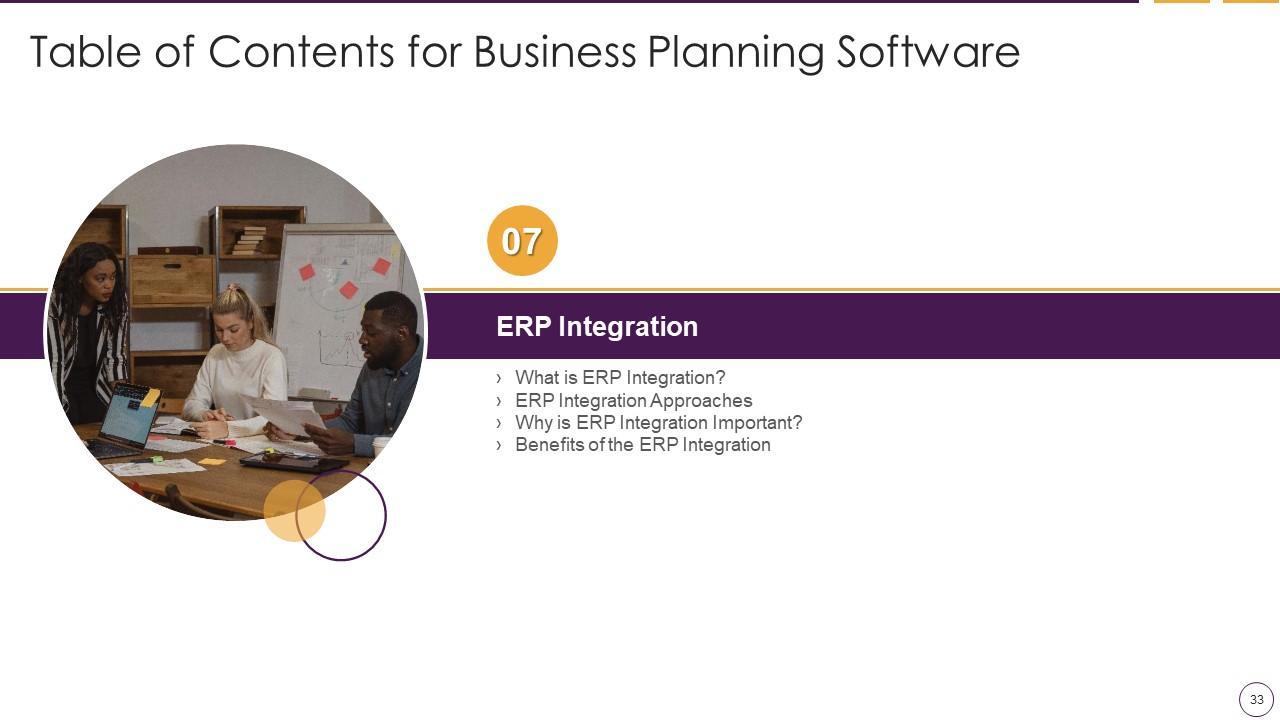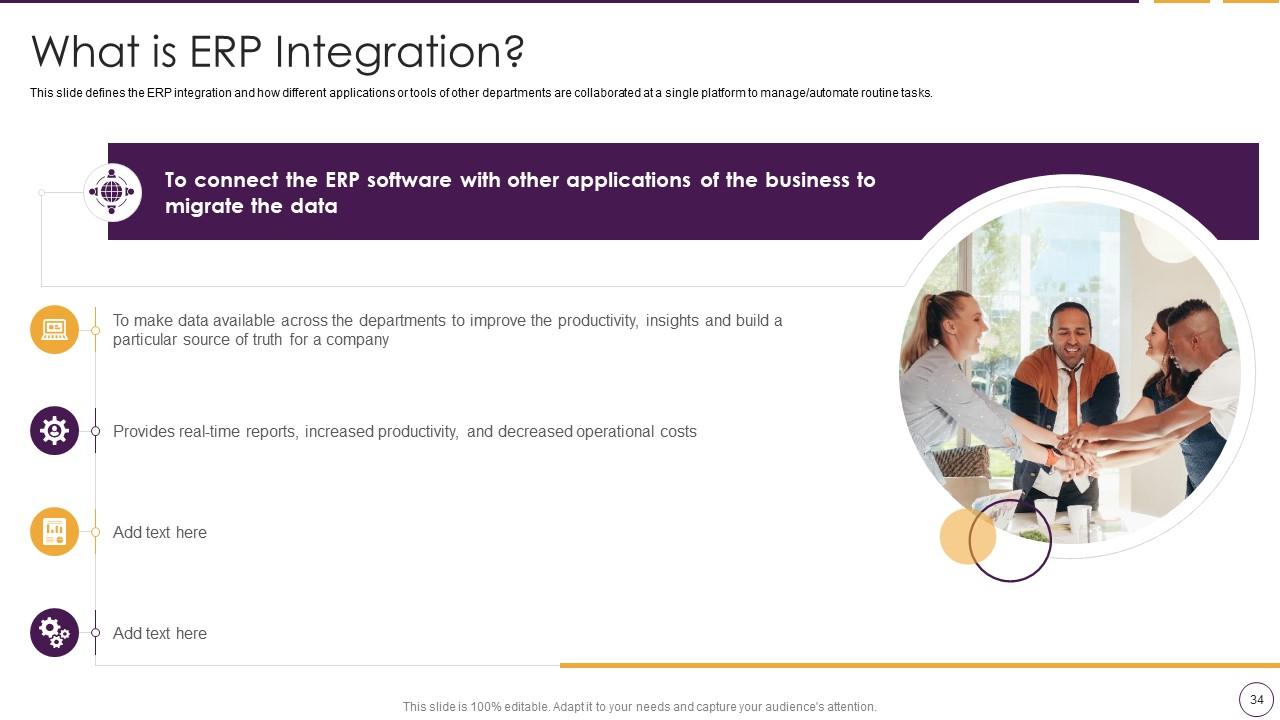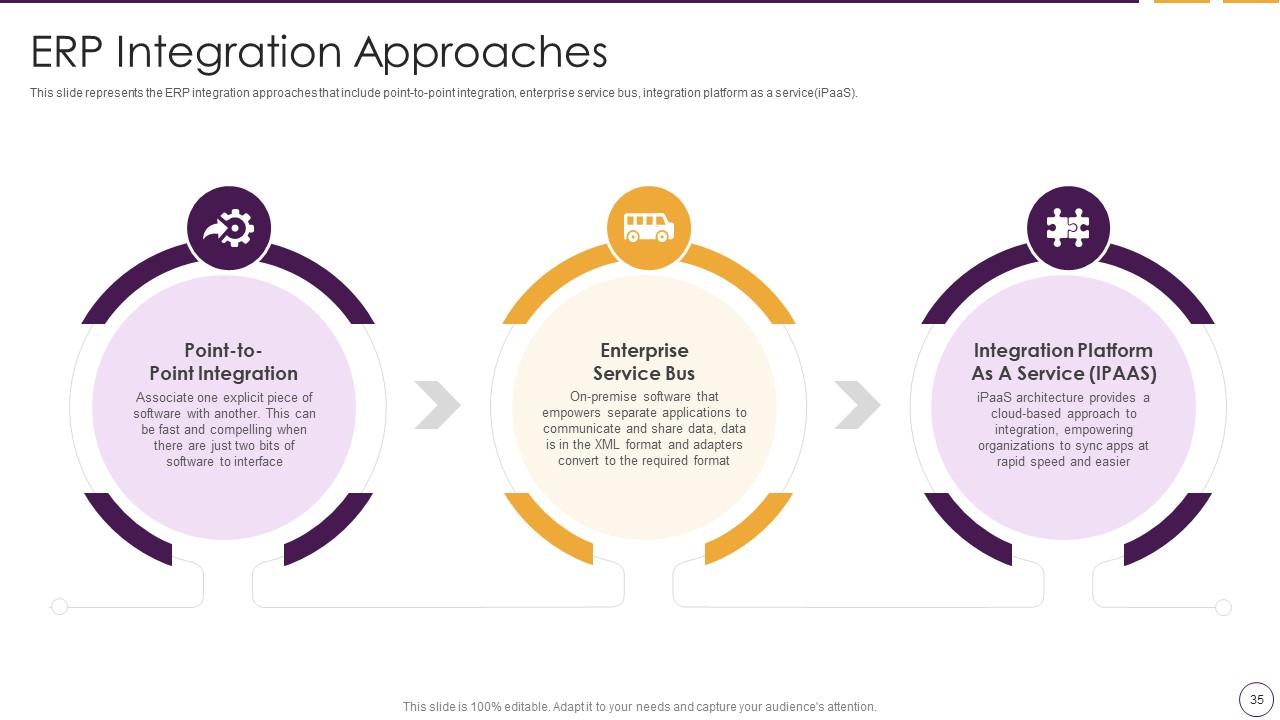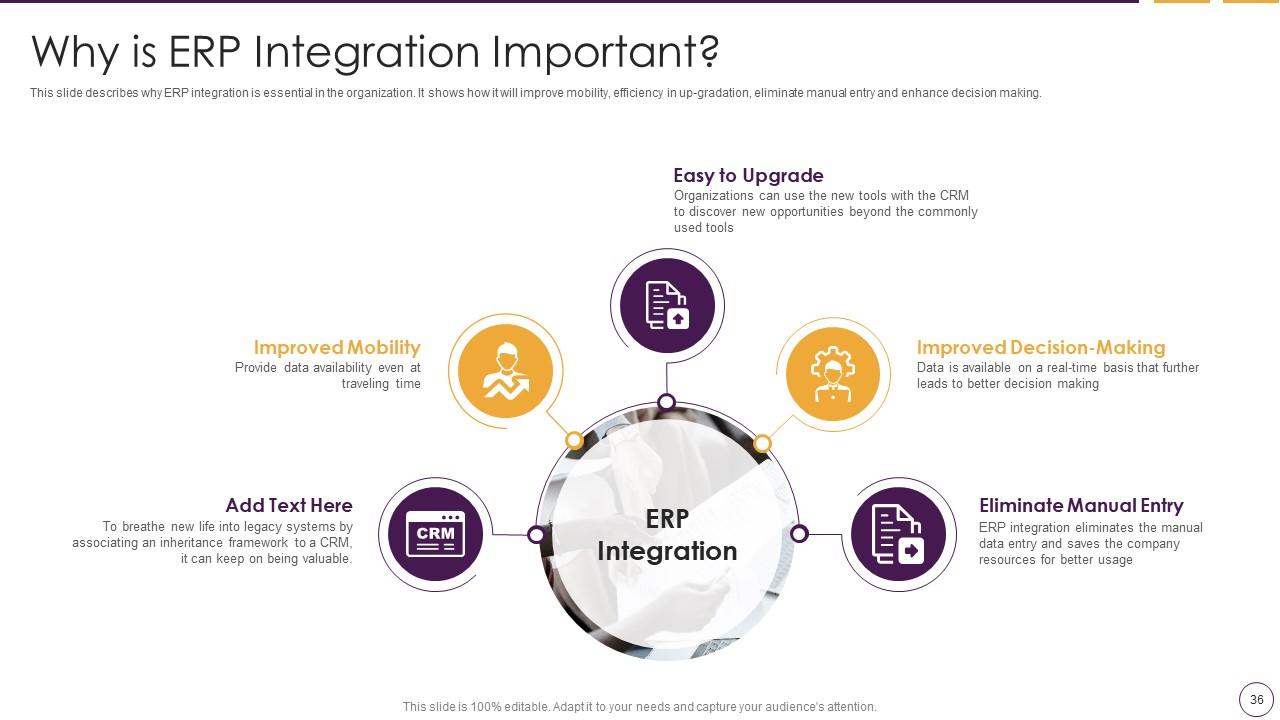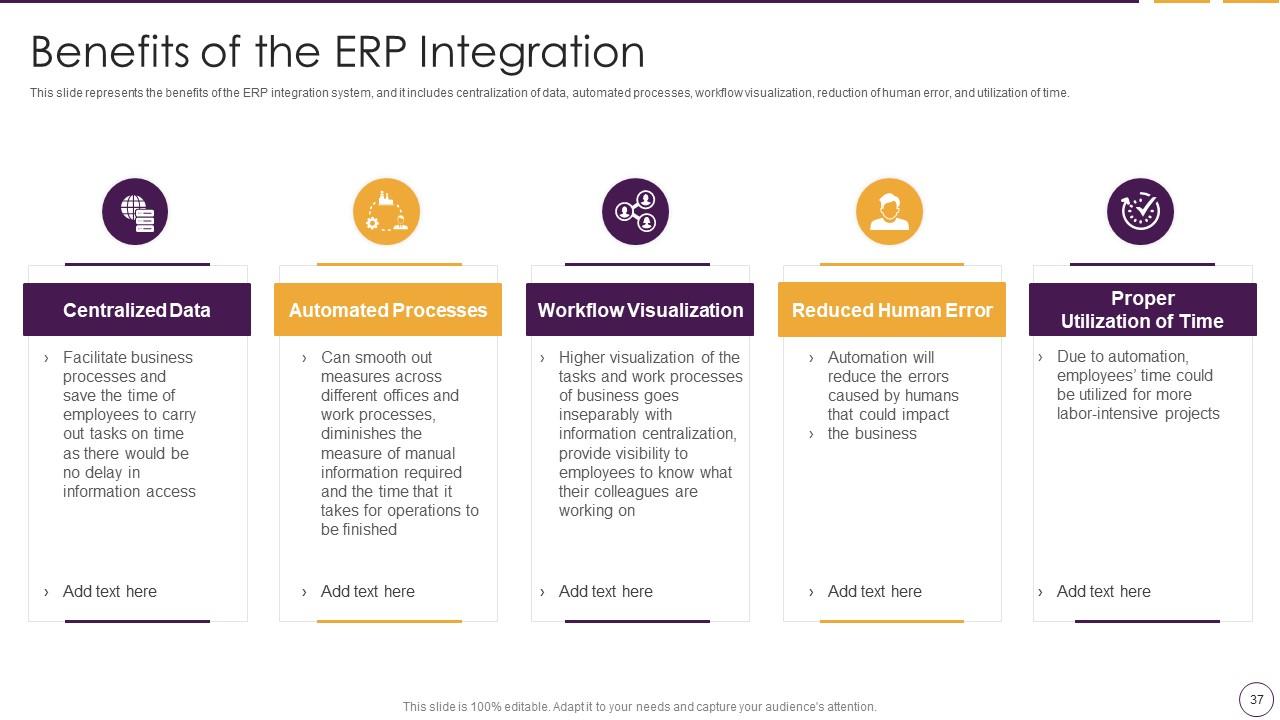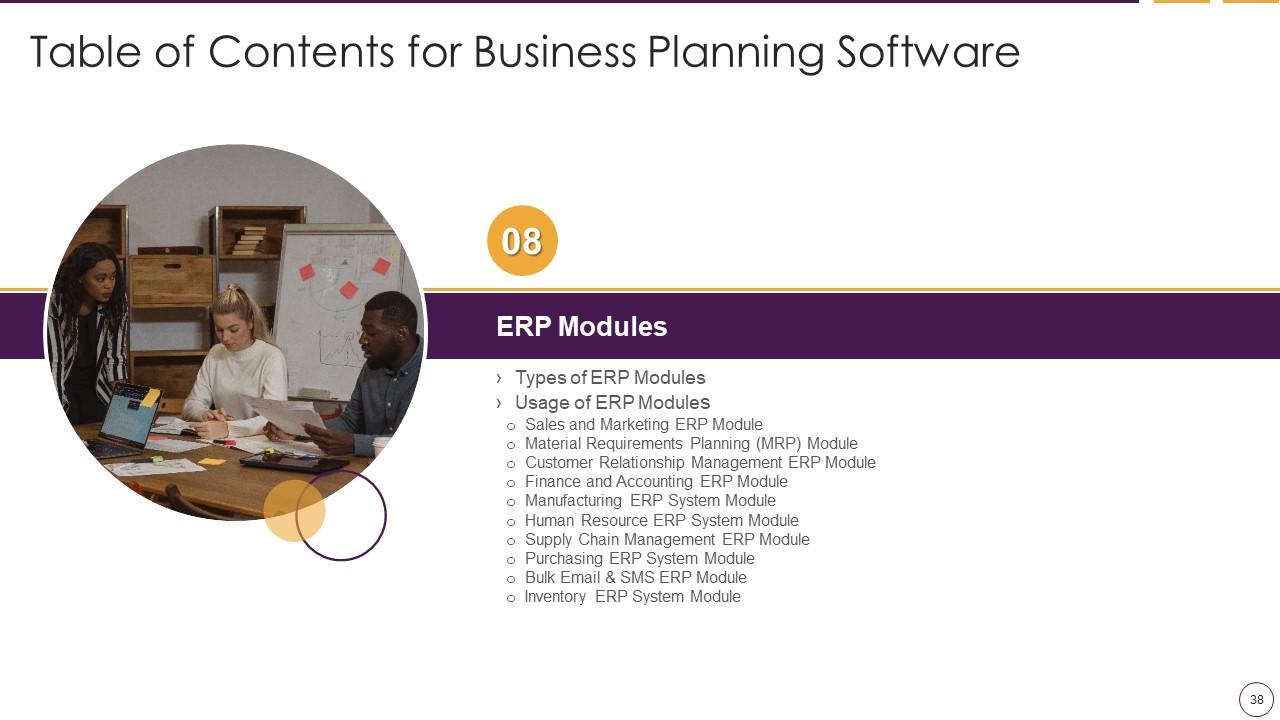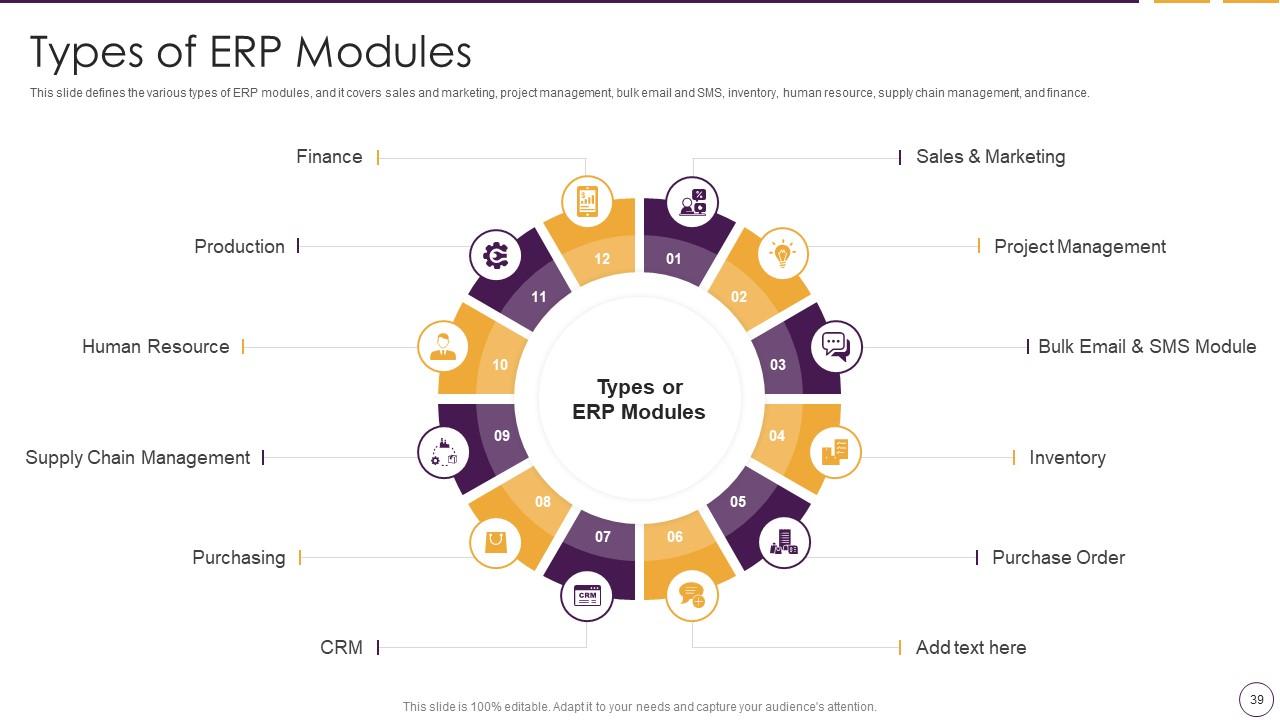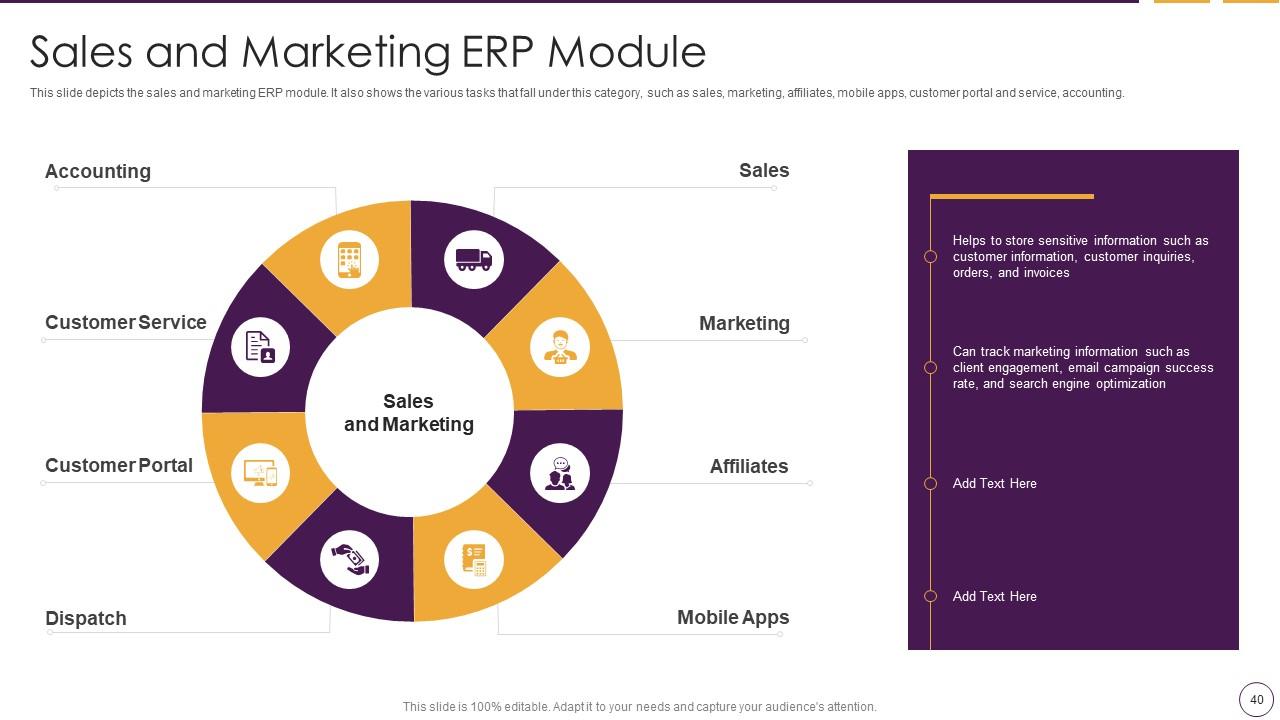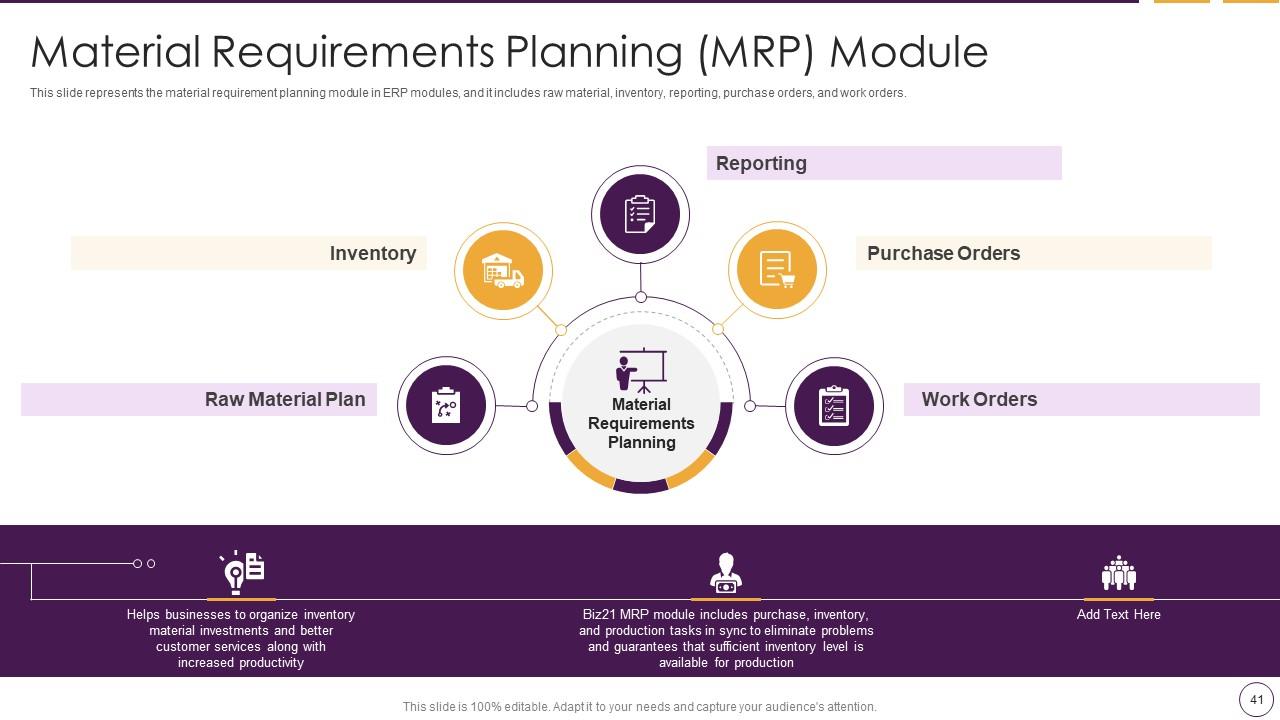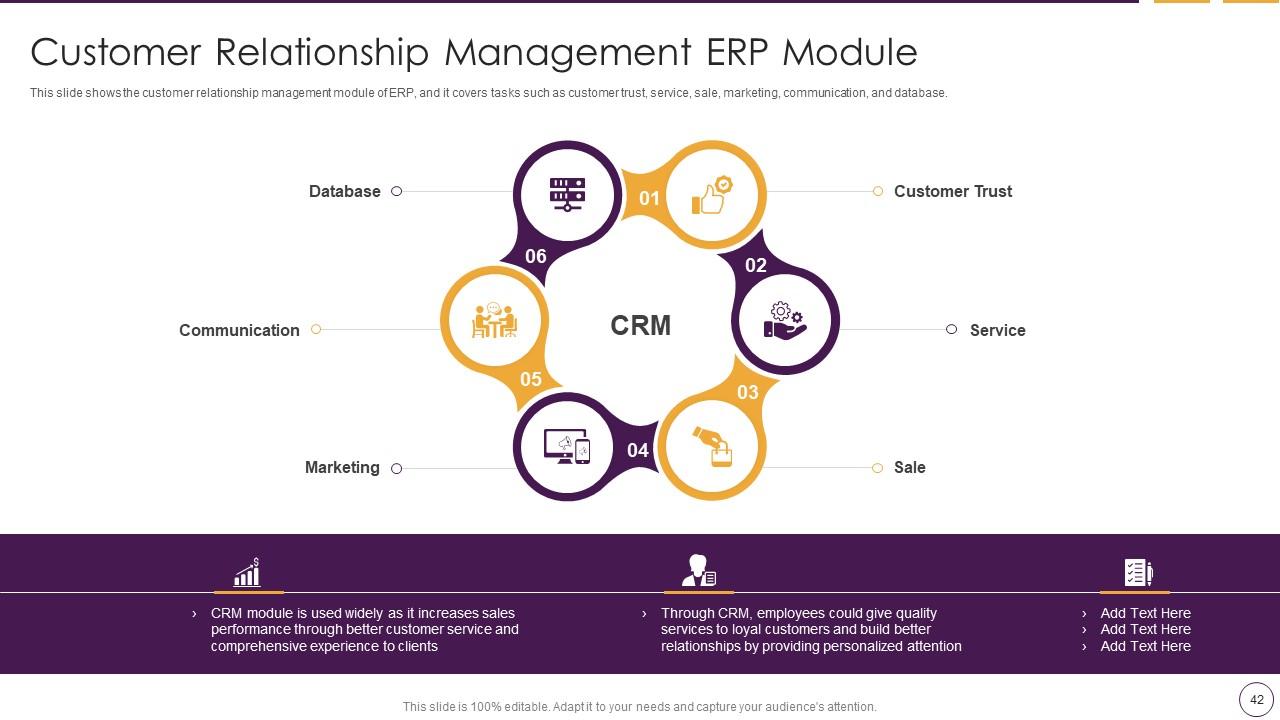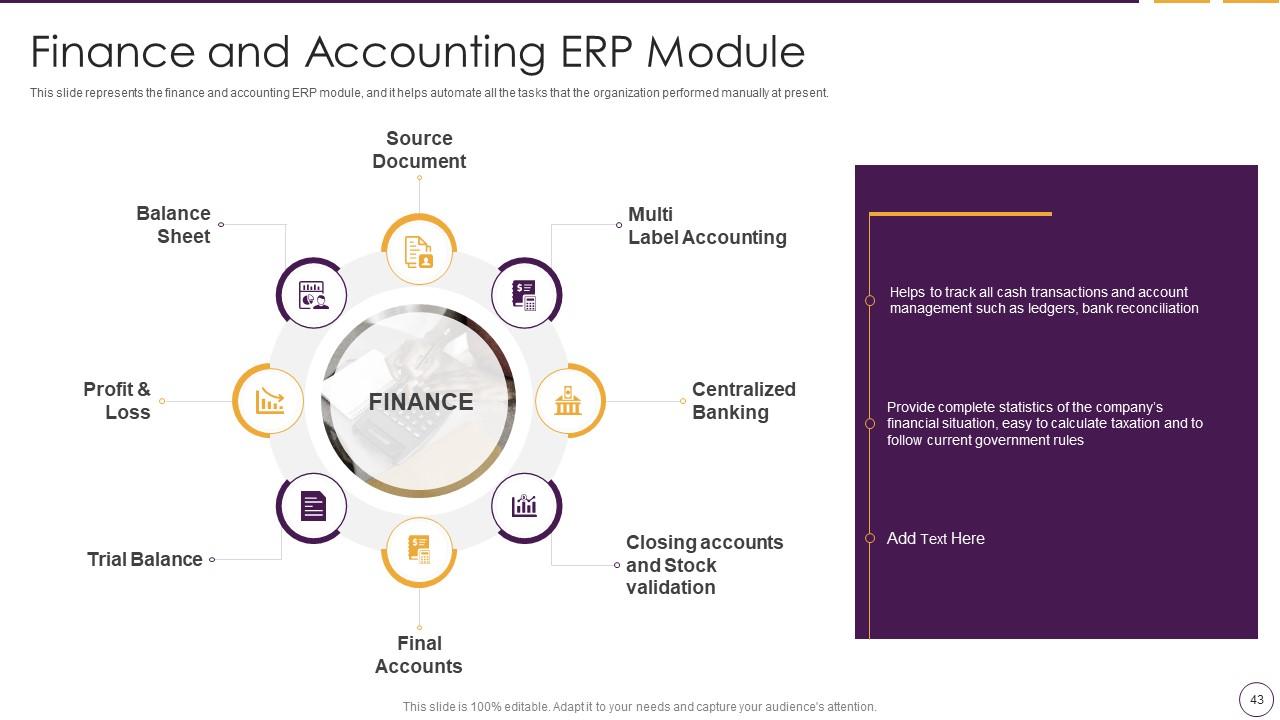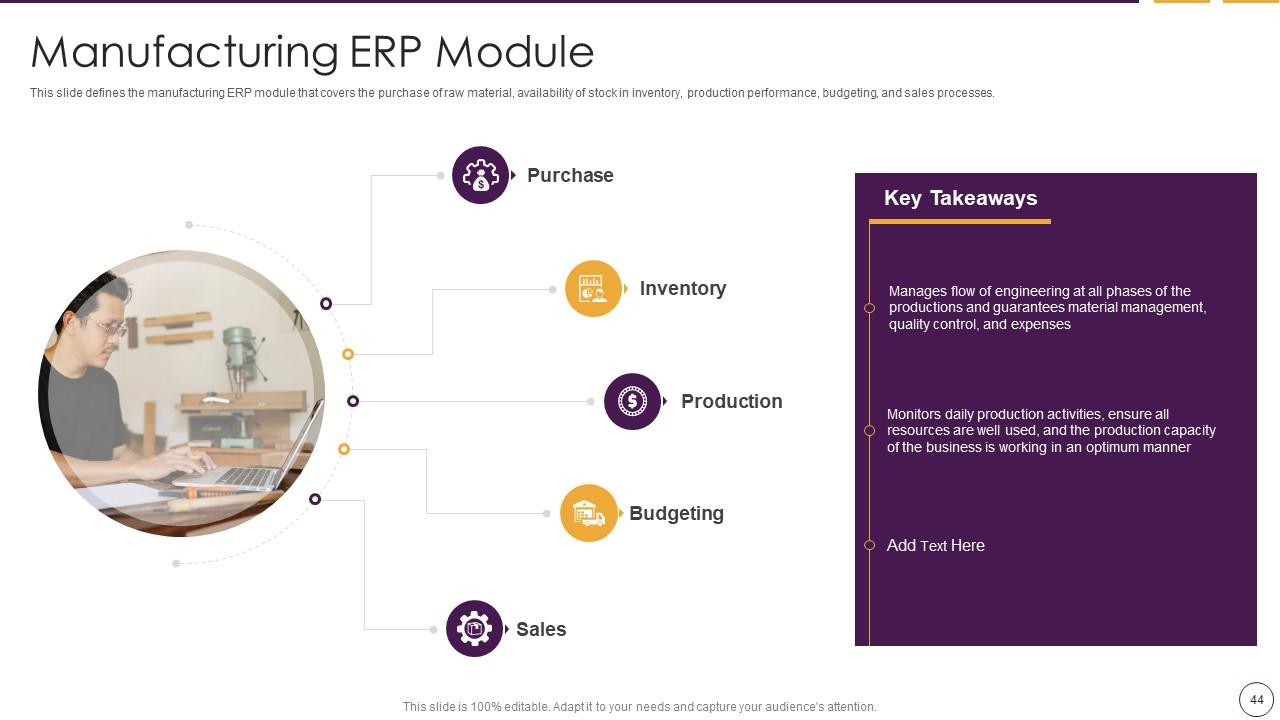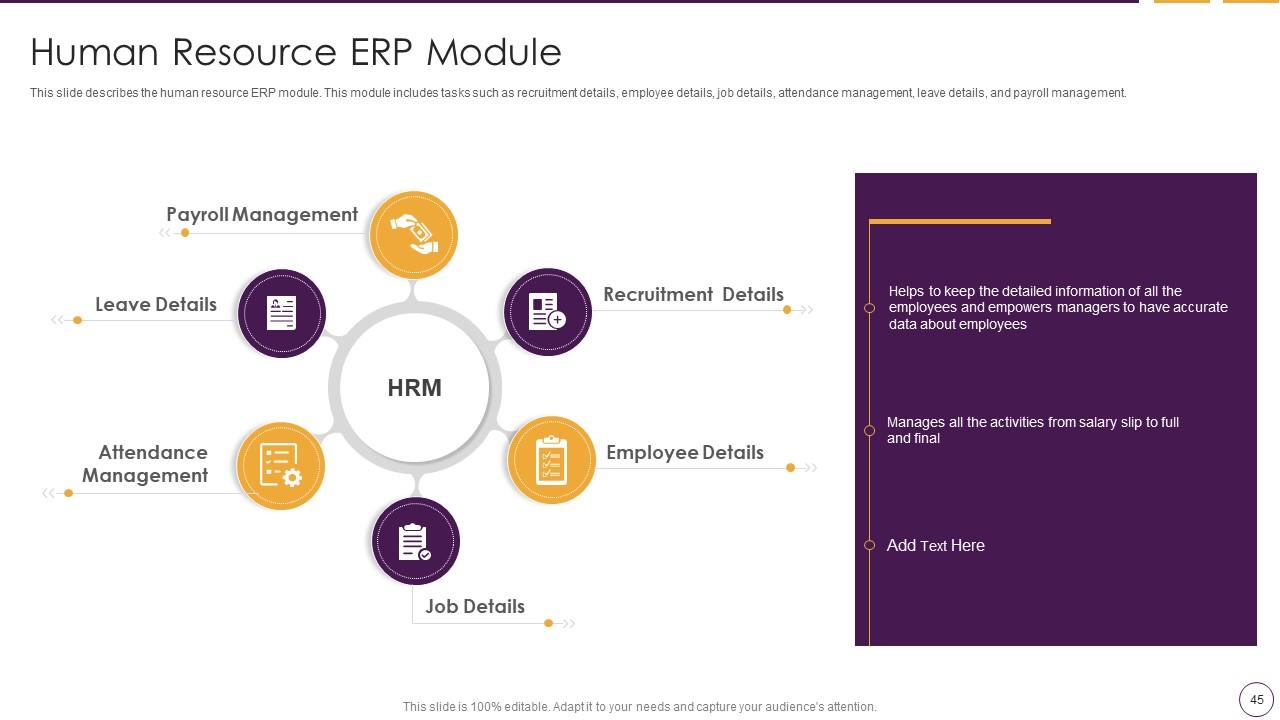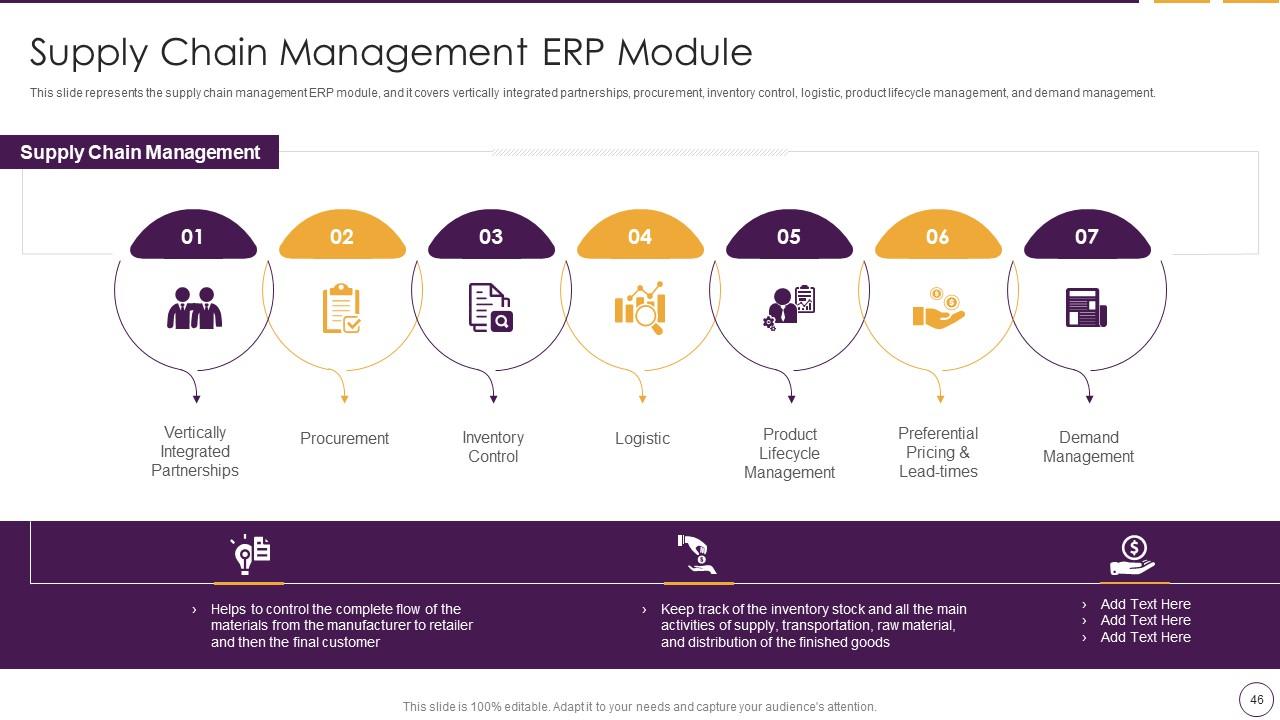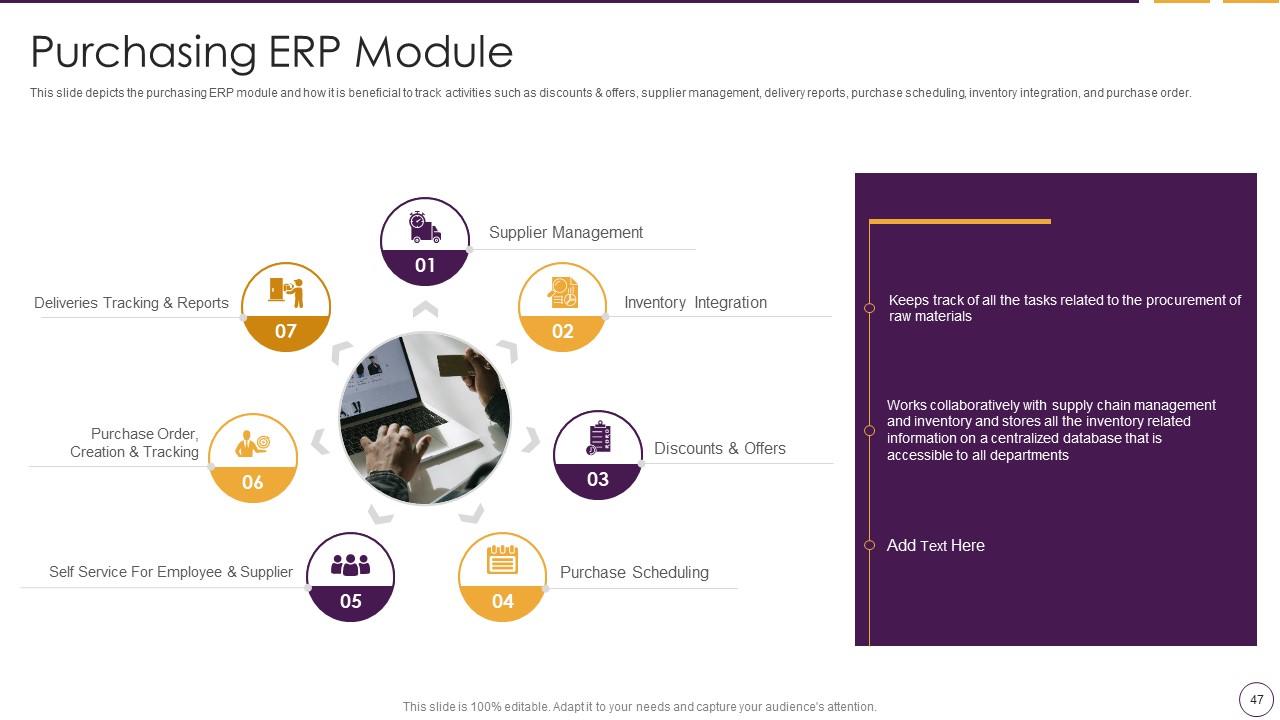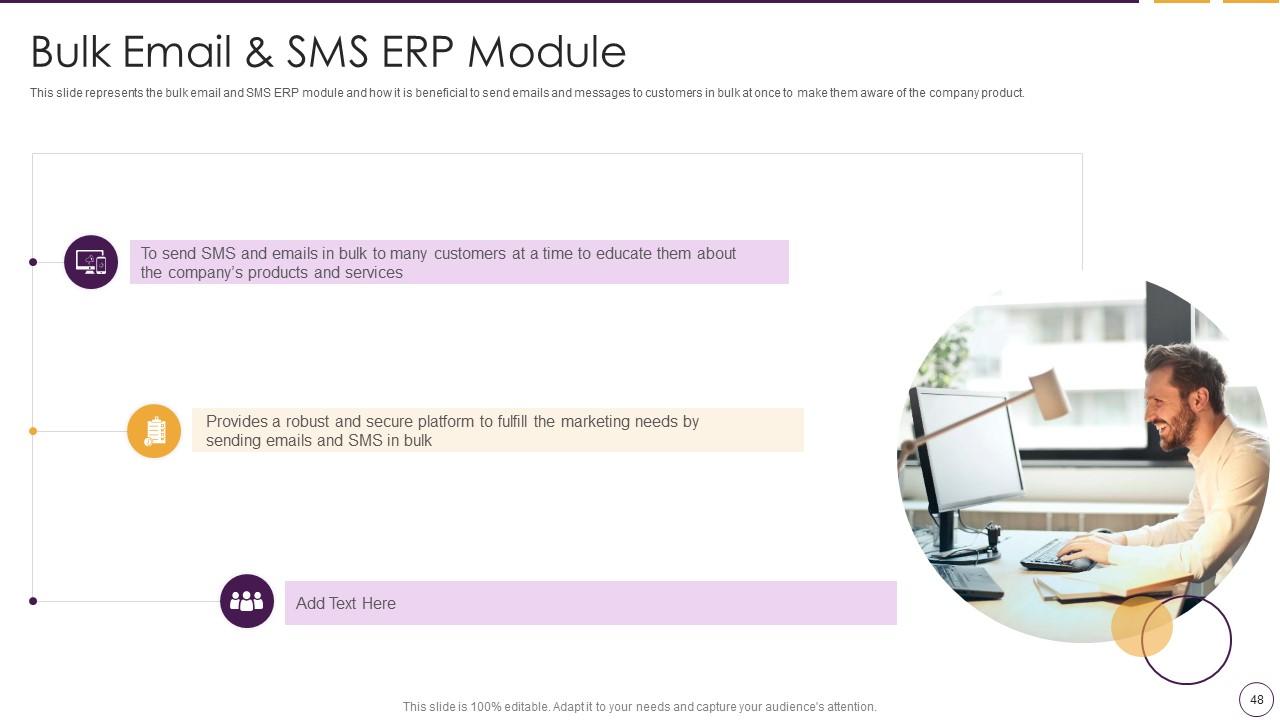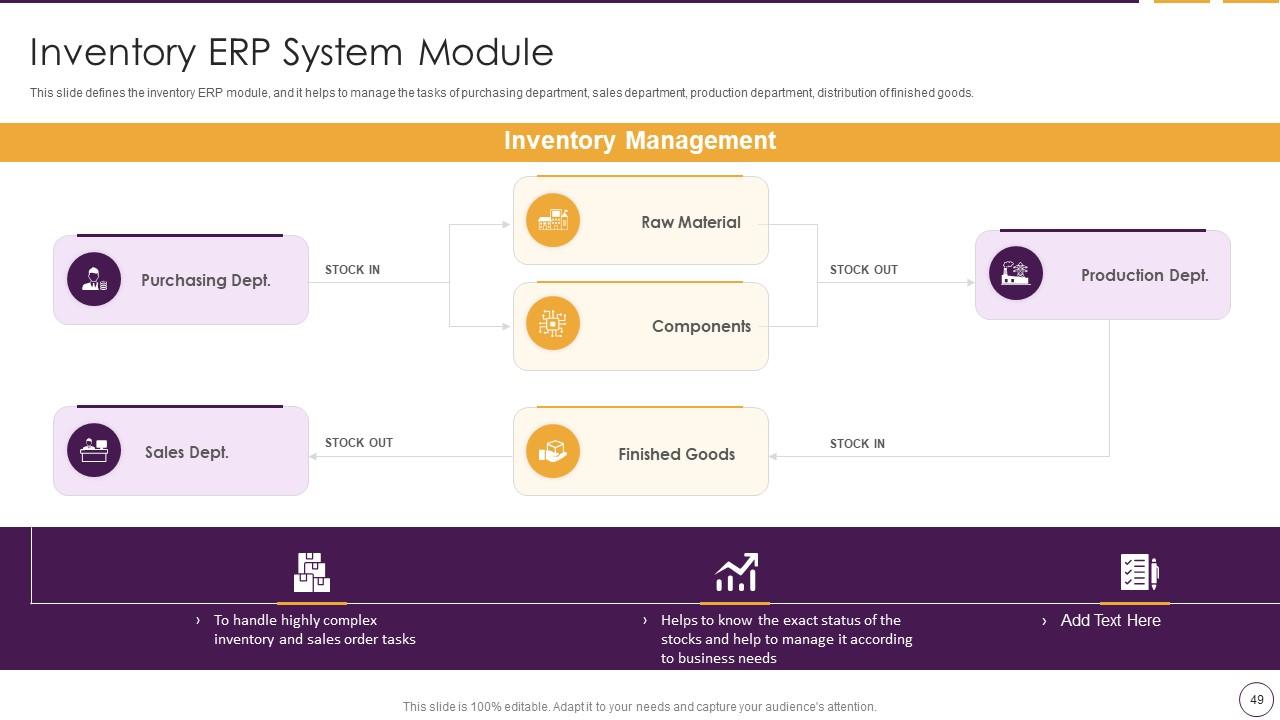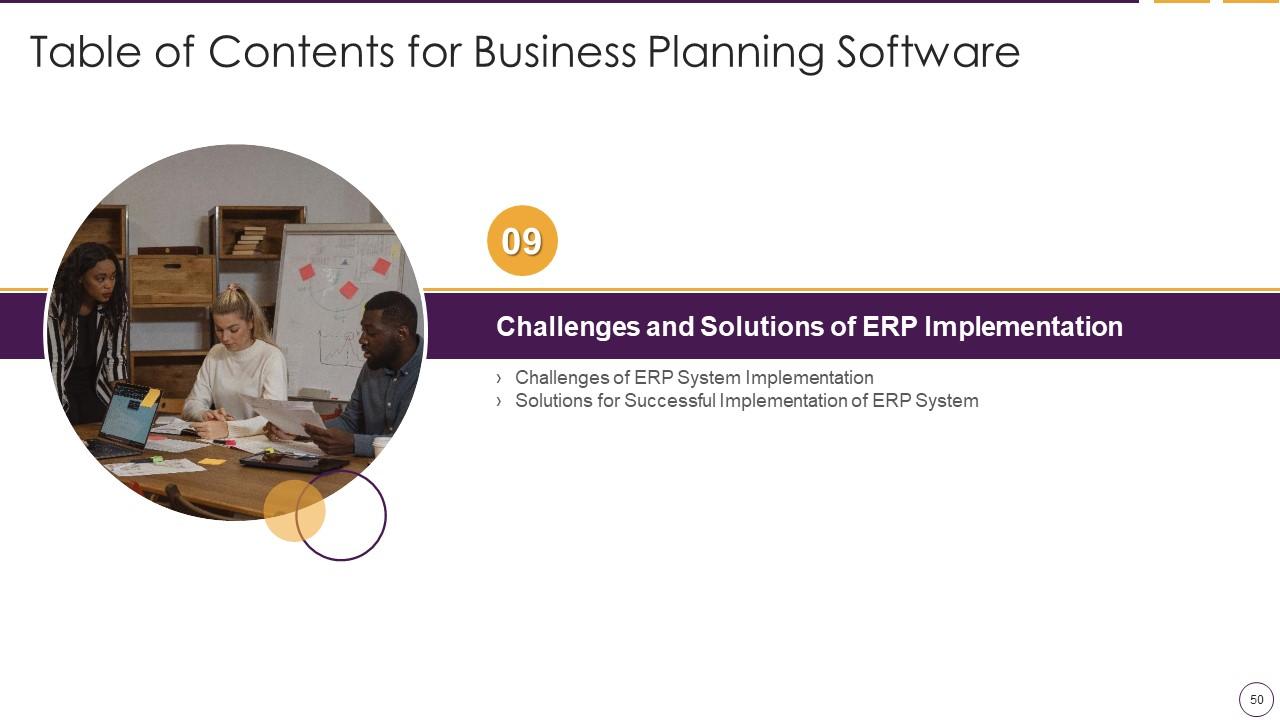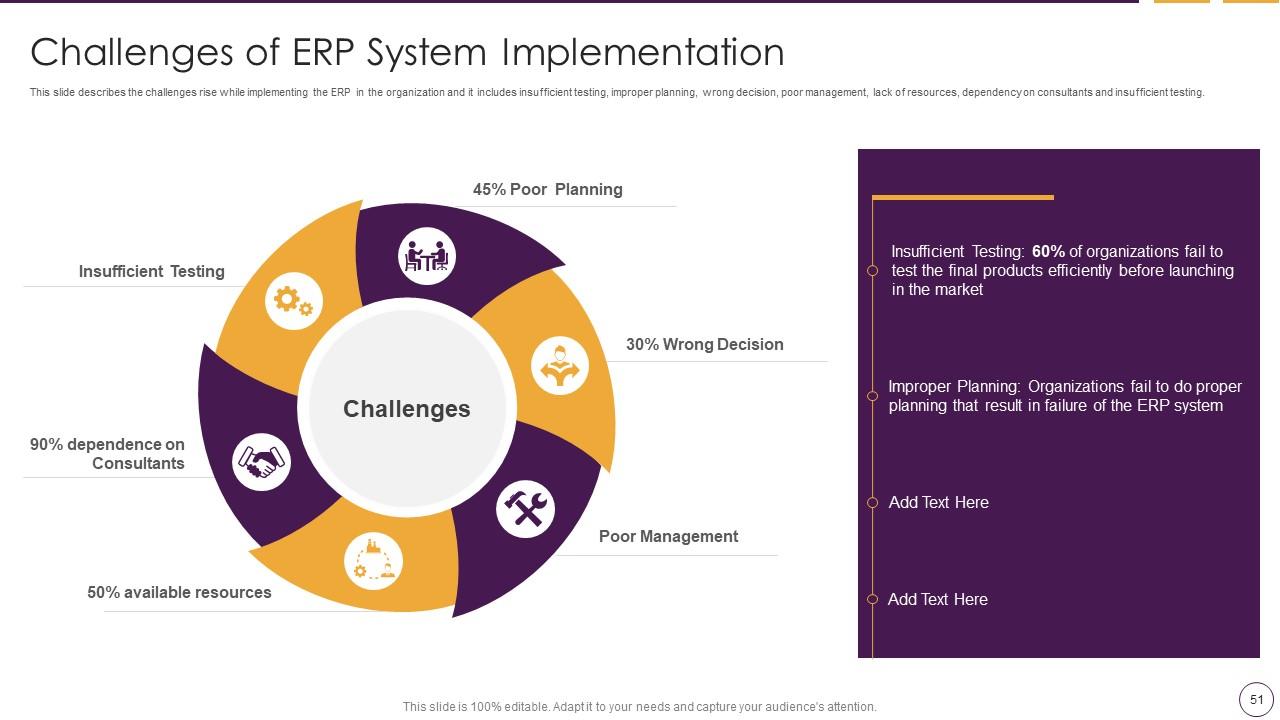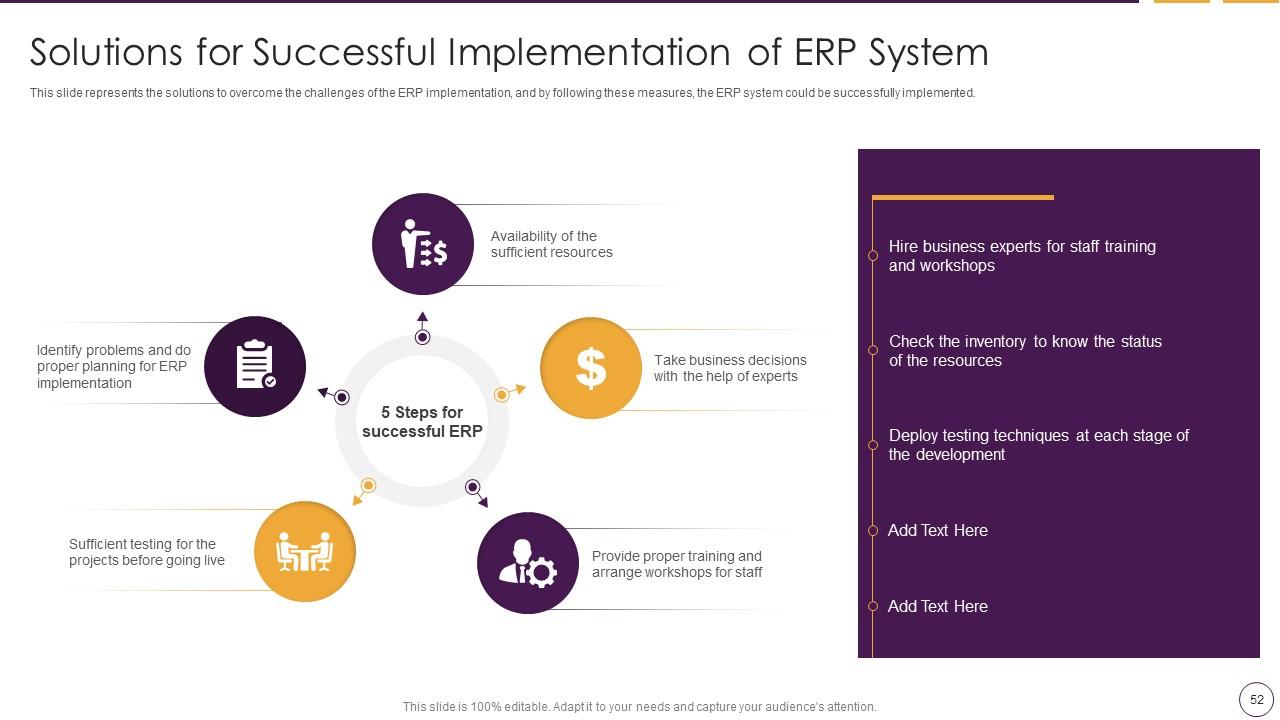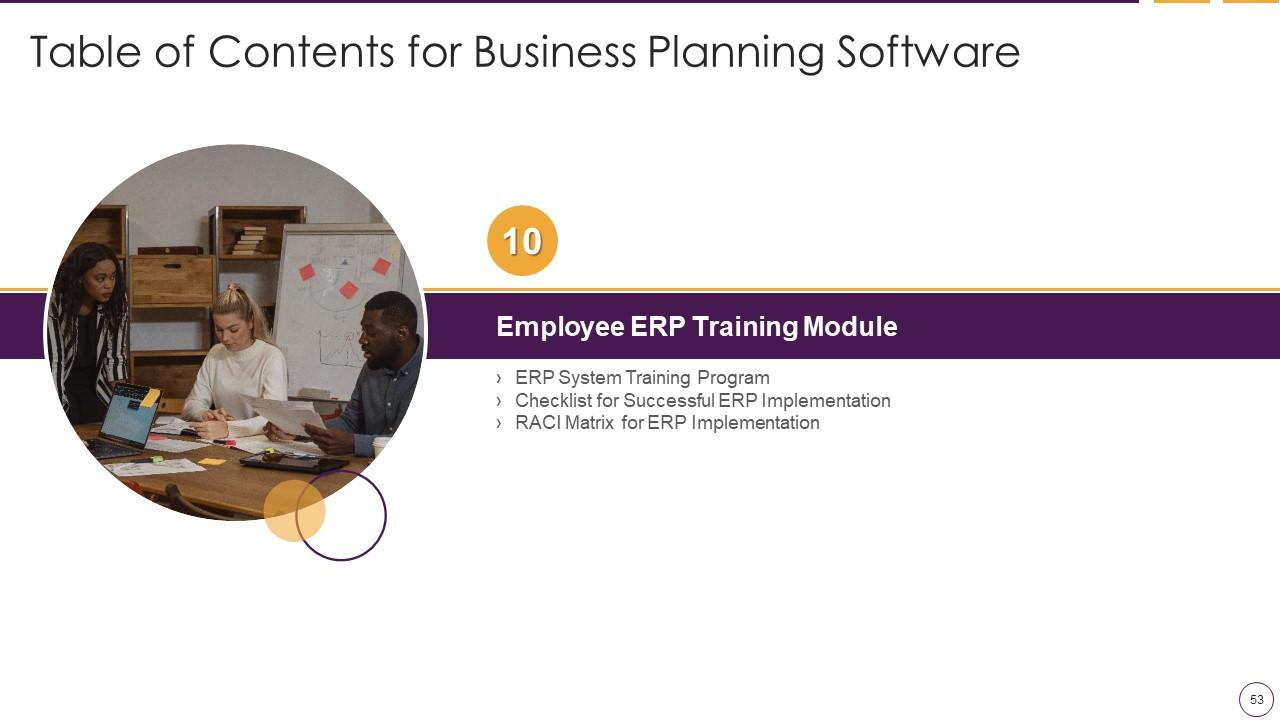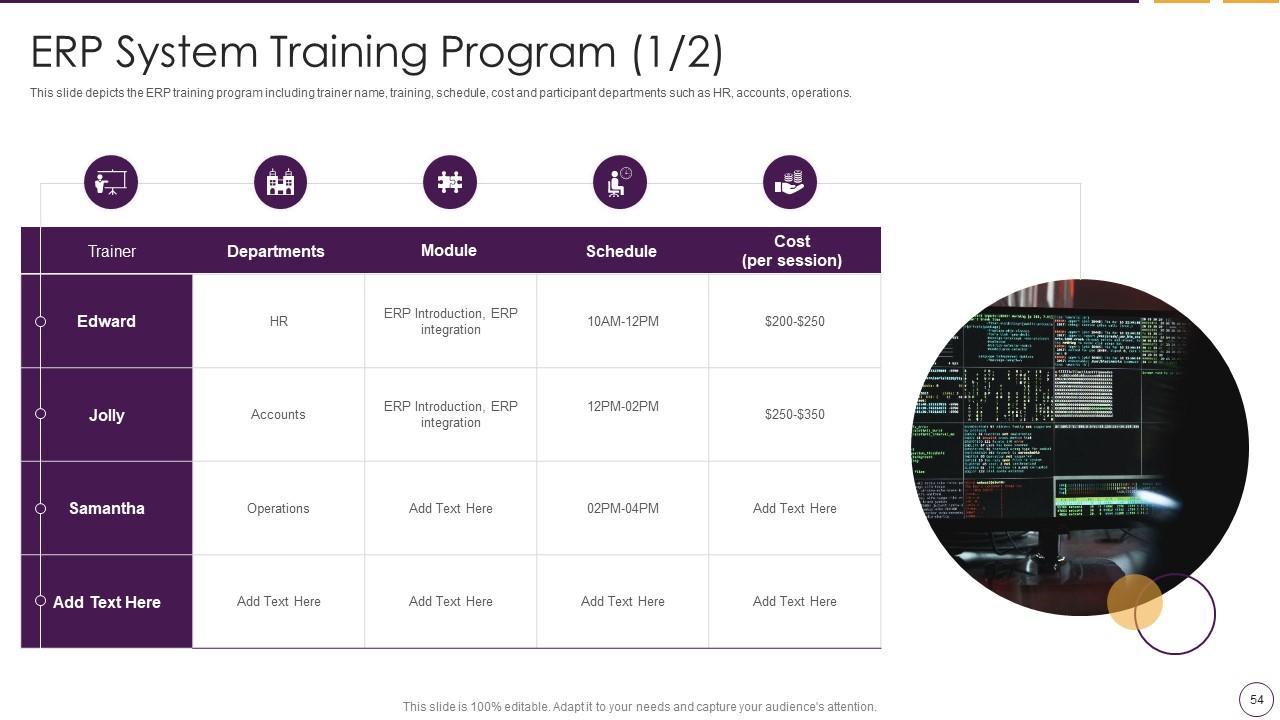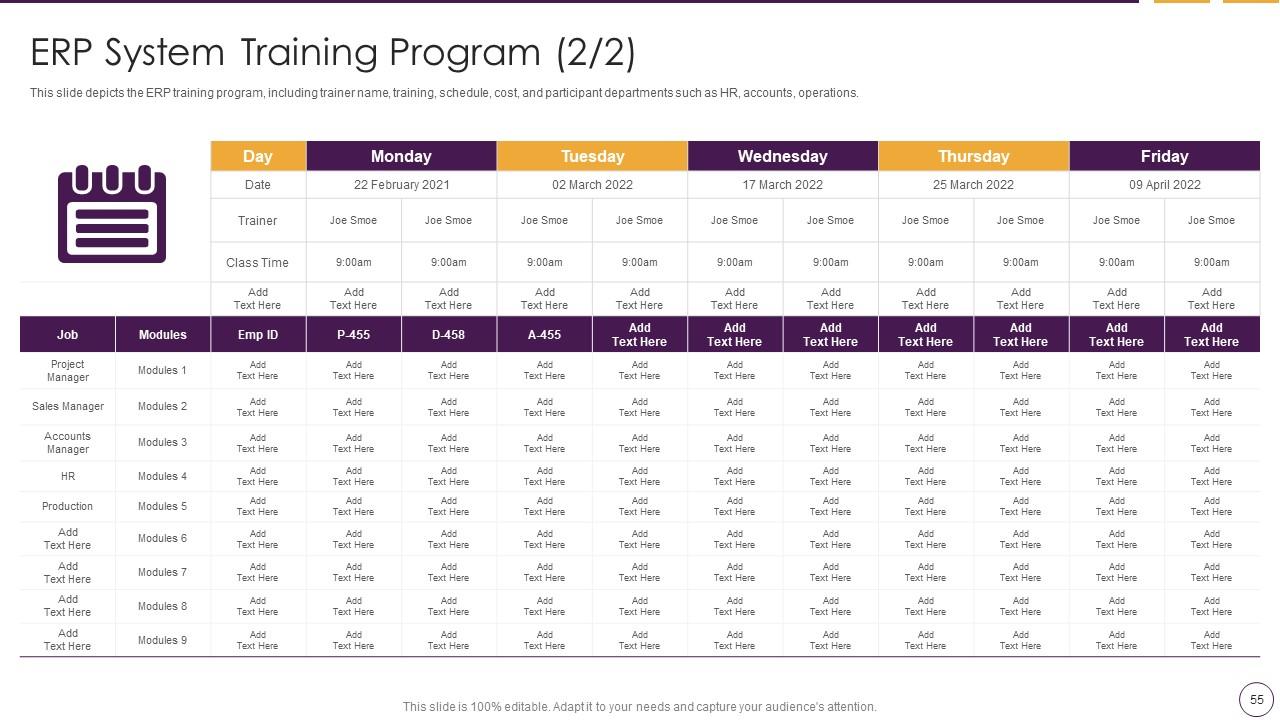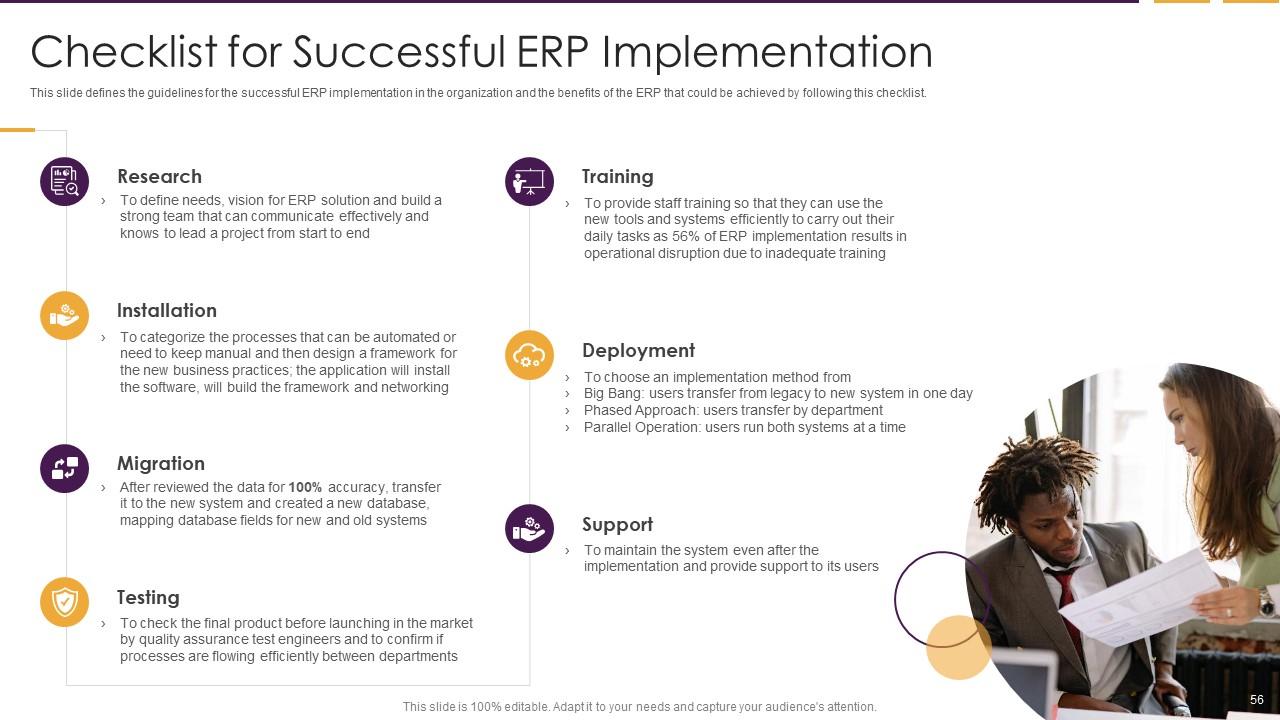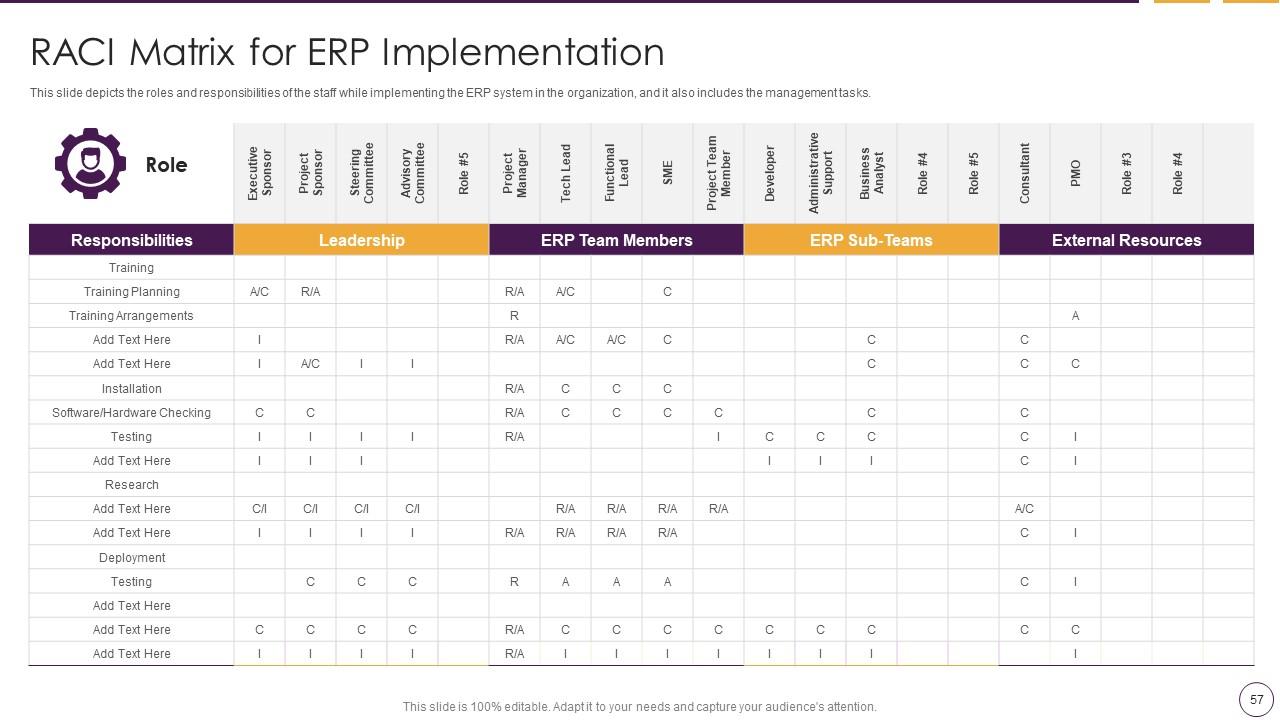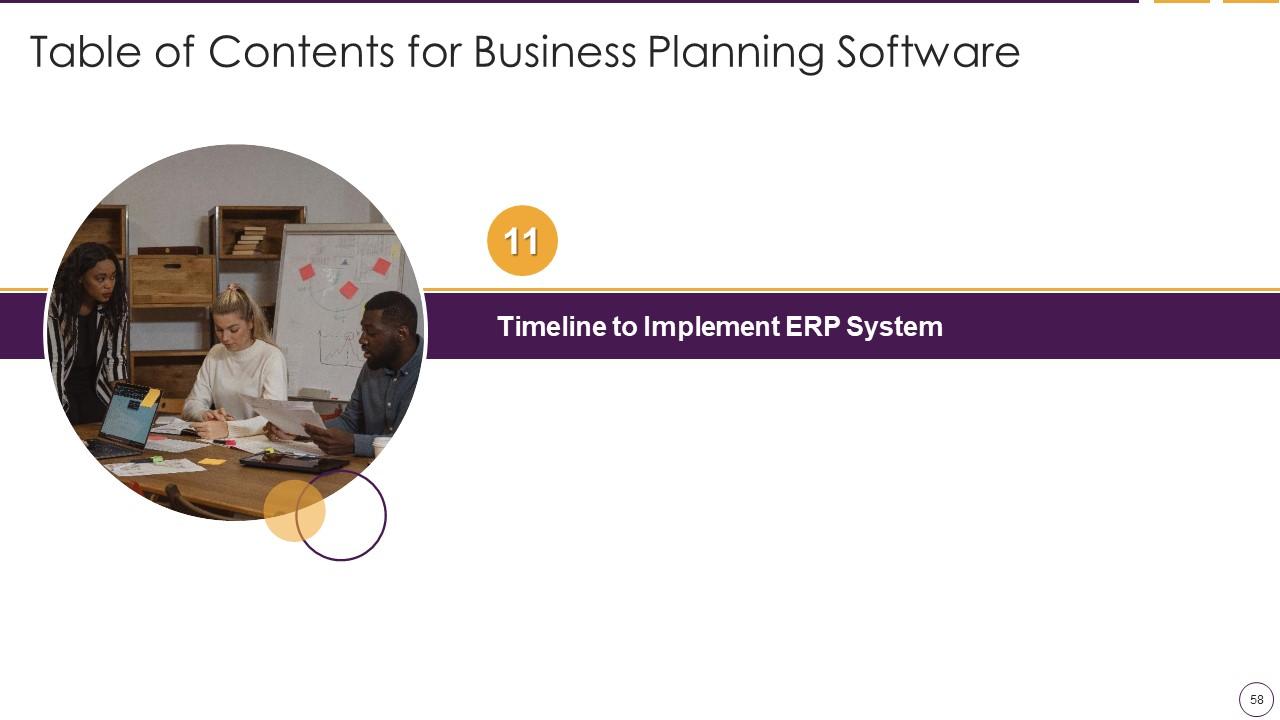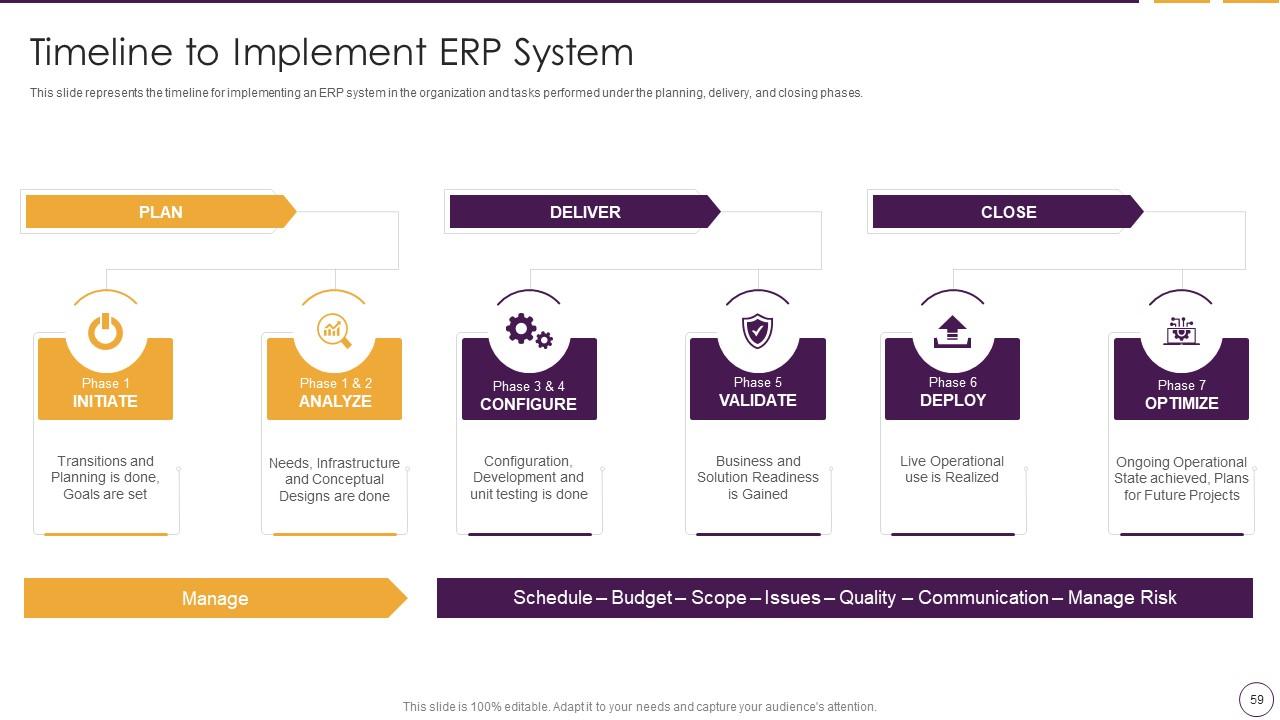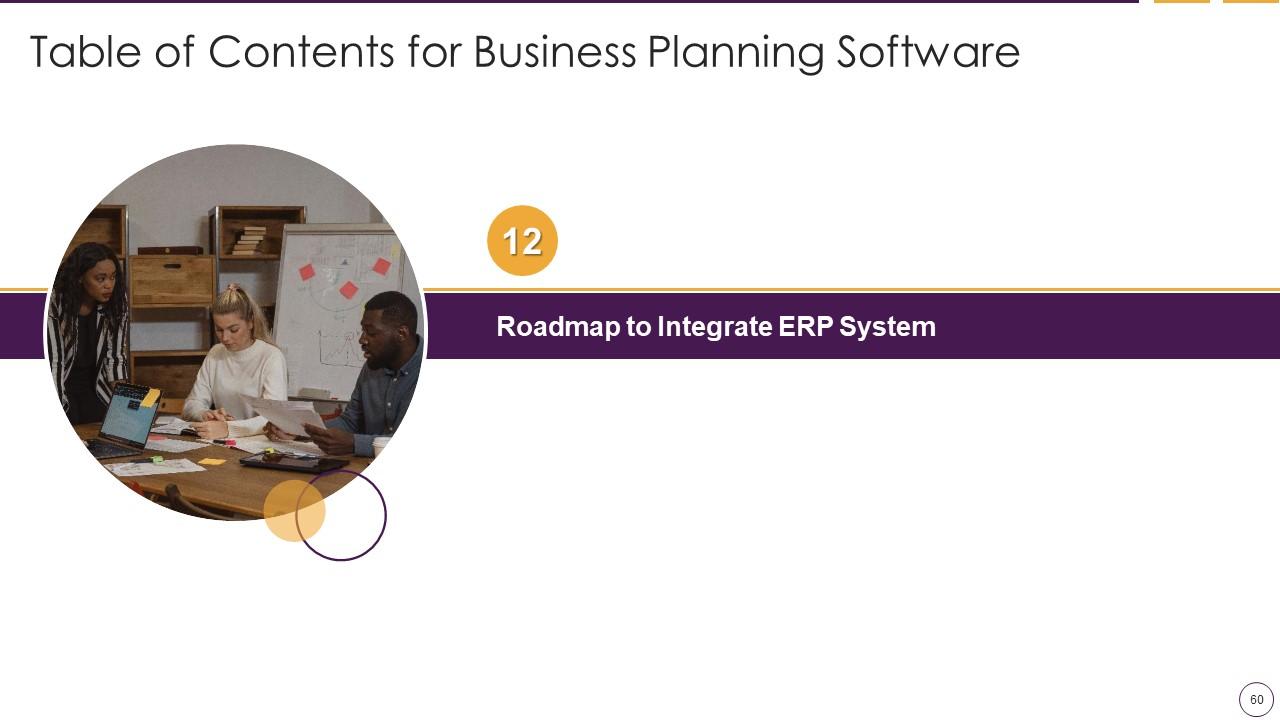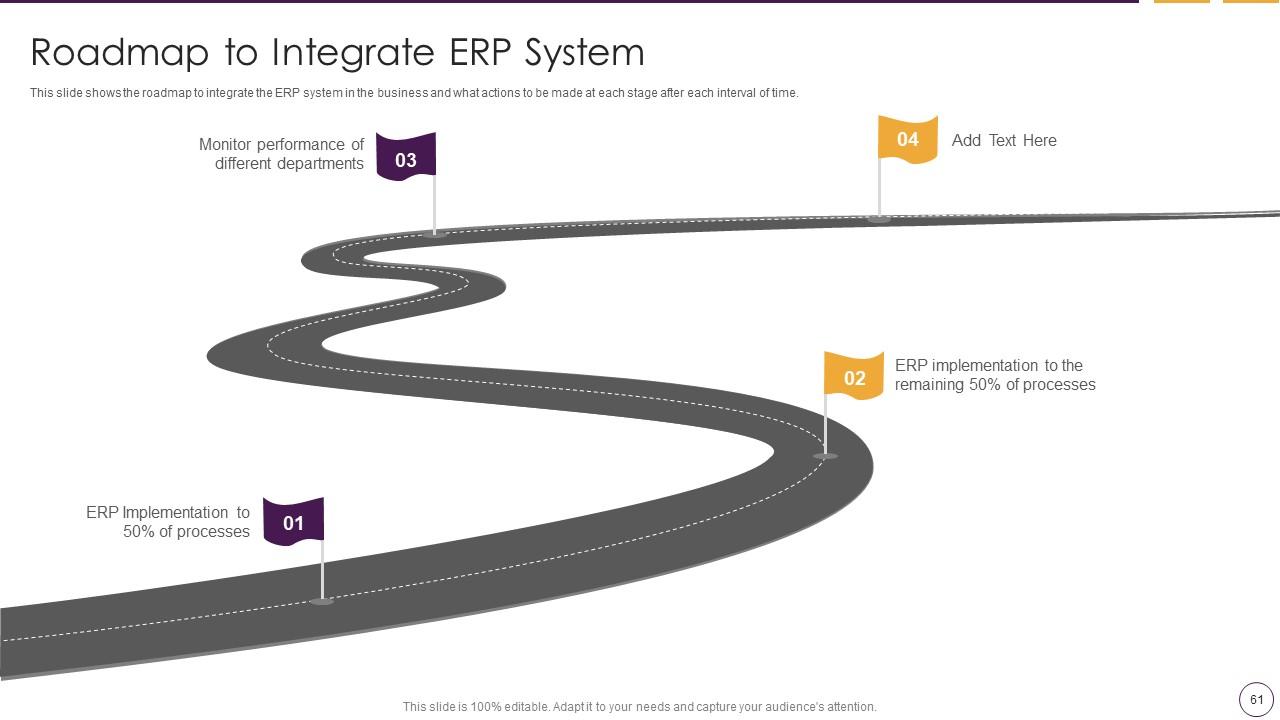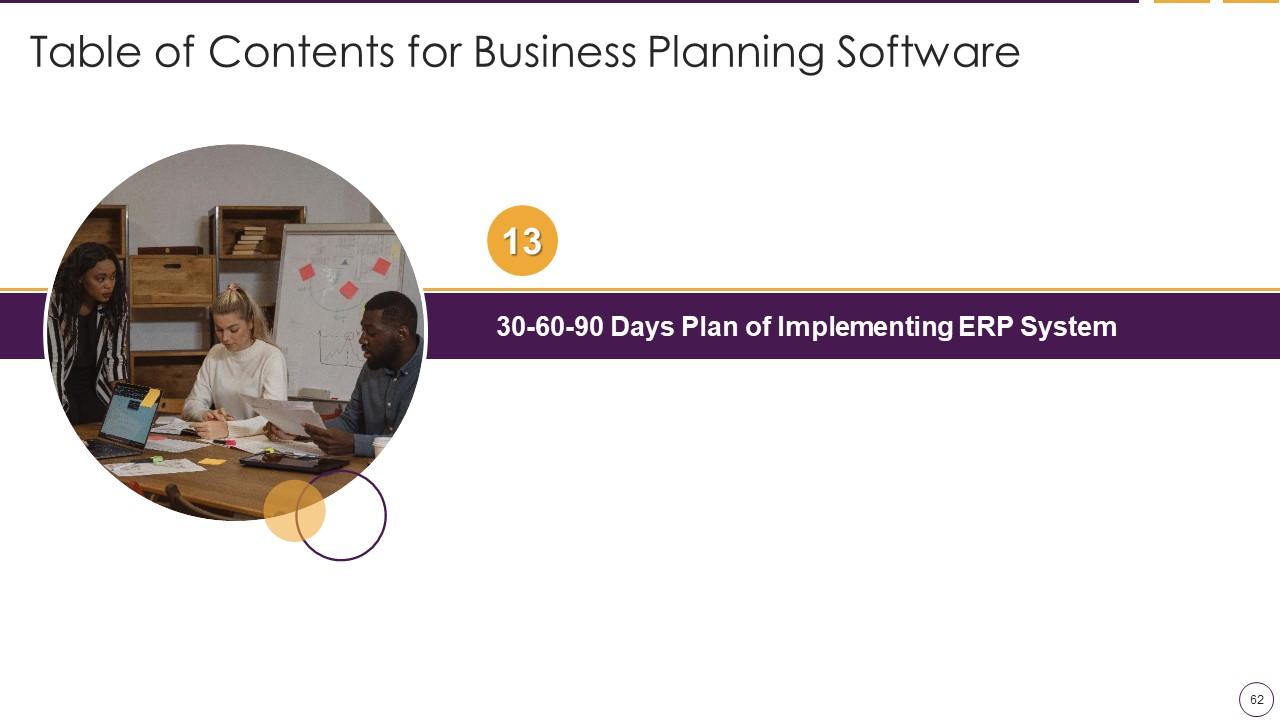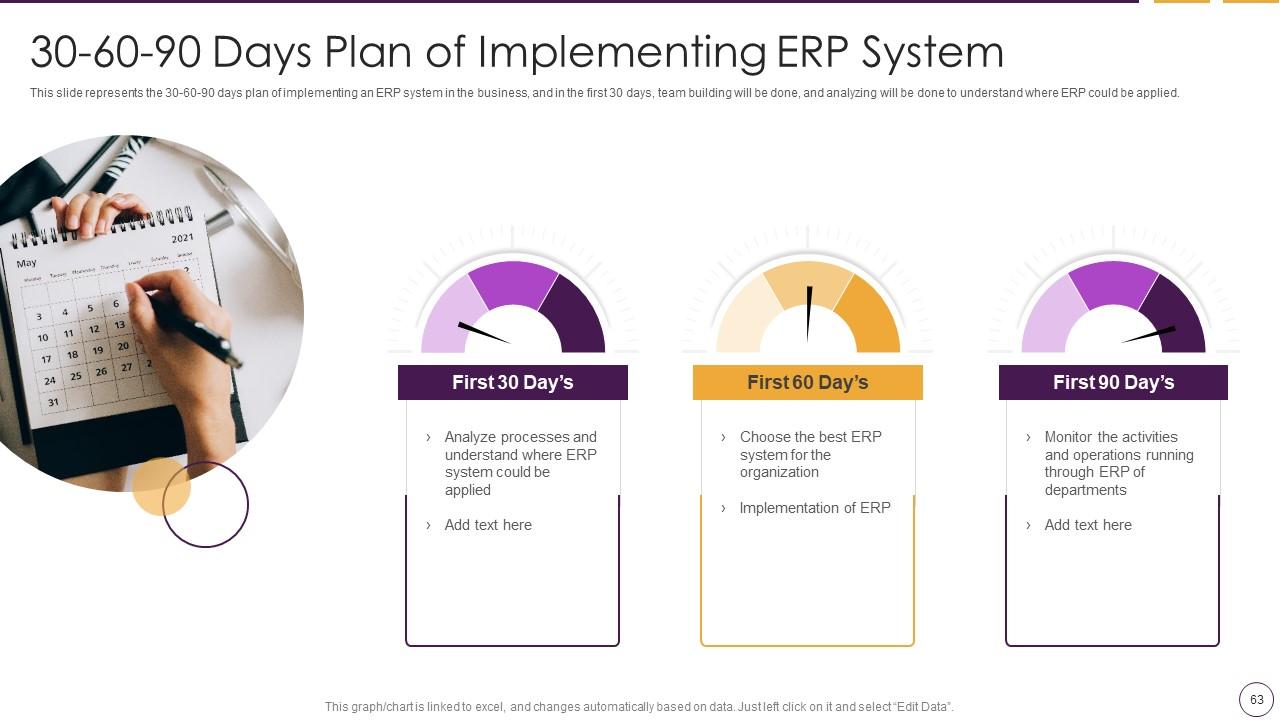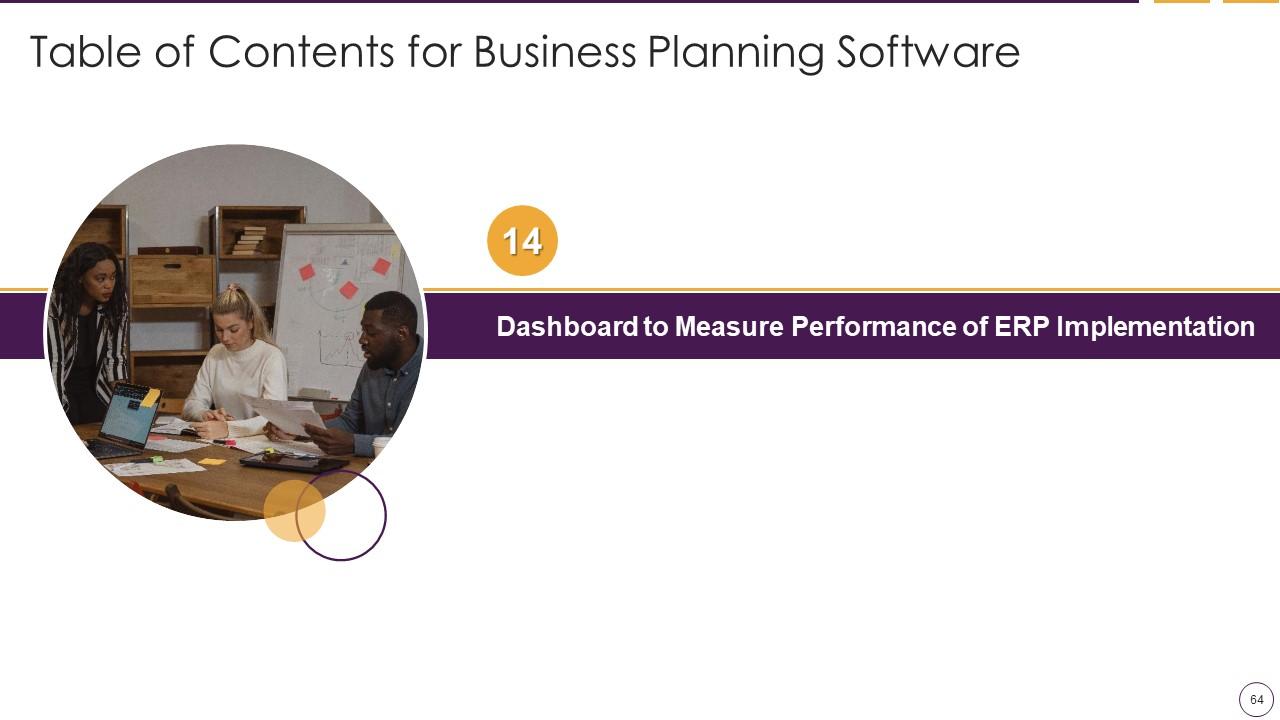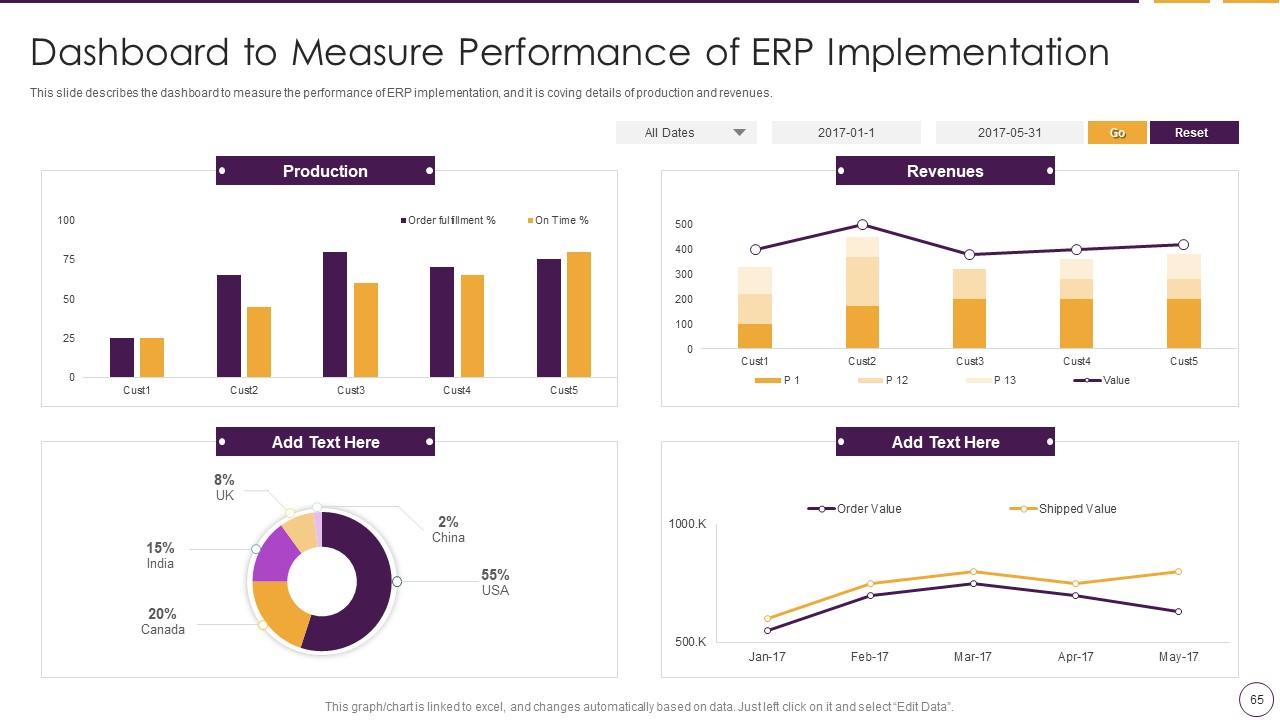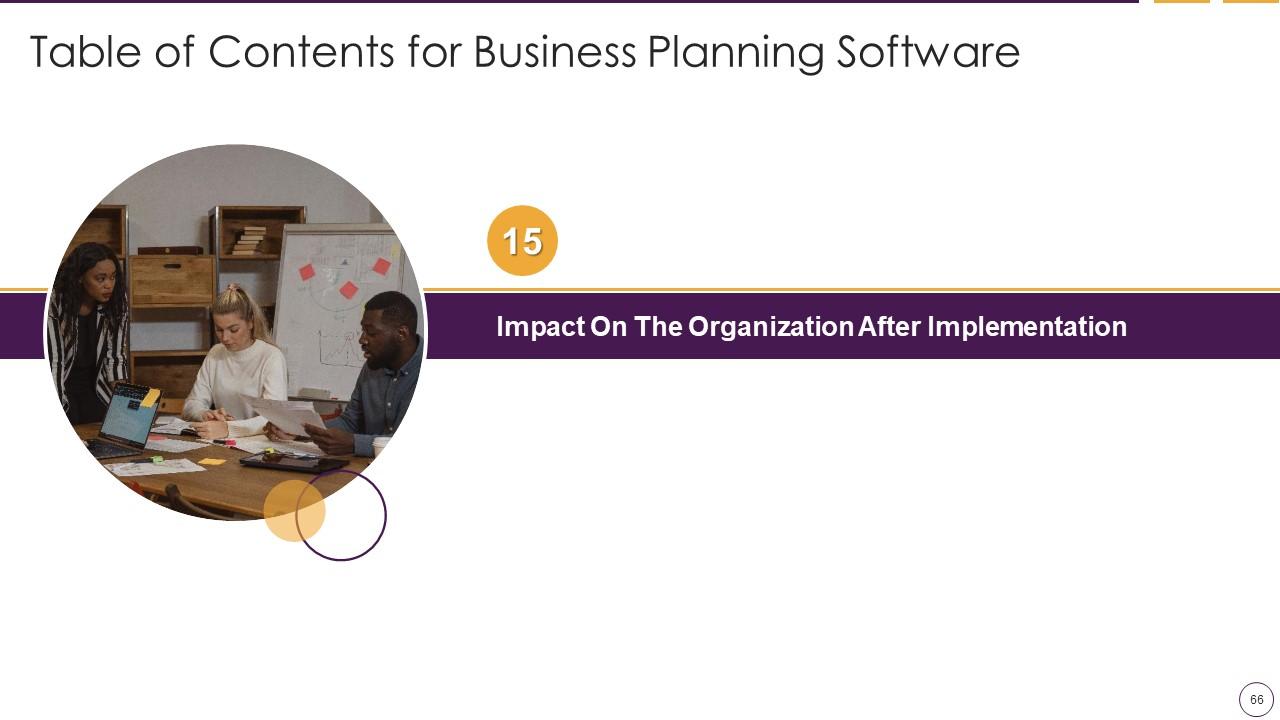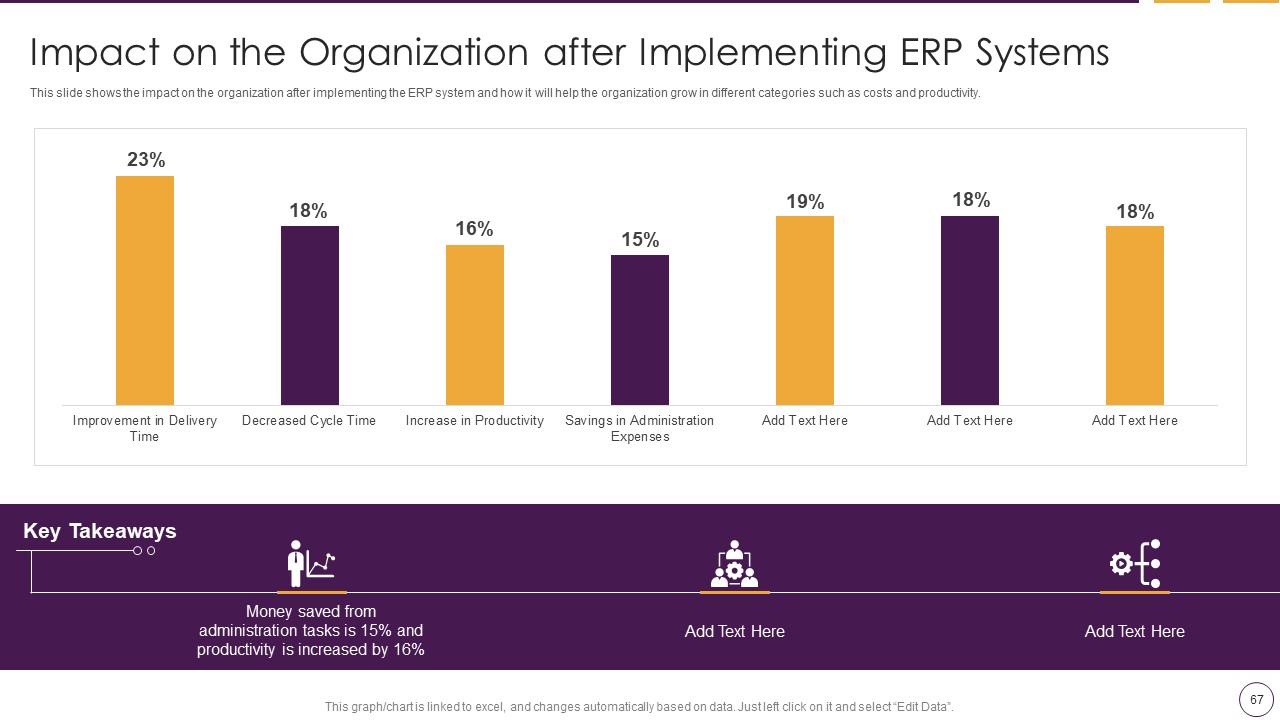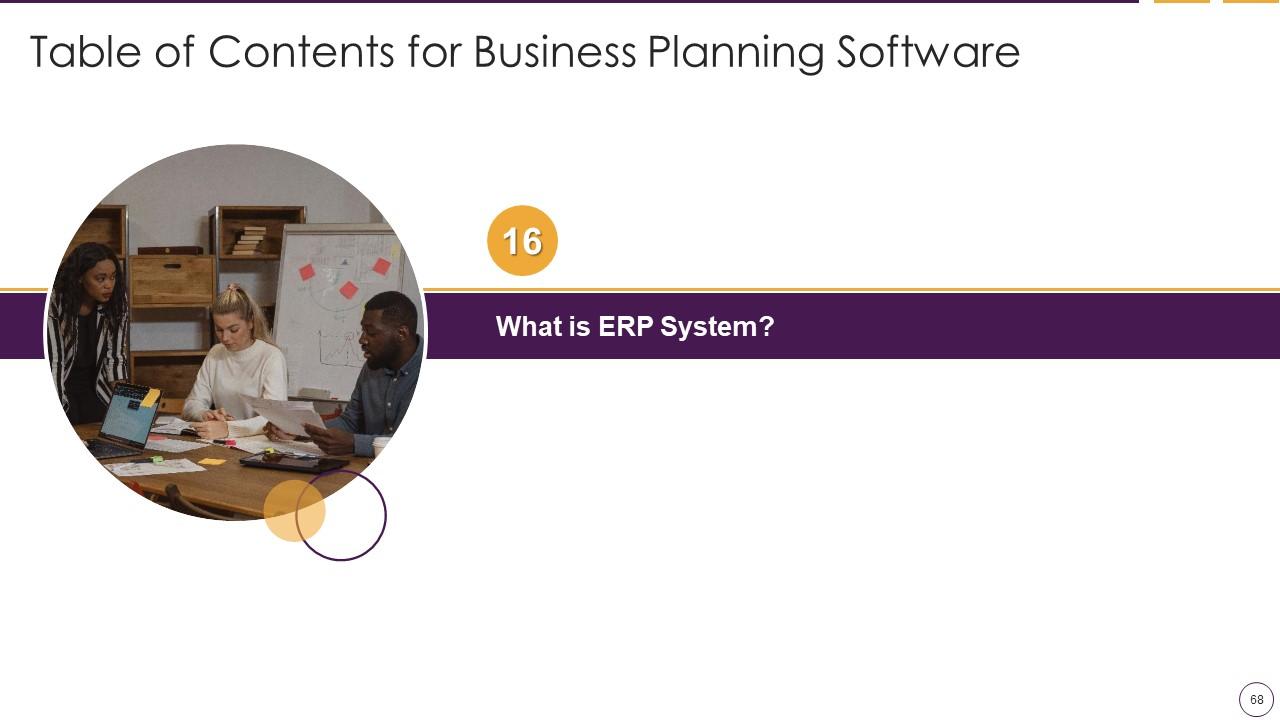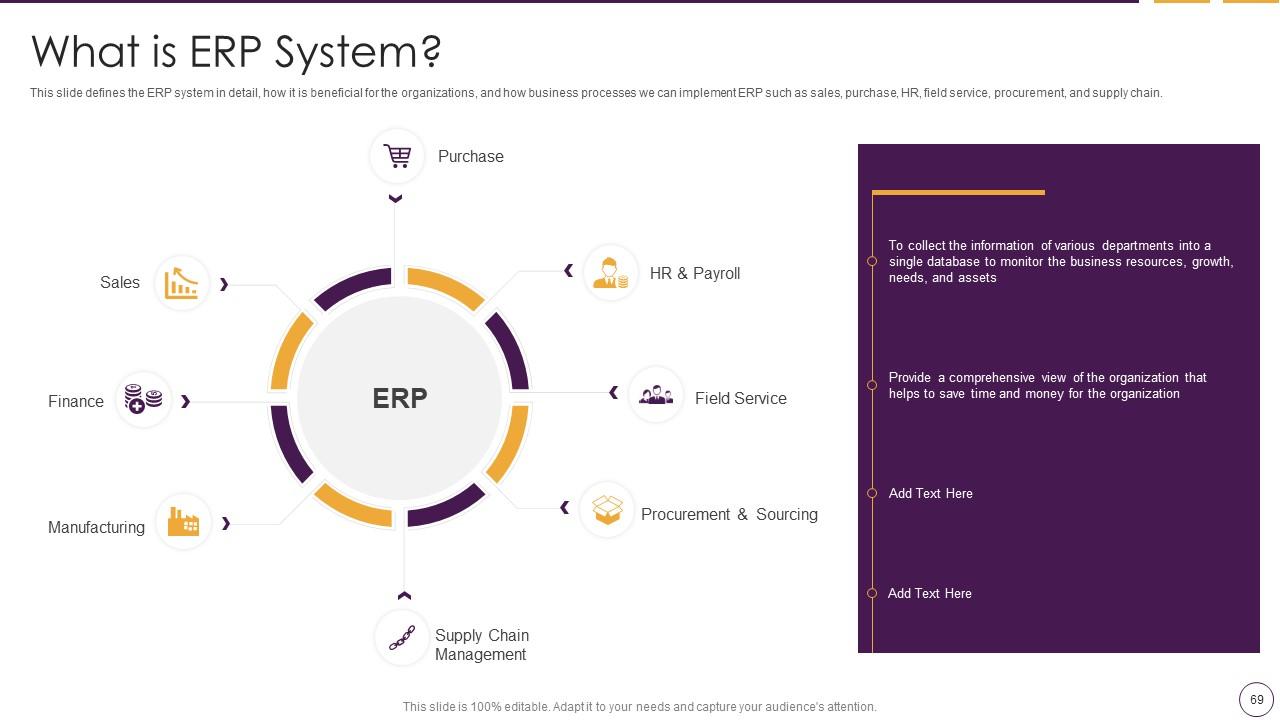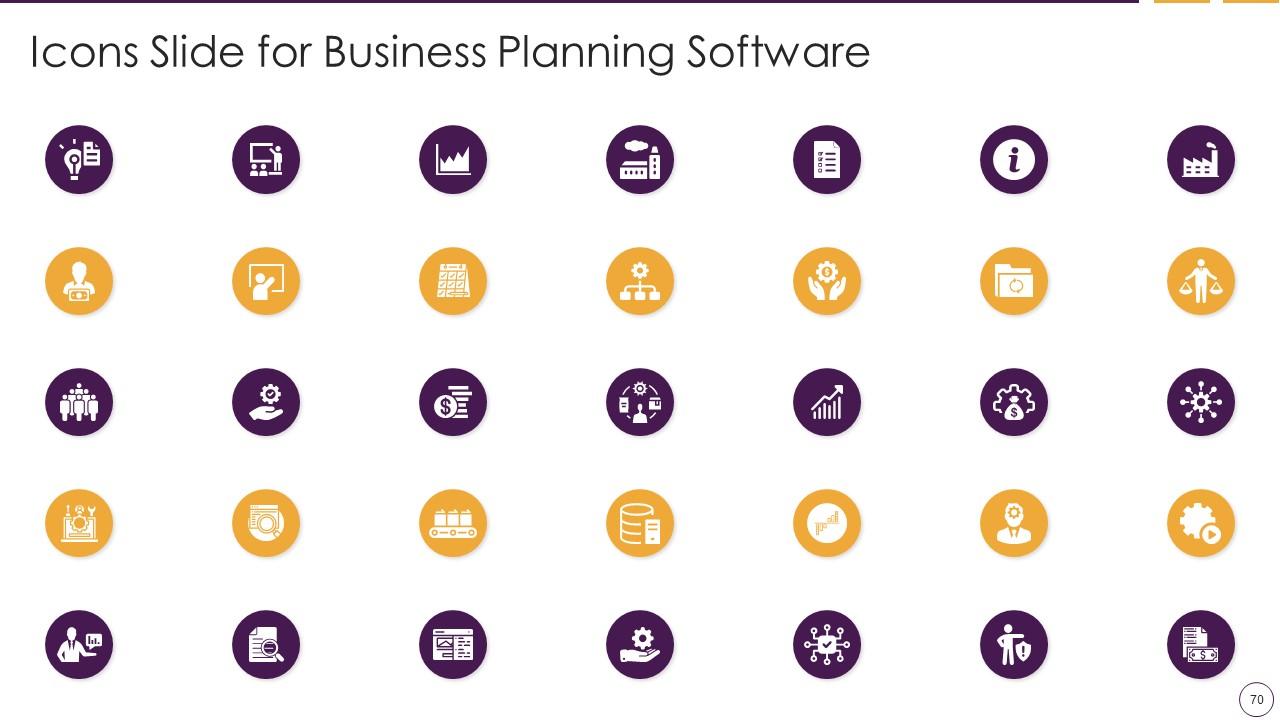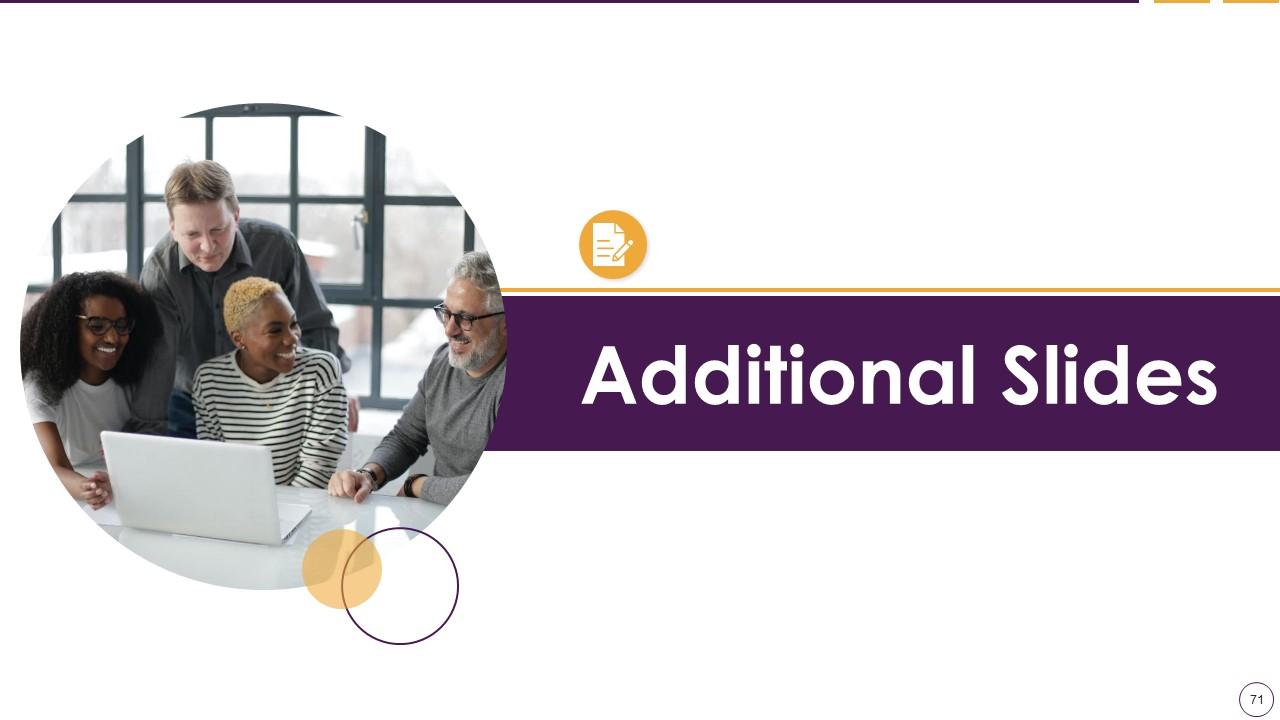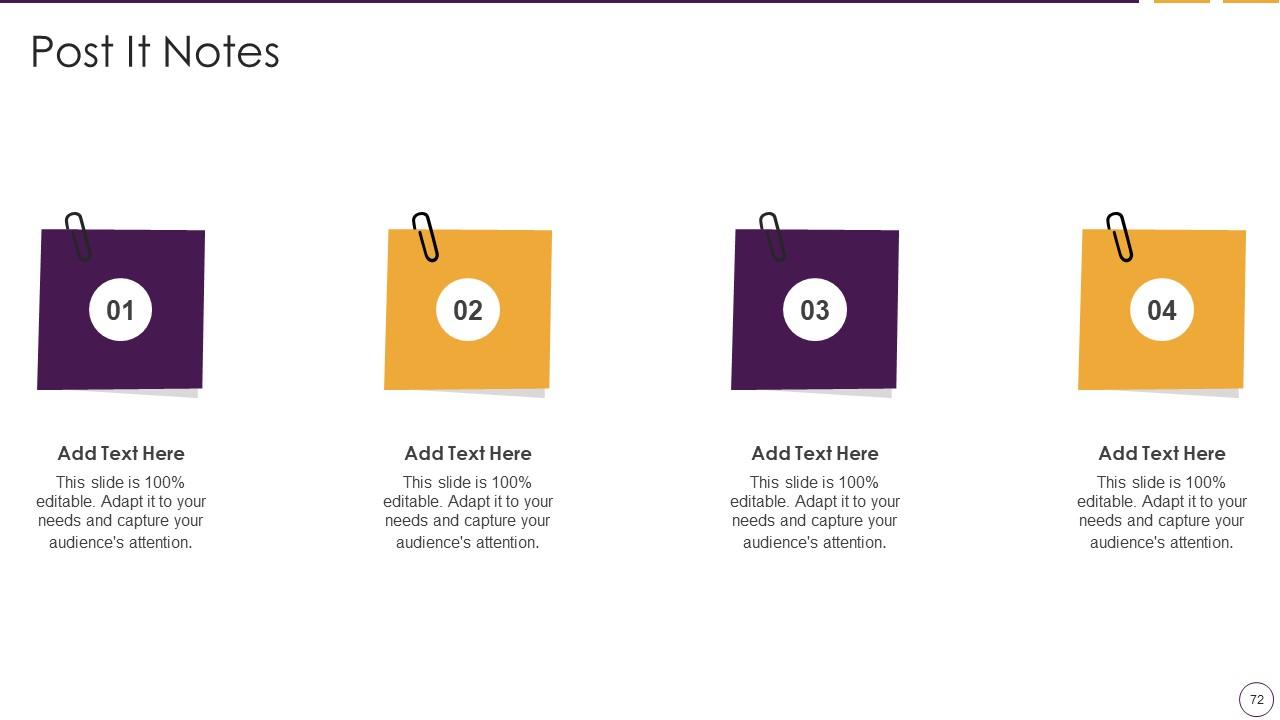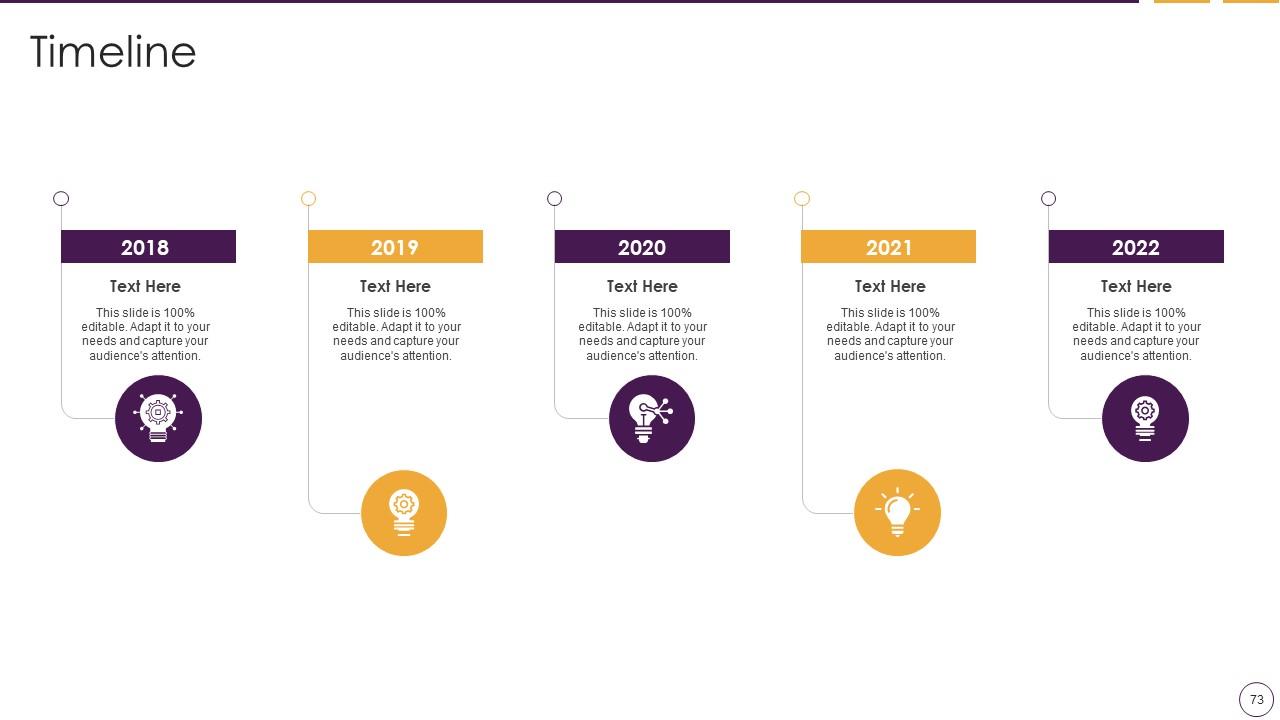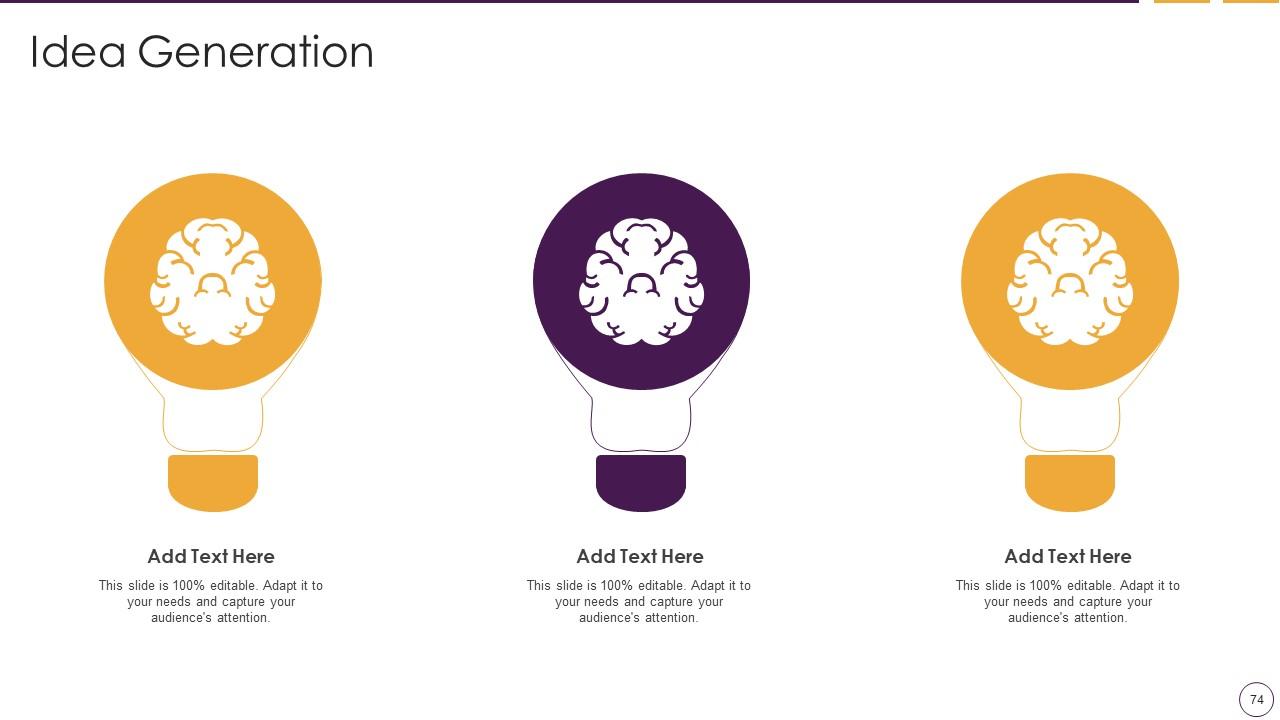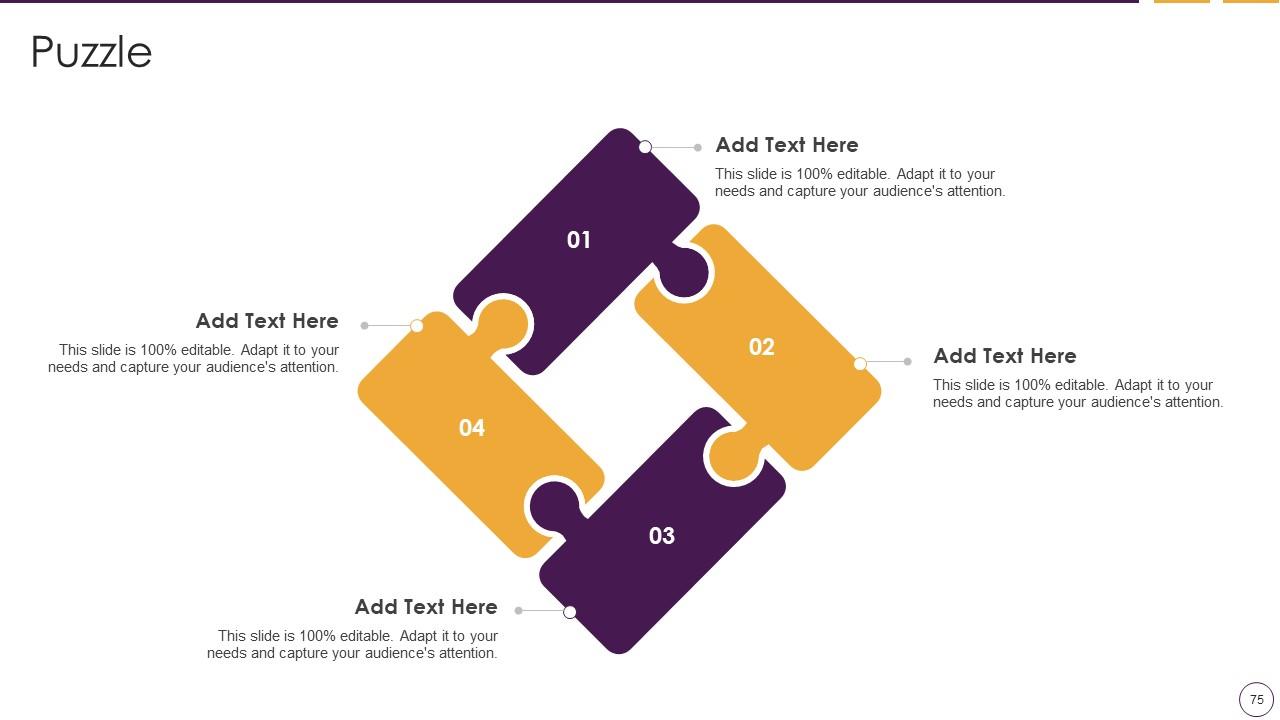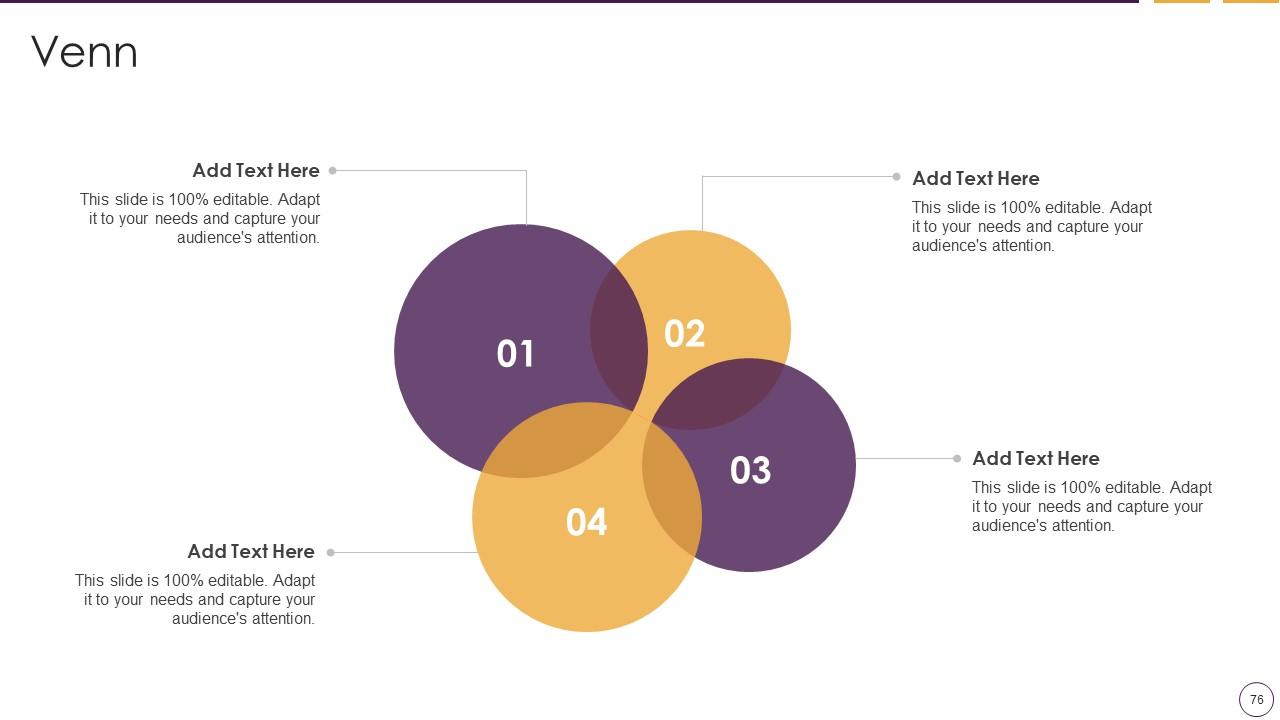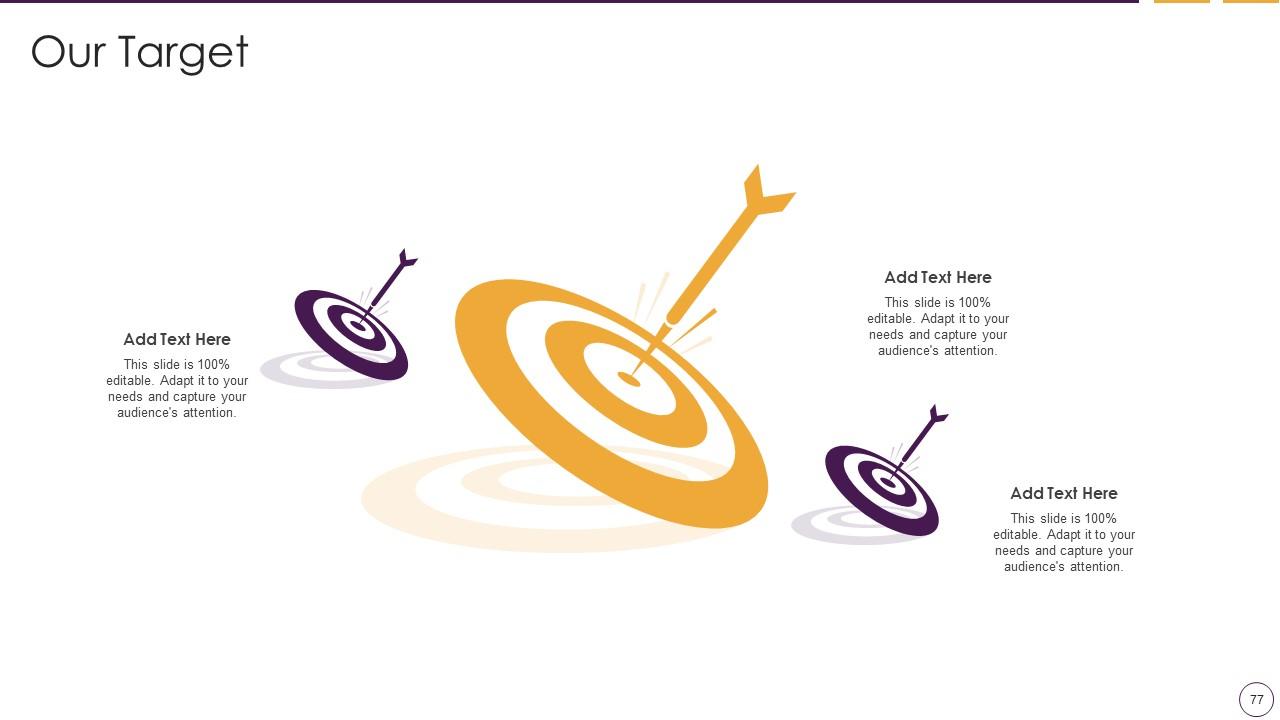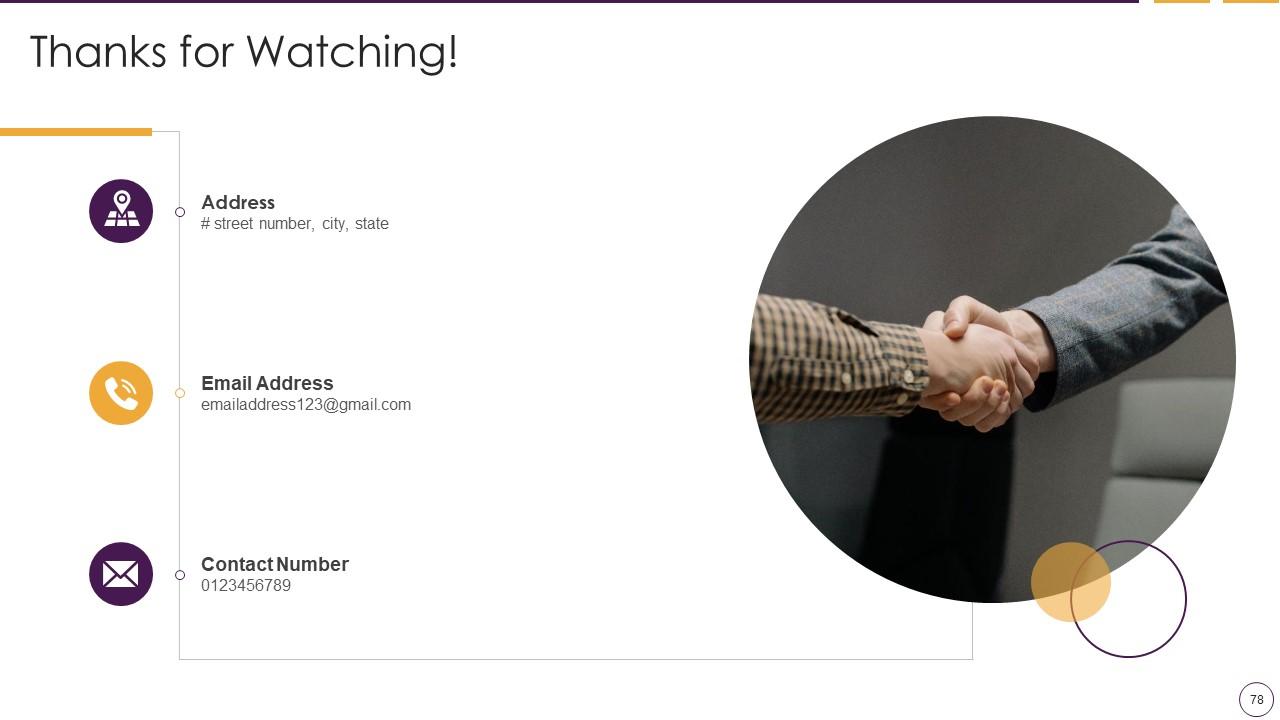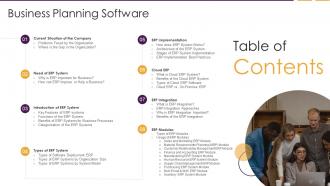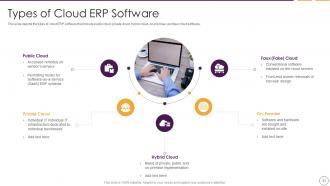Business Planning Software Powerpoint Presentation Slides
Enterprise Resource Planning is a process that companies utilize to integrate and manage their essential resources and assets. Check out our professionally designed Business Planning Software PowerPoint presentation to provide a comprehensive overview of the Enterprise Resource Planning ERP system. It elucidates details about implementing ERP systems in different departments of an organization. In this presentation, we have covered the problems faced by the company and the gap analysis with details on how the ERP system can be beneficial for overcoming this gap to achieve business goals. Moreover, this ERP system PPT illustrates ERP modules, challenges, and solutions for ERP implementation, an employee training module, a timeline for ERP implementation, and a roadmap for its integration. Further, this ready-made PPT covers a 30-60-90 days plan for implementing the ERP system and a dashboard to measure the performance of its implementation. Lastly, this resource planning presentation captures the impact on the organization after implementing the ERP system. Download our 100 percent editable and customizable template, which is also compatible with Google Slides.
Enterprise Resource Planning is a process that companies utilize to integrate and manage their essential resources and asse..
- Google Slides is a new FREE Presentation software from Google.
- All our content is 100% compatible with Google Slides.
- Just download our designs, and upload them to Google Slides and they will work automatically.
- Amaze your audience with SlideTeam and Google Slides.
-
Want Changes to This PPT Slide? Check out our Presentation Design Services
- WideScreen Aspect ratio is becoming a very popular format. When you download this product, the downloaded ZIP will contain this product in both standard and widescreen format.
-

- Some older products that we have may only be in standard format, but they can easily be converted to widescreen.
- To do this, please open the SlideTeam product in Powerpoint, and go to
- Design ( On the top bar) -> Page Setup -> and select "On-screen Show (16:9)” in the drop down for "Slides Sized for".
- The slide or theme will change to widescreen, and all graphics will adjust automatically. You can similarly convert our content to any other desired screen aspect ratio.
Compatible With Google Slides

Get This In WideScreen
You must be logged in to download this presentation.
PowerPoint presentation slides
Enthrall your audience with this Business Planning Software Powerpoint Presentation Slides. Increase your presentation threshold by deploying this well-crafted template. It acts as a great communication tool due to its well-researched content. It also contains stylized icons, graphics, visuals etc, which make it an immediate attention-grabber. Comprising seventy eight slides, this complete deck is all you need to get noticed. All the slides and their content can be altered to suit your unique business setting. Not only that, other components and graphics can also be modified to add personal touches to this prefabricated set.
People who downloaded this PowerPoint presentation also viewed the following :
Content of this Powerpoint Presentation
Slide 1: This slide introduces Business Planning Software. State Your Company Name and begin.
Slide 2: This slide states Agenda of the presentation.
Slide 3: This slide presents Table of Content for the presentation.
Slide 4: This is another slide continuing Table of Content for the presentation.
Slide 5: This slide highlights title for topics that are to be covered next in the template.
Slide 6: This slide depicts the problems faced by the company and showing the utilization of the resources.
Slide 7: This slide describes the gap in the organization and fields to work upon.
Slide 8: This slide highlights title for topics that are to be covered next in the template.
Slide 9: This slide represents the need for the ERP system in the business.
Slide 10: This slide defines how an ERP system can improve a business.
Slide 11: This slide highlights title for topics that are to be covered next in the template.
Slide 12: This slide depicts the ERP system's essential features, covering data centralization, consistent user interface, etc.
Slide 13: This slide represents the ERP system's primary functions, covering sales management, finance & accounting, etc.
Slide 14: This slide showcases Benefits of ERP Systems for Business Processes.
Slide 15: This slide shows Categorization of the ERP System.
Slide 16: This is another slide continuing Categorization of the ERP System.
Slide 17: This slide highlights title for topics that are to be covered next in the template.
Slide 18: This slide shows Types of Software Deployment ERP.
Slide 19: This slide presents Types of ERP Systems by Organization Size.
Slide 20: This slide covers the ERP systems based on the system model, and it includes best-of-breed, modular ERP, etc.
Slide 21: This slide highlights title for topics that are to be covered next in the template.
Slide 22: This slide shows how does ERP system works.
Slide 23: This is another slide continuing how the ERP system works and how data of different departments are stored.
Slide 24: This slide shows the architecture of the ERP system and what tasks are performed at each level of ERP implementation.
Slide 25: This slide presents Stages of ERP System Implementation.
Slide 26: This slide describes the best practices to implement the ERP system in the organization.
Slide 27: This slide represents the best practices of ERP implementation.
Slide 28: This slide highlights title for topics that are to be covered next in the template.
Slide 29: This slide defines the cloud ERP system, how data is stored at cloud servers and accessed through web browsers.
Slide 30: This slide describes the various benefits of cloud ERP systems.
Slide 31: This slide represents Types of Cloud ERP Software.
Slide 32: This slide showcases how a cloud ERP system differs from an on-premise system in hardware costs.
Slide 33: This slide highlights title for topics that are to be covered next in the template.
Slide 34: This slide defines the ERP integration and how different applications or tools of other departments are collaborated at a single platform.
Slide 35: This slide represents the ERP integration approaches that include point-to-point integration, enterprise service bus, etc.
Slide 36: This slide describes why ERP integration is essential in the organization.
Slide 37: This slide represents the benefits of the ERP integration system.
Slide 38: This slide highlights title for topics that are to be covered next in the template.
Slide 39: This slide defines the various types of ERP modules, and it covers sales and marketing, project management, etc.
Slide 40: This slide depicts the sales and marketing ERP module.
Slide 41: This slide represents Material Requirements Planning (MRP) Module.
Slide 42: This slide showcases Customer Relationship Management ERP Module.
Slide 43: This slide shows Finance and Accounting ERP Module.
Slide 44: This slide defines the manufacturing ERP module that covers the purchase of raw material, availability of stock in inventory, etc.
Slide 45: This slide describes the human resource ERP module.
Slide 46: This slide shows Supply Chain Management ERP Module.
Slide 47: This slide depicts the purchasing ERP module and how it is beneficial to track activitie
Slide 48: This slide represents the bulk email and SMS ERP module and how it is beneficial to send emails.
Slide 49: This slide defines the inventory ERP module, and it helps to manage the tasks of purchasing department.
Slide 50: This slide highlights title for topics that are to be covered next in the template.
Slide 51: This slide presents Challenges of ERP System Implementation.
Slide 52: This slide displays Solutions for Successful Implementation of ERP System.
Slide 53: This slide highlights title for topics that are to be covered next in the template.
Slide 54: This slide depicts the ERP training program including trainer name, training, schedule, etc.
Slide 55: This is another slide continuing ERP System Training Program.
Slide 56: This slide showcases Checklist for Successful ERP Implementation.
Slide 57: This slide displays RACI Matrix for ERP Implementation.
Slide 58: This slide highlights title for topics that are to be covered next in the template.
Slide 59: This slide represents Timeline to Implement ERP System.
Slide 60: This slide highlights title for topics that are to be covered next in the template.
Slide 61: This slide showcases Roadmap to Integrate ERP System.
Slide 62: This slide highlights title for topics that are to be covered next in the template.
Slide 63: This slide shows 30-60-90 Days Plan of Implementing ERP System.
Slide 64: This slide highlights title for topics that are to be covered next in the template.
Slide 65: This slide presents Dashboard to Measure Performance of ERP Implementation.
Slide 66: This slide highlights title for topics that are to be covered next in the template.
Slide 67: This slide displays Impact on the Organization after Implementing ERP Systems.
Slide 68: This slide highlights title for topics that are to be covered next in the template.
Slide 69: This slide defines the ERP system in detail, how it is beneficial for the organizations.
Slide 70: This slide displays Icons for Business Planning Software.
Slide 71: This slide is titled as Additional Slides for moving forward.
Slide 72: This slide shows Post It Notes. Post your important notes here.
Slide 73: This is a Timeline slide. Show data related to time intervals here.
Slide 74: This is an Idea Generation slide to state a new idea or highlight information, specifications etc.
Slide 75: This slide contains Puzzle with related icons and text.
Slide 76: This slide depicts Venn diagram with text boxes.
Slide 77: This is Our Target slide. State your targets here.
Slide 78: This is a Thank You slide with address, contact numbers and email address.
Business Planning Software Powerpoint Presentation Slides with all 83 slides:
Use our Business Planning Software Powerpoint Presentation Slides to effectively help you save your valuable time. They are readymade to fit into any presentation structure.
FAQs
The ERP (Enterprise Resource Planning) system helps in centralizing the data, provides a consistent user interface, and assists in integrating various business processes across departments.
The primary functions of an ERP (Enterprise Resource Planning) system include sales management, finance and accounting, inventory management, human resource management, and supply chain management.
The benefits of using ERP (Enterprise Resource Planning) systems for business processes include increased efficiency and productivity, improved data accuracy, better decision-making capabilities, streamlined business processes, and reduced operational costs.
The different types of ERP (Enterprise Resource Planning) systems based on organization size include small business ERP, mid-market ERP, and enterprise ERP.
Cloud ERP is an ERP (Enterprise Resource Planning) system that stores data on cloud servers and is accessed through web browsers. The benefits of cloud ERP systems include lower hardware costs, increased accessibility and scalability, improved security, and better disaster recovery capabilities.
-
Unique research projects to present in meeting.
-
“Excellent information with easy access.”


